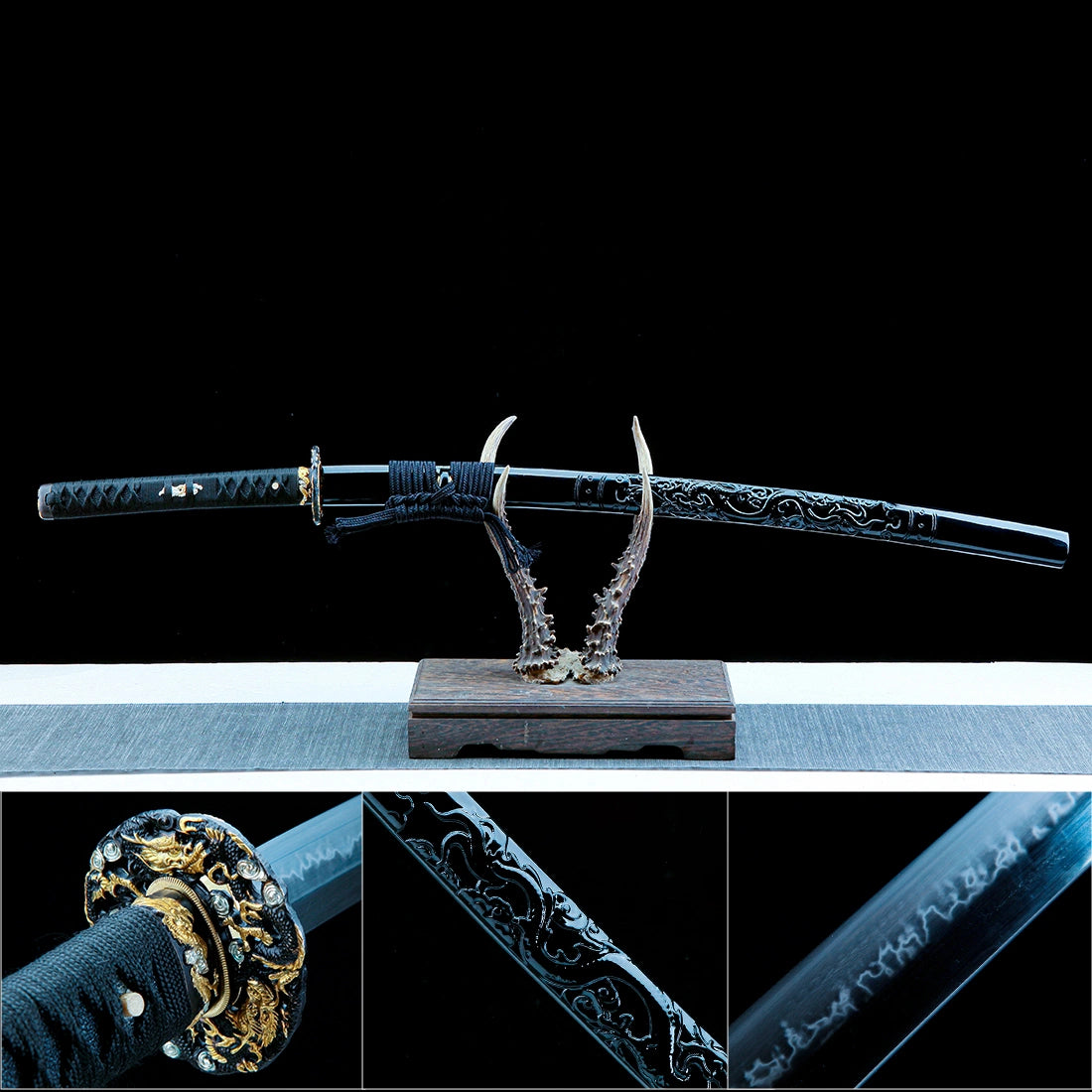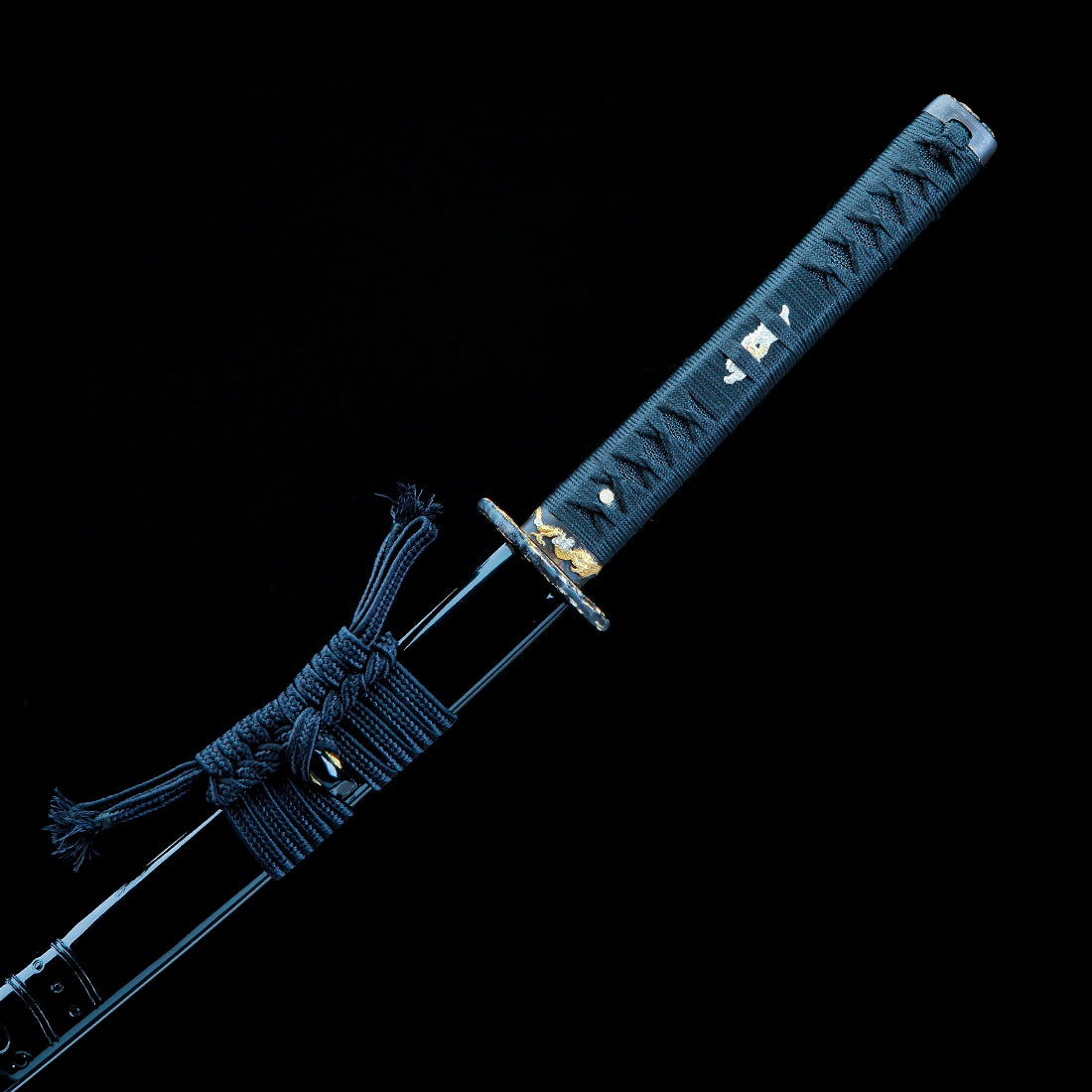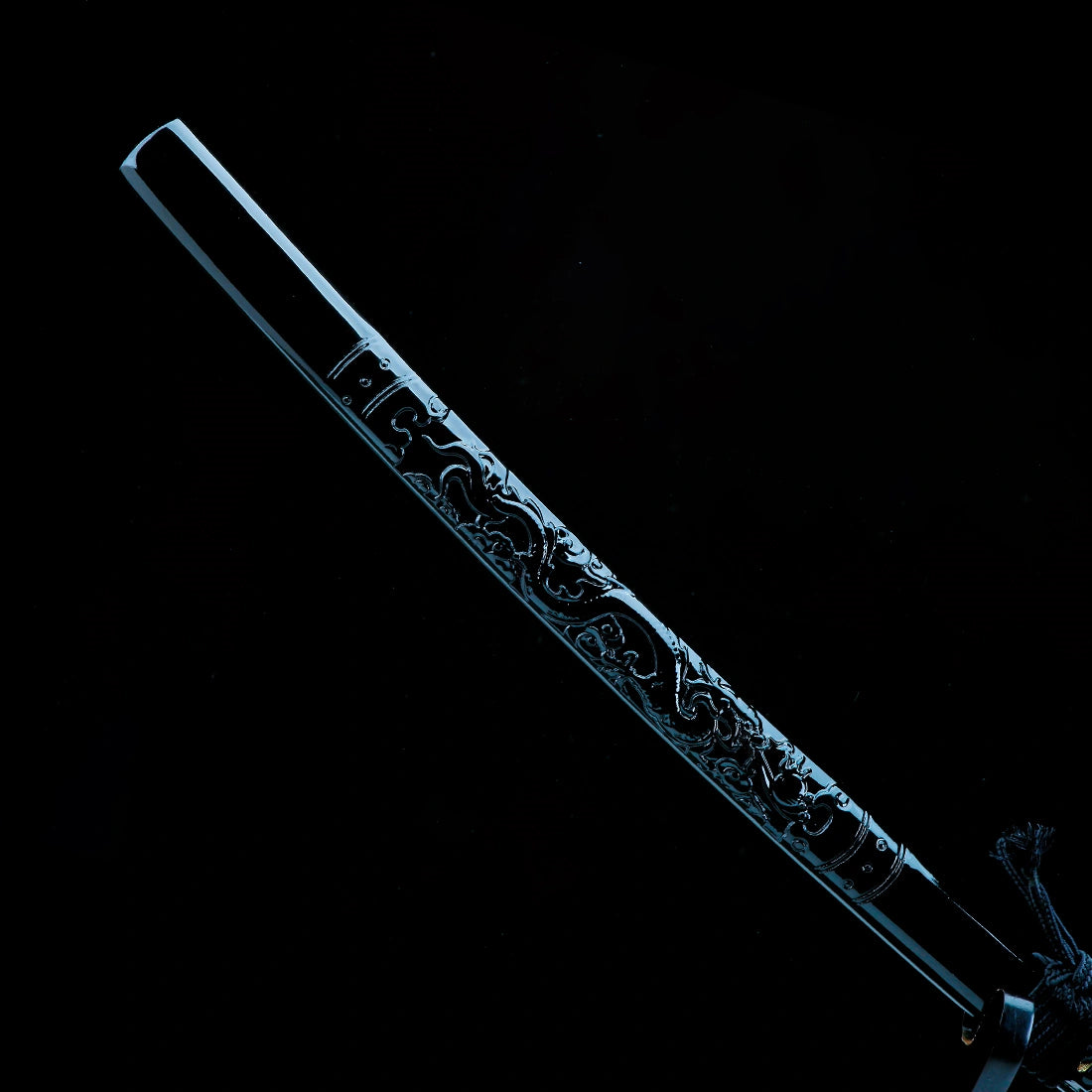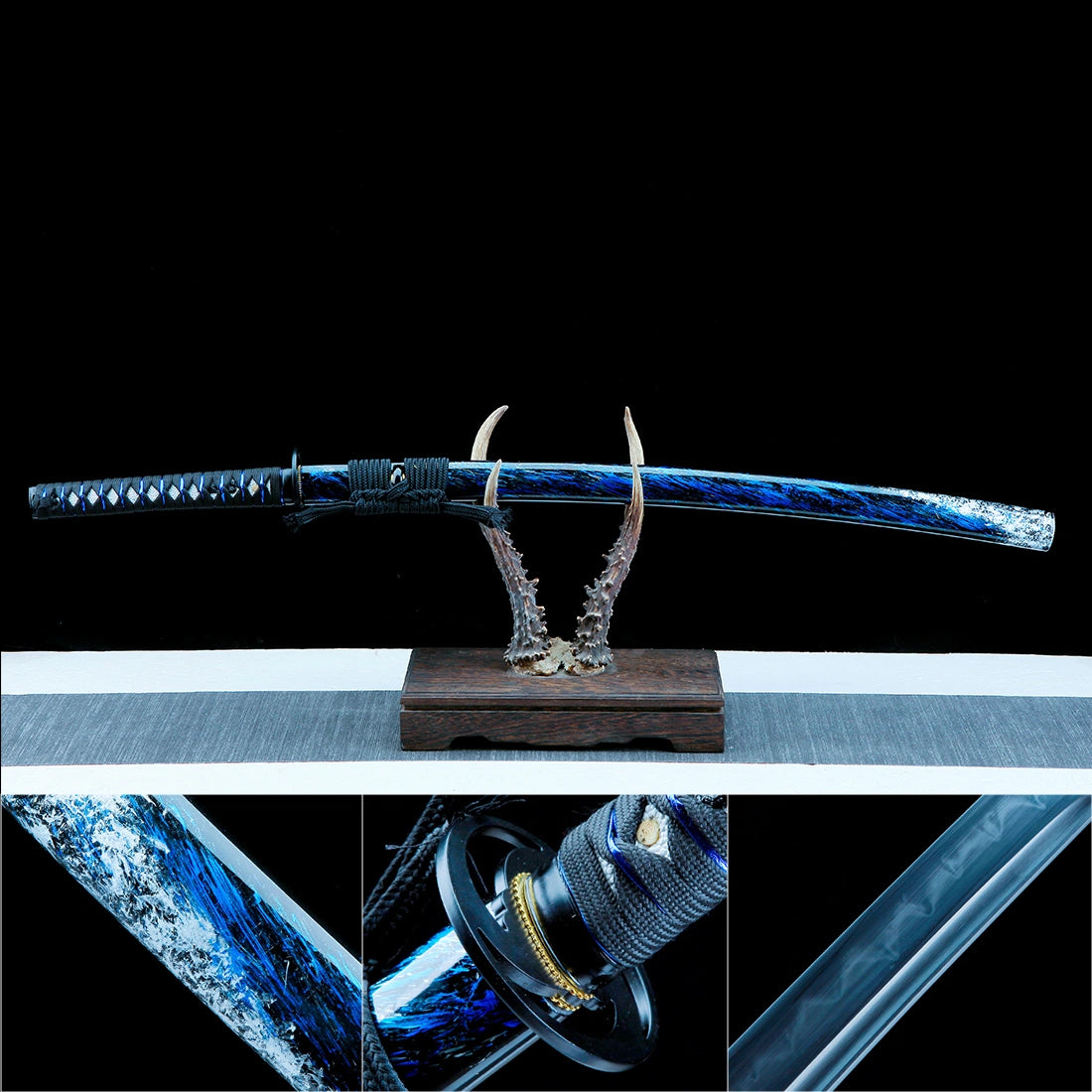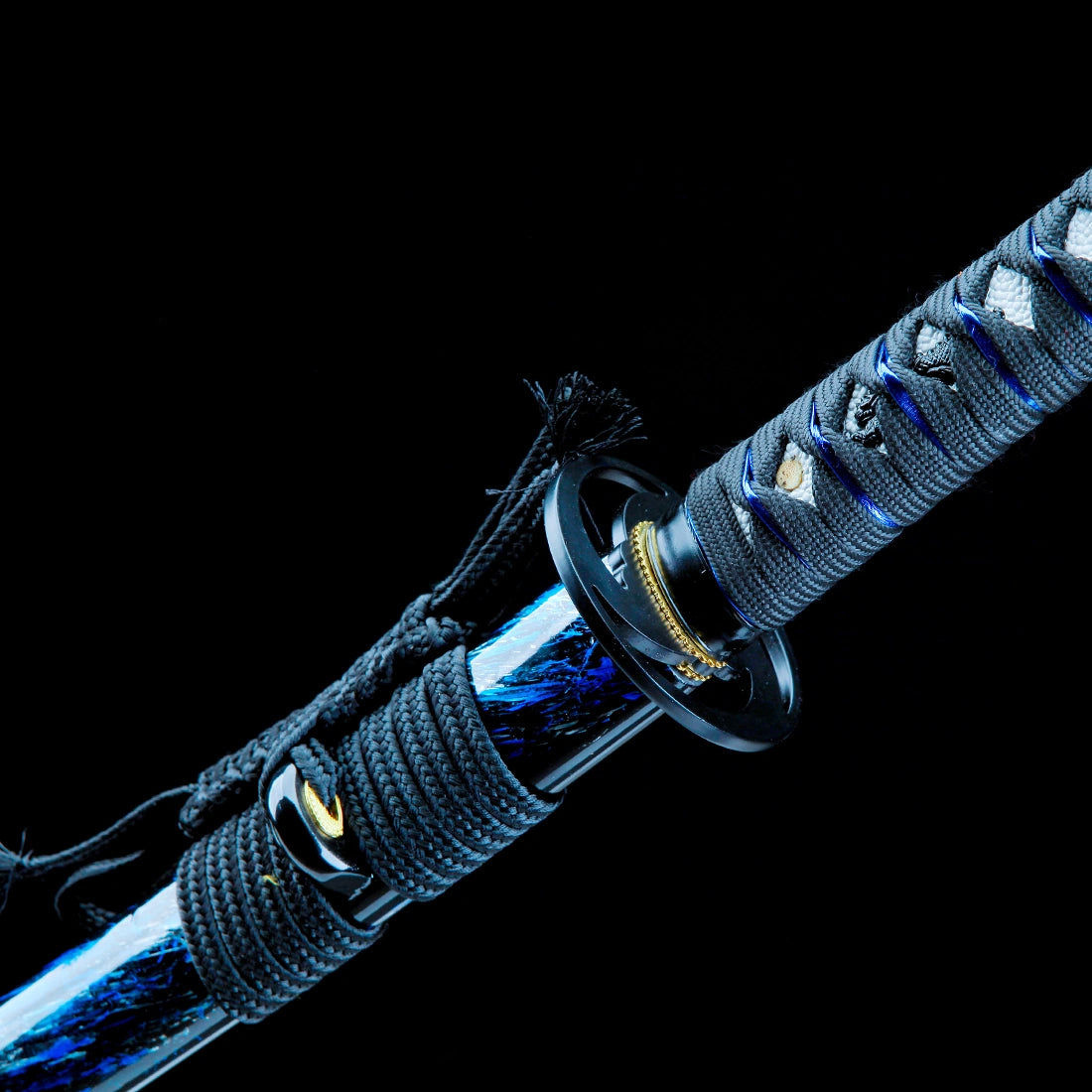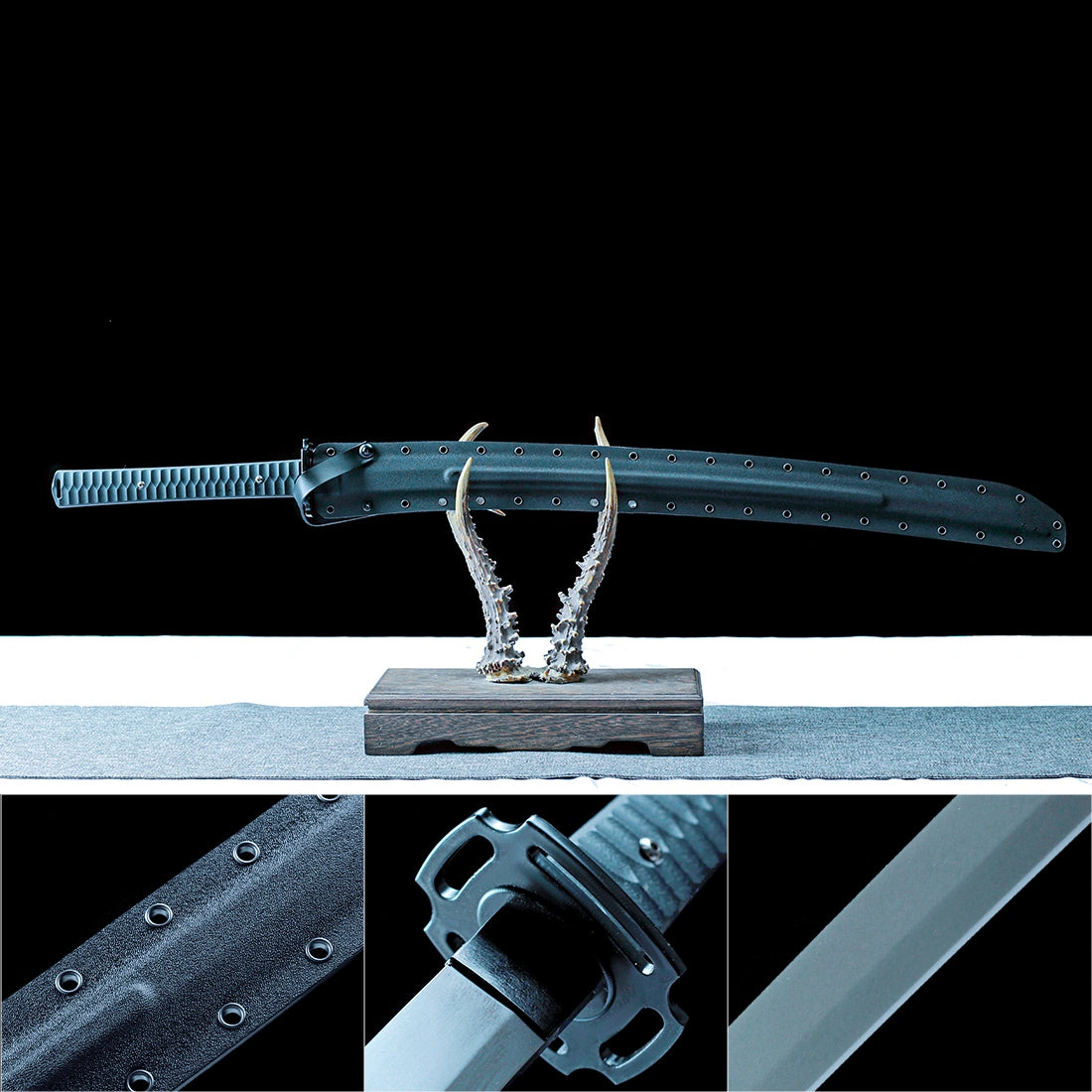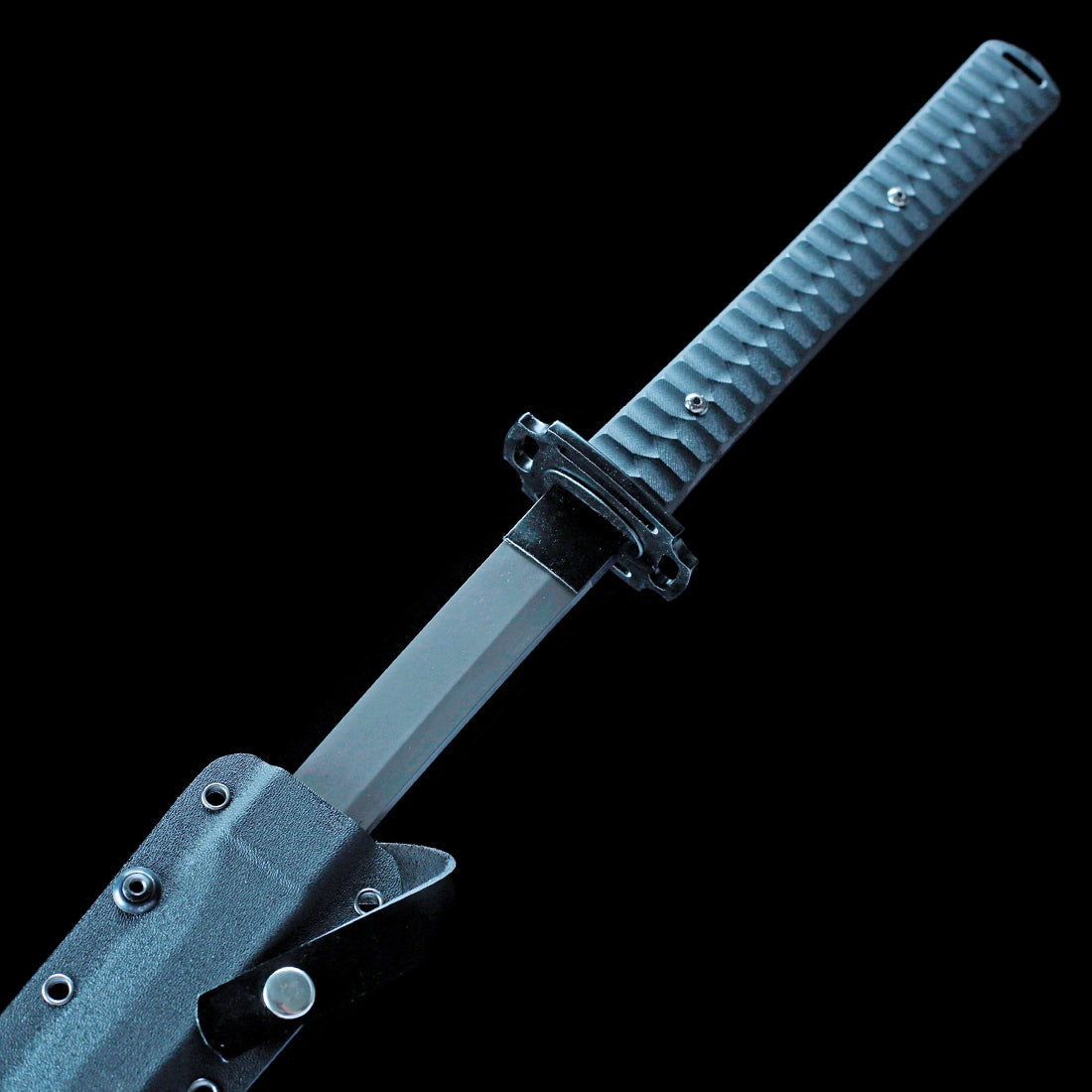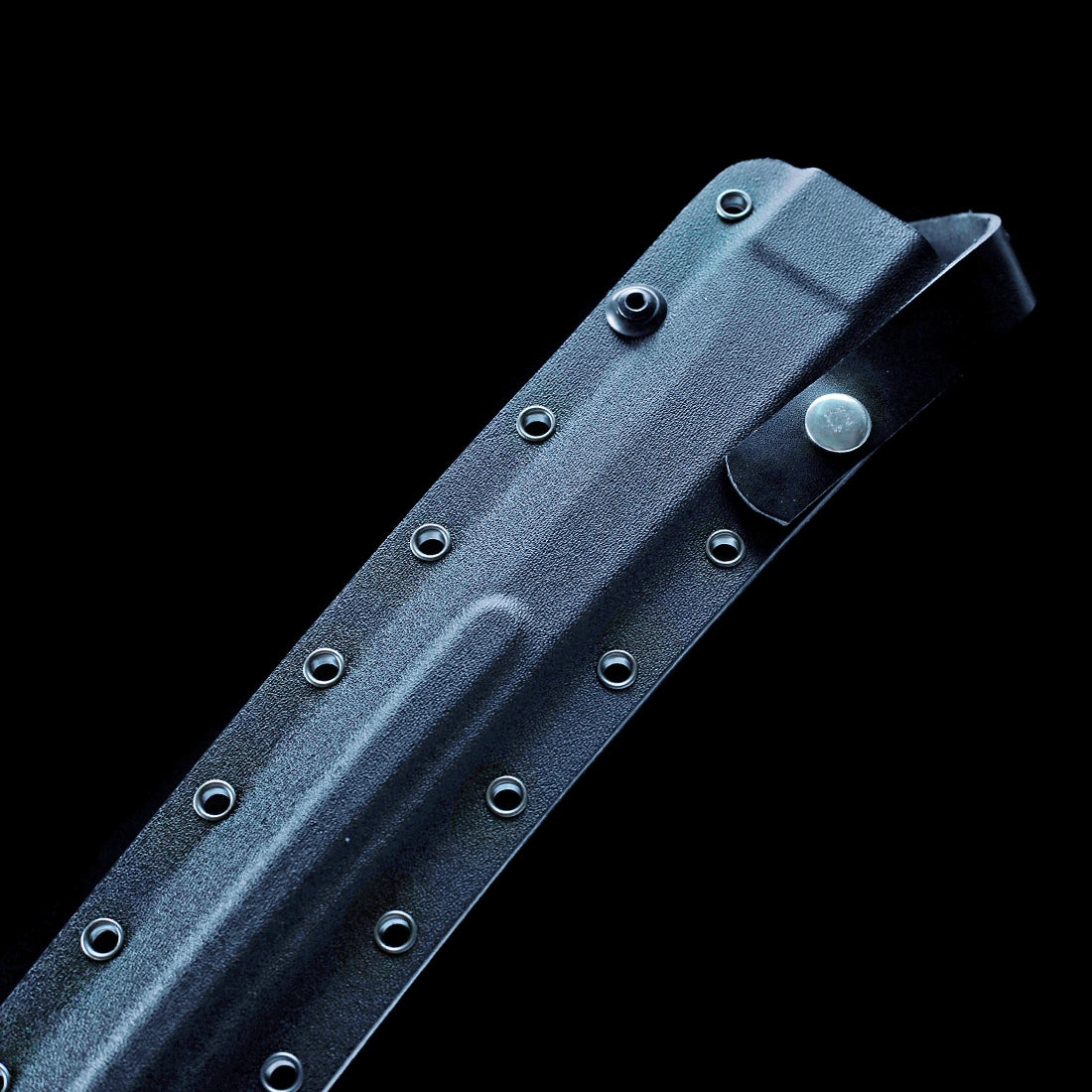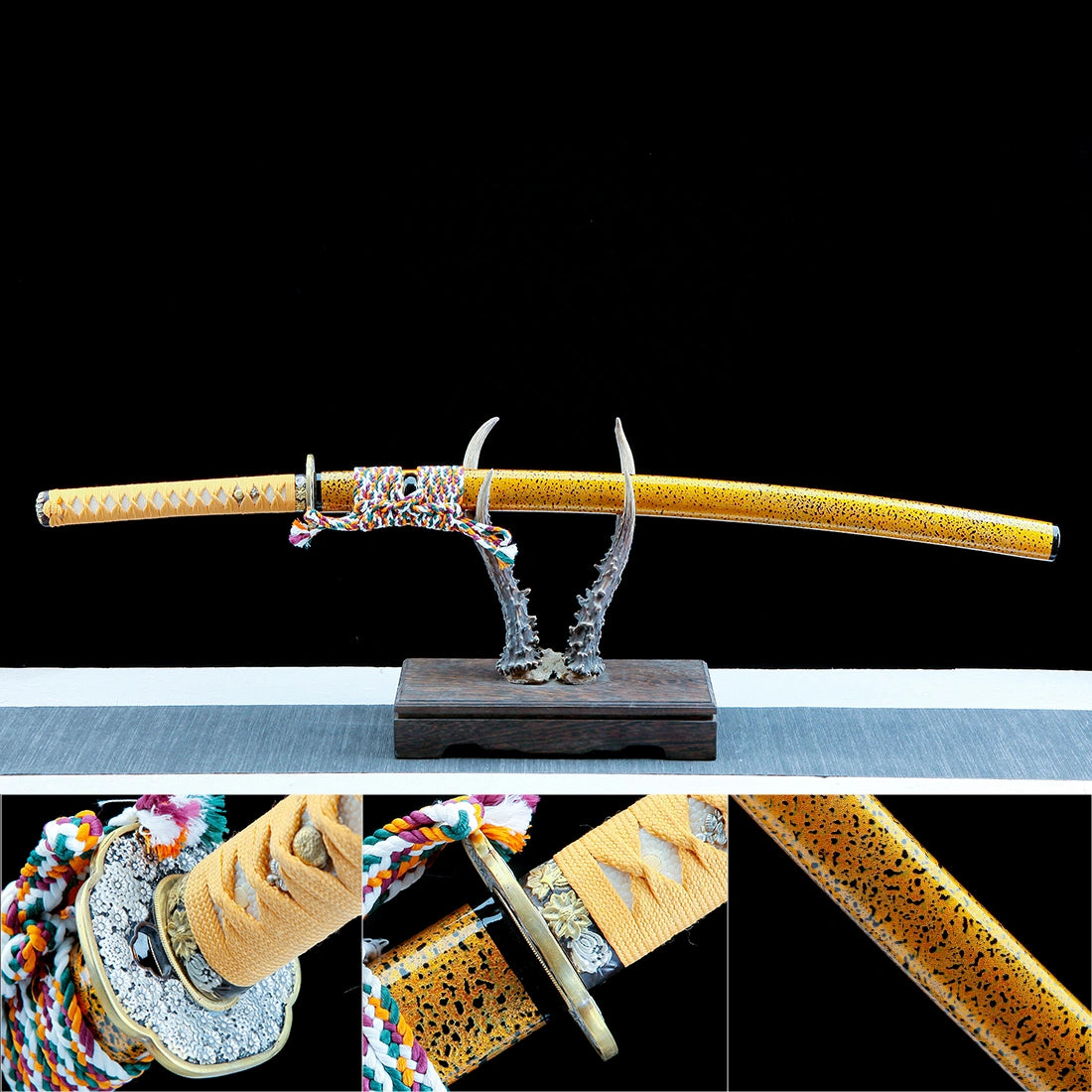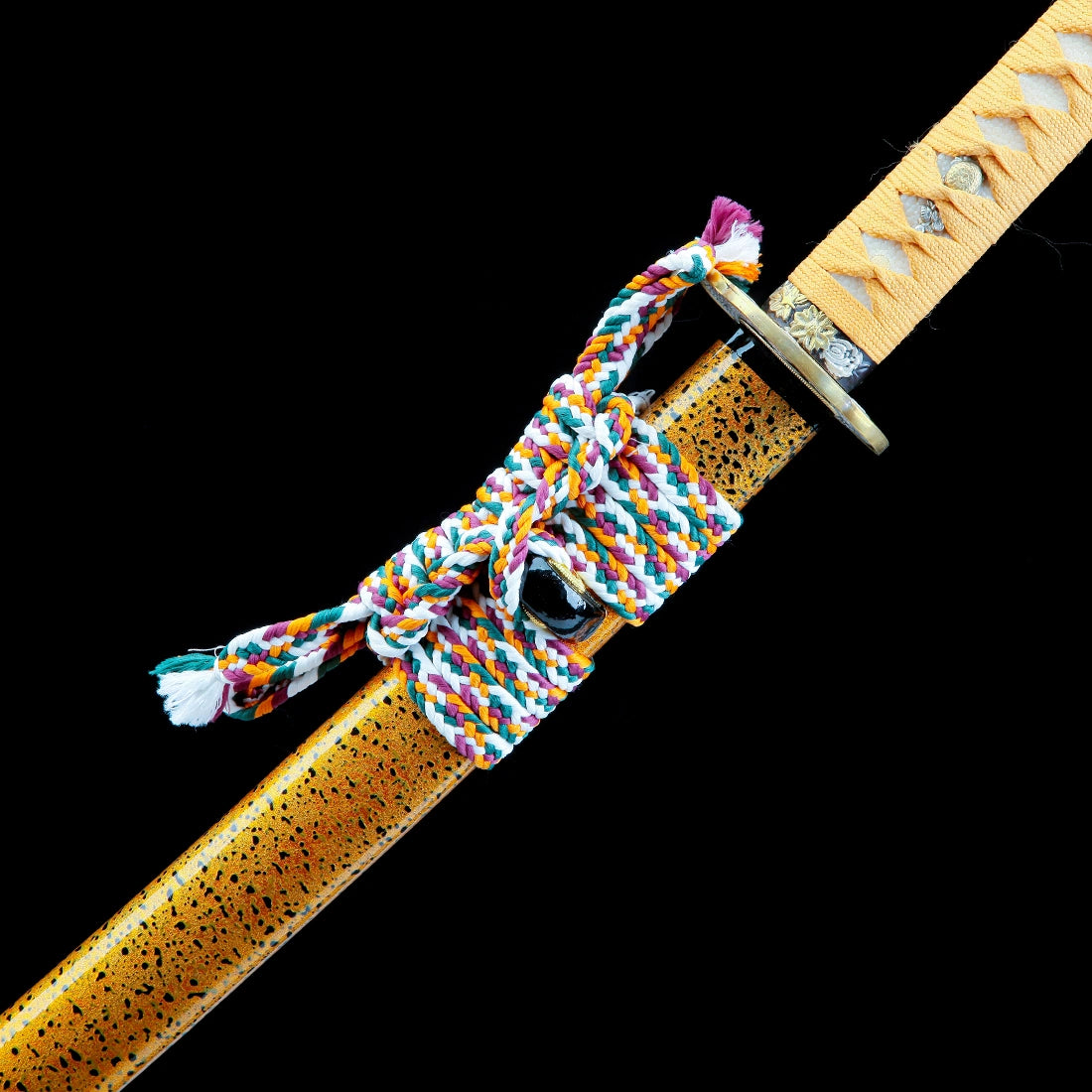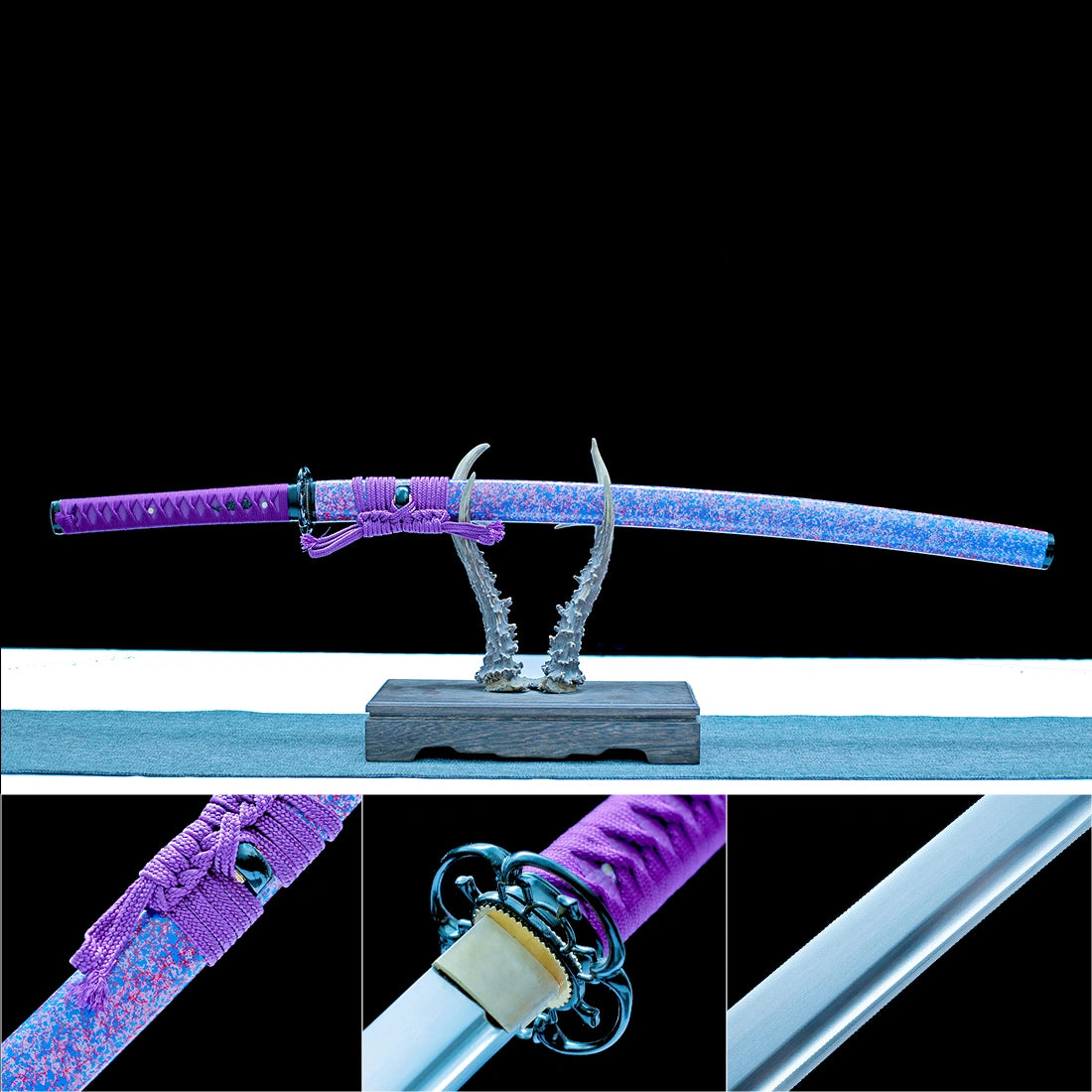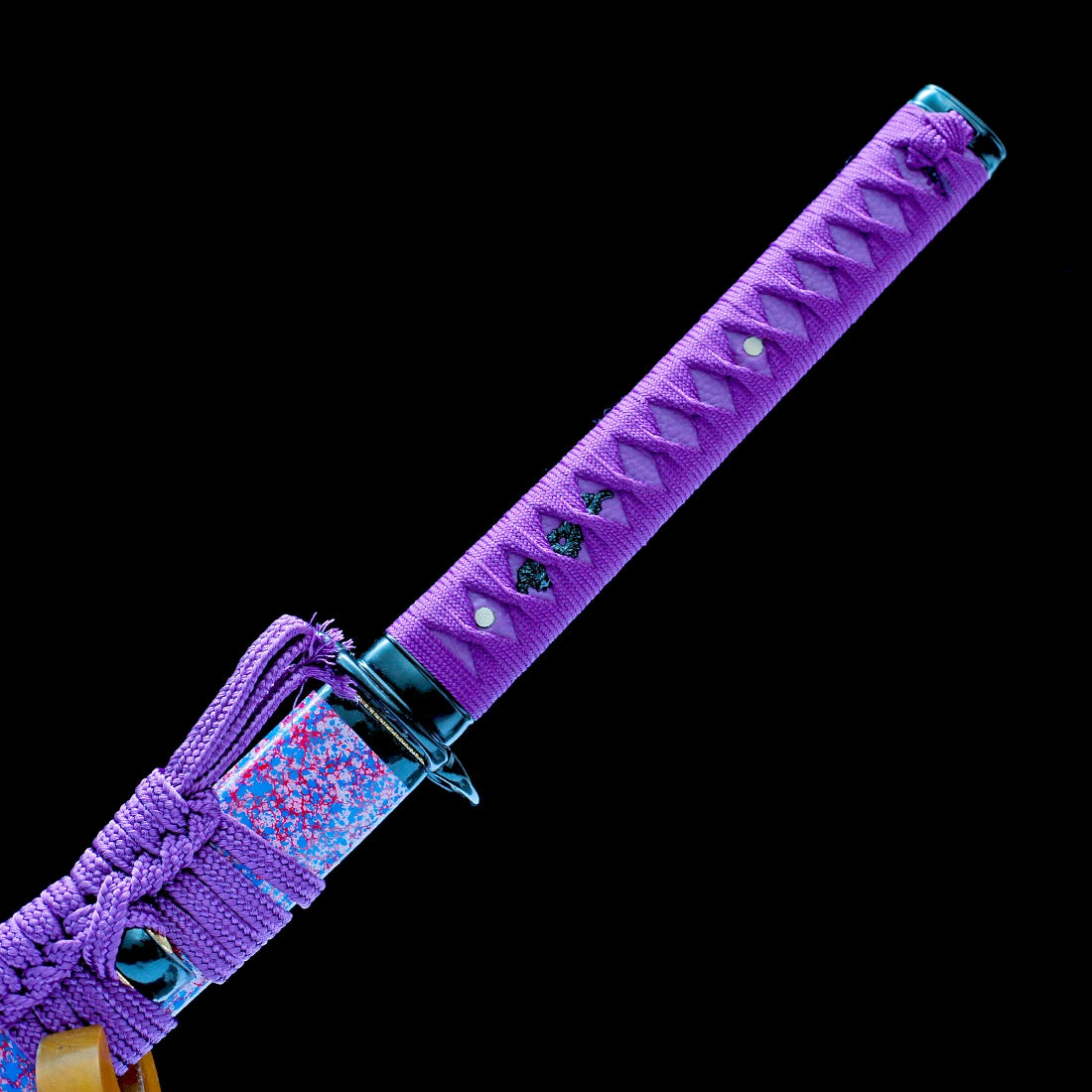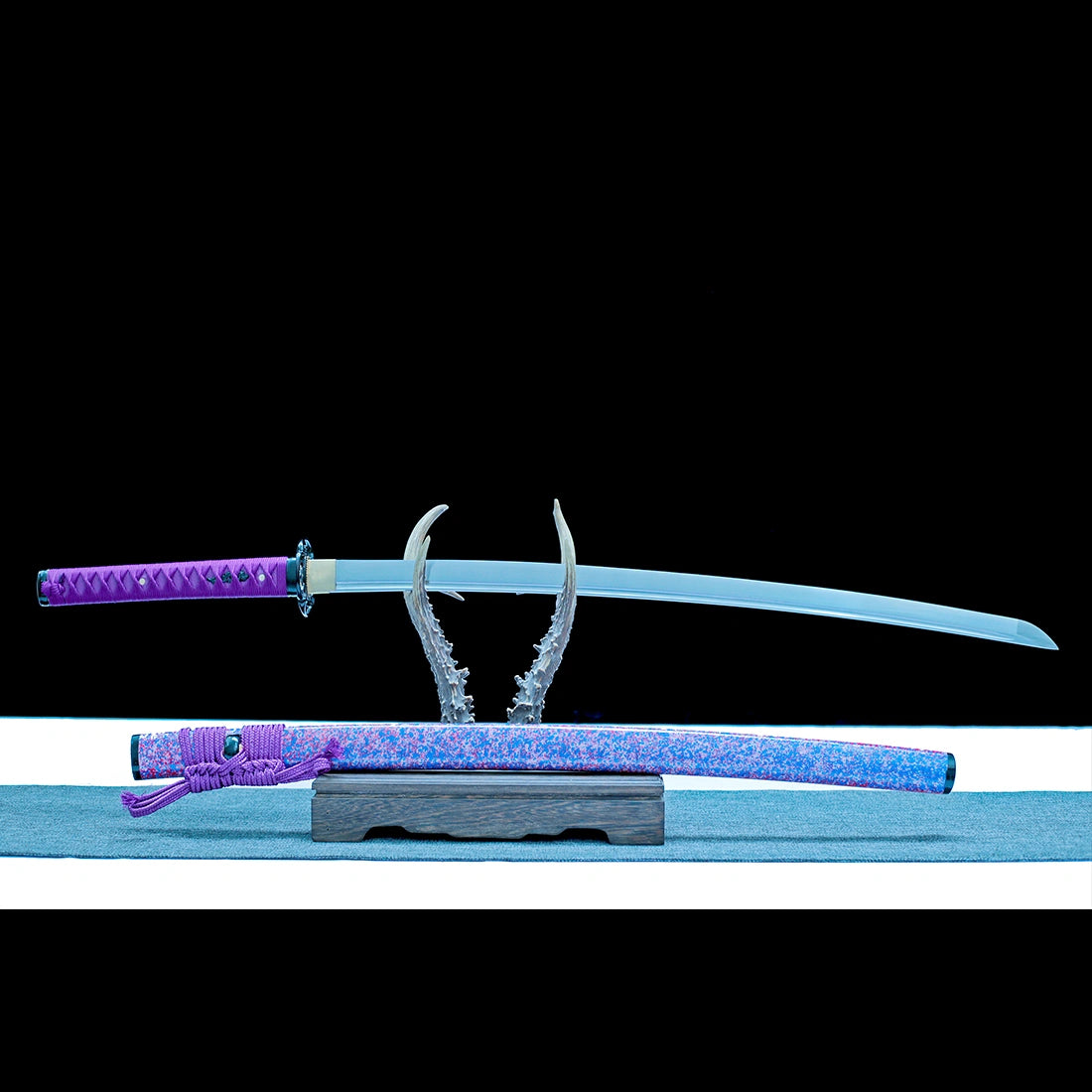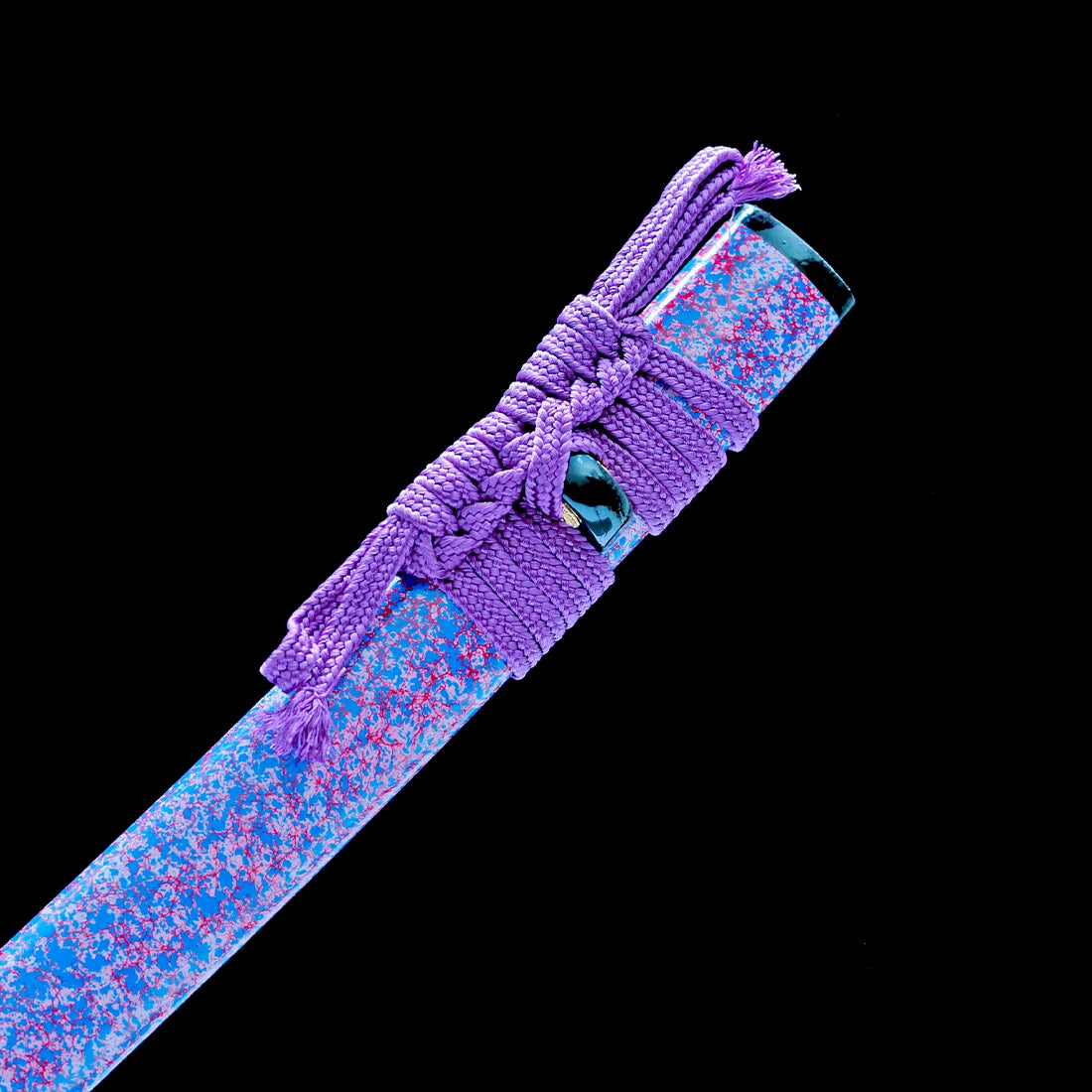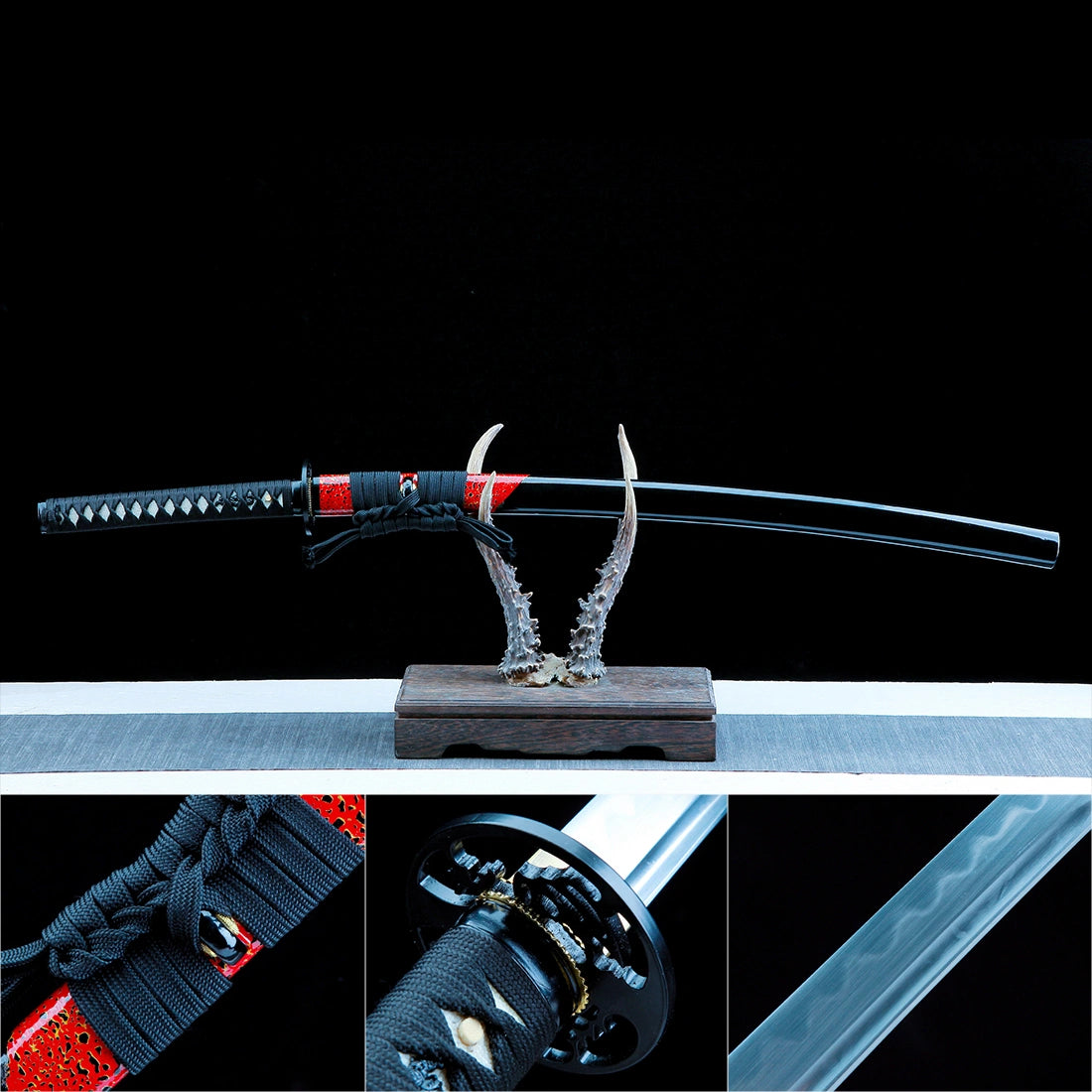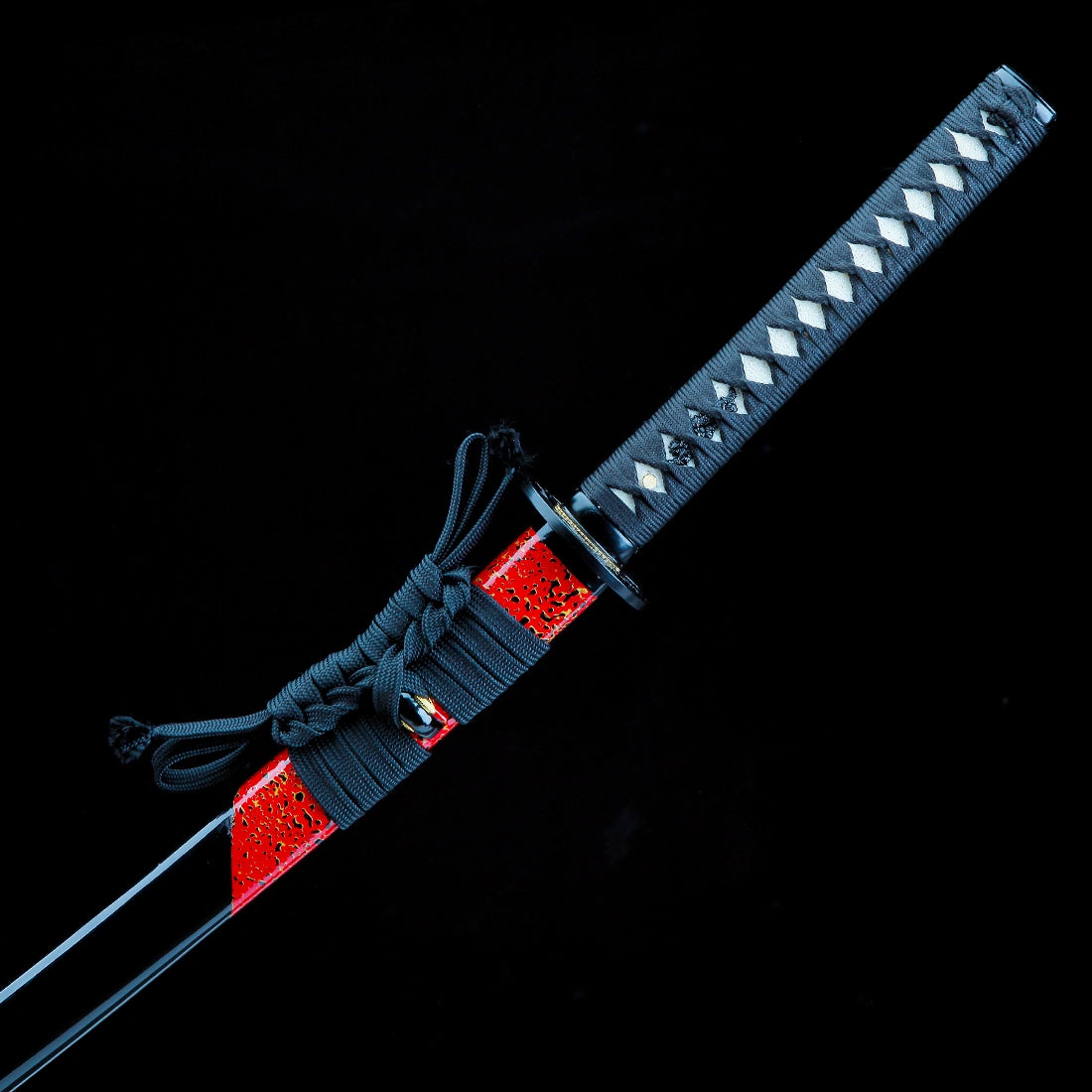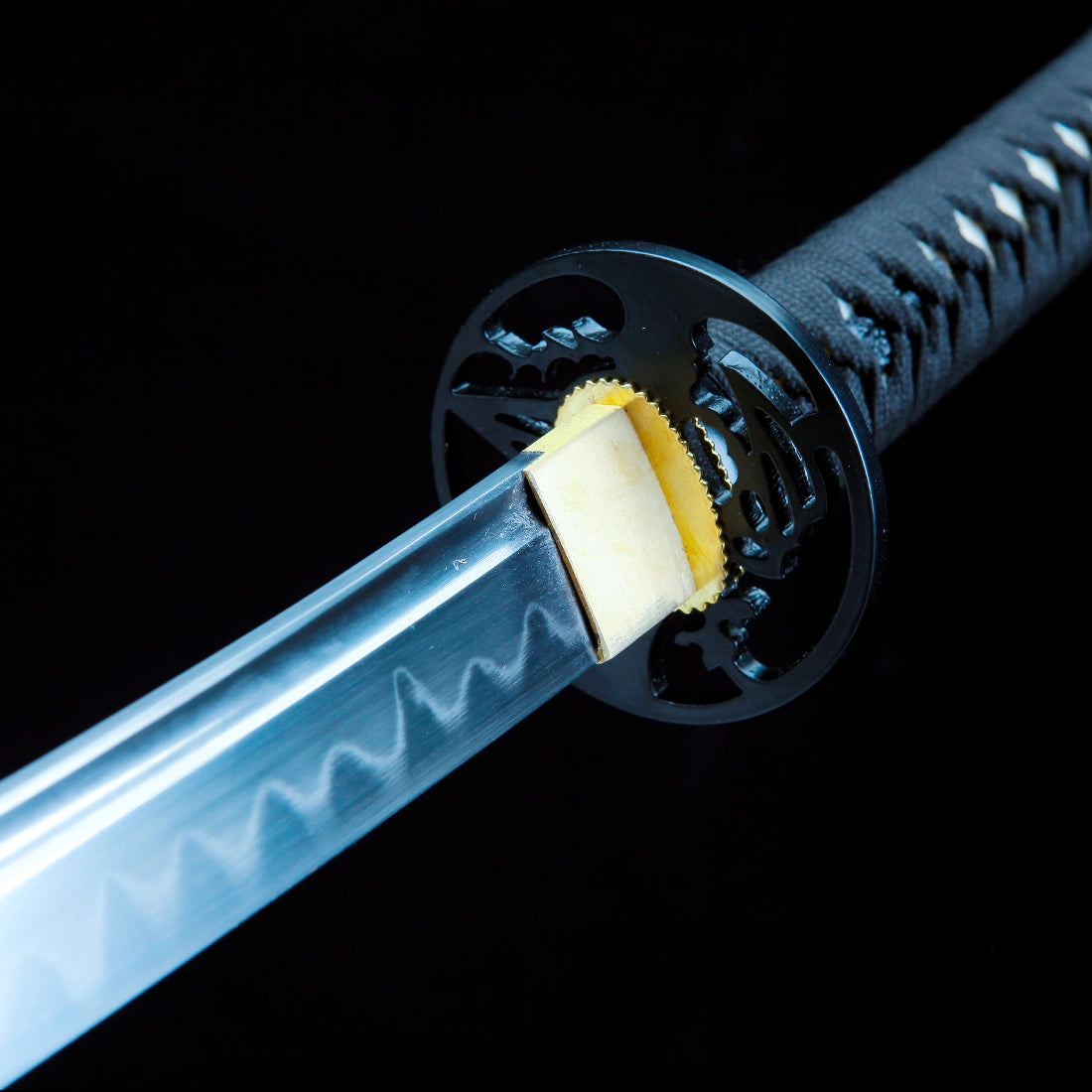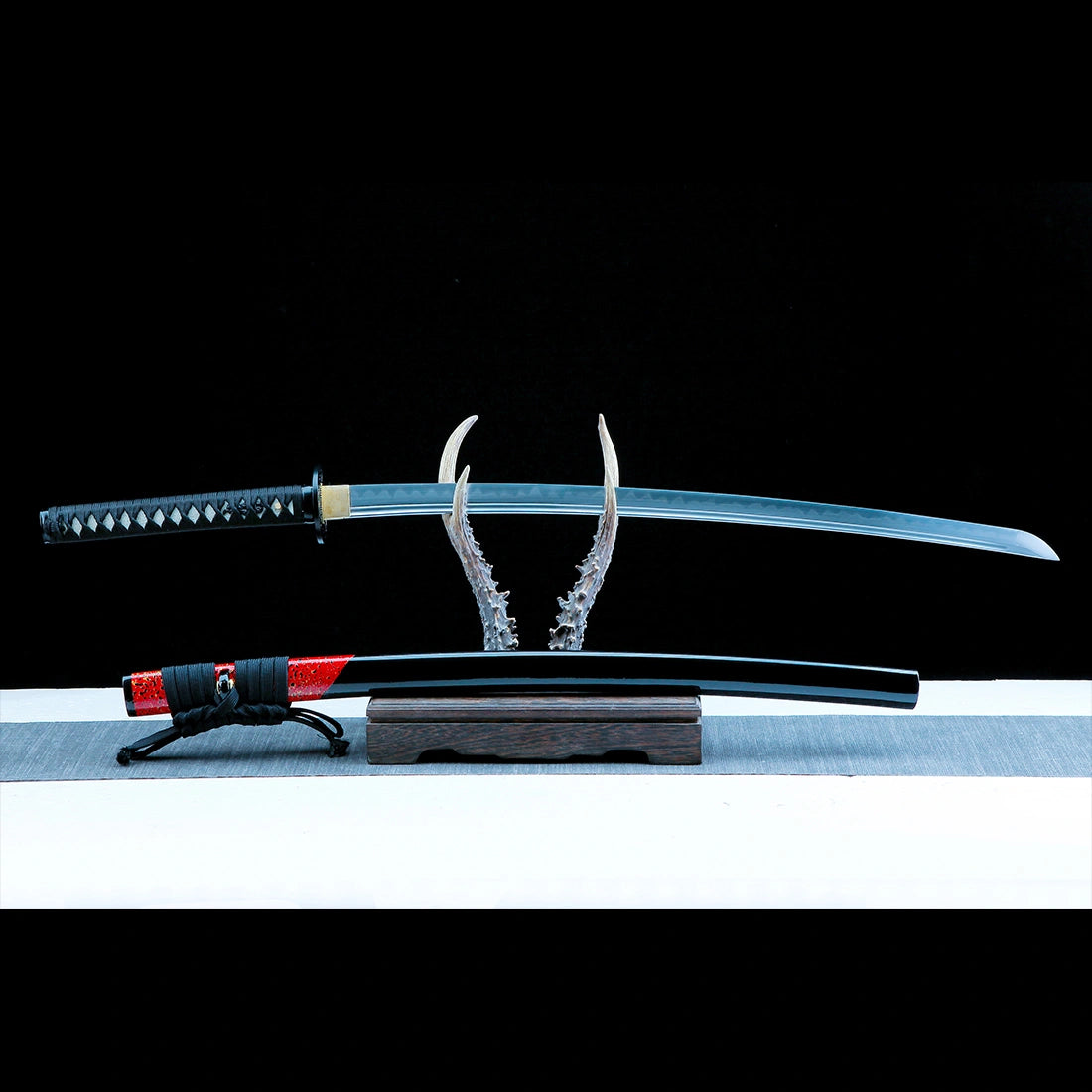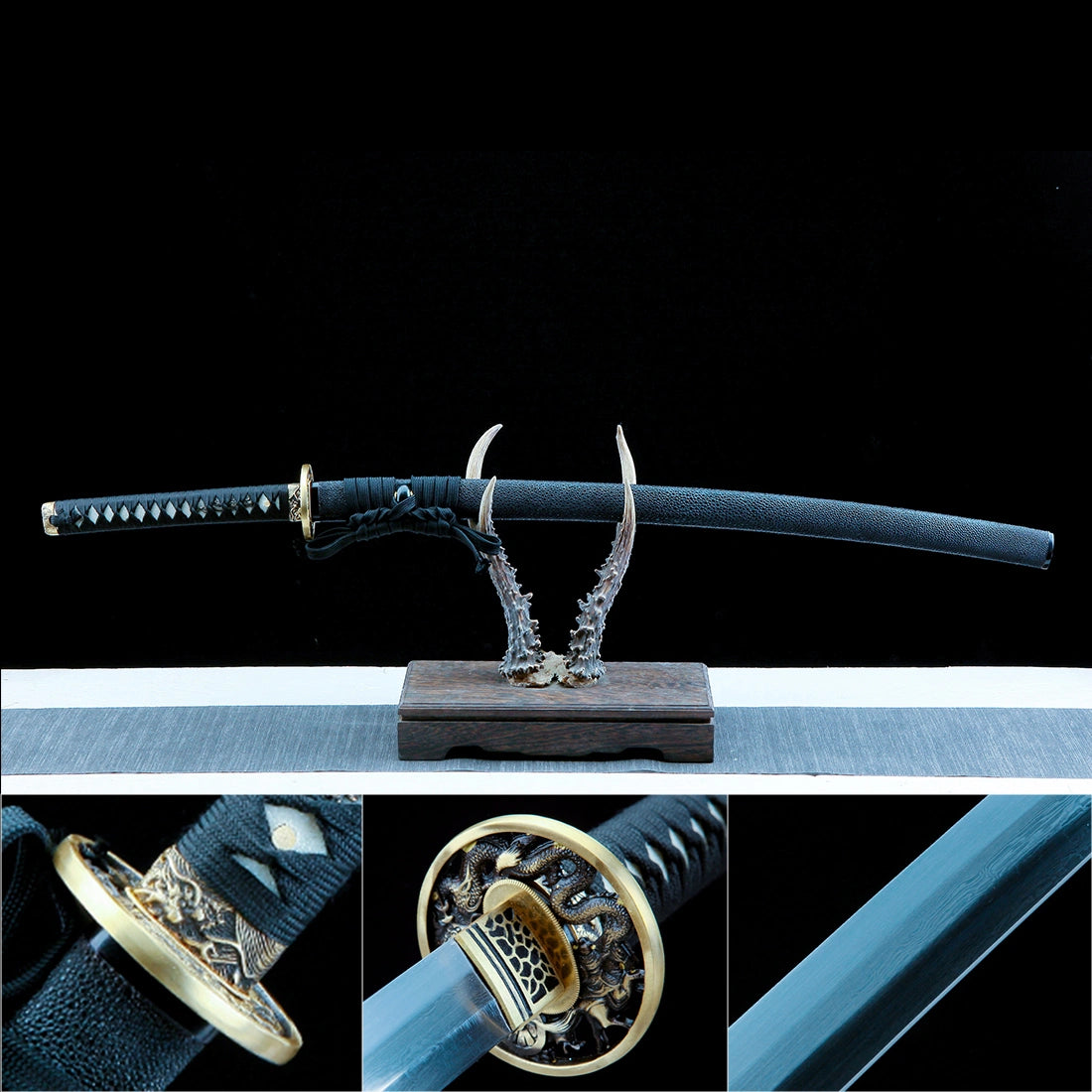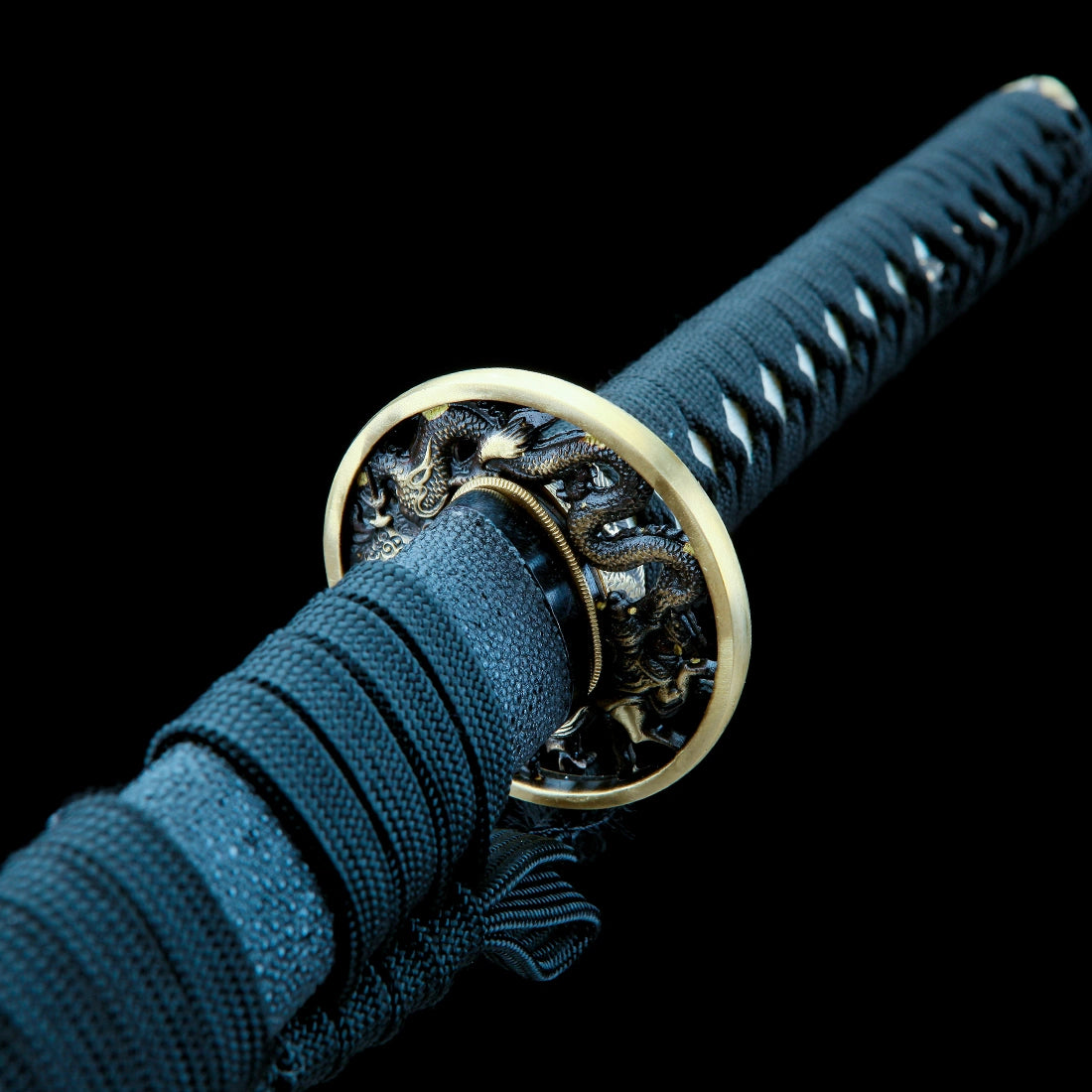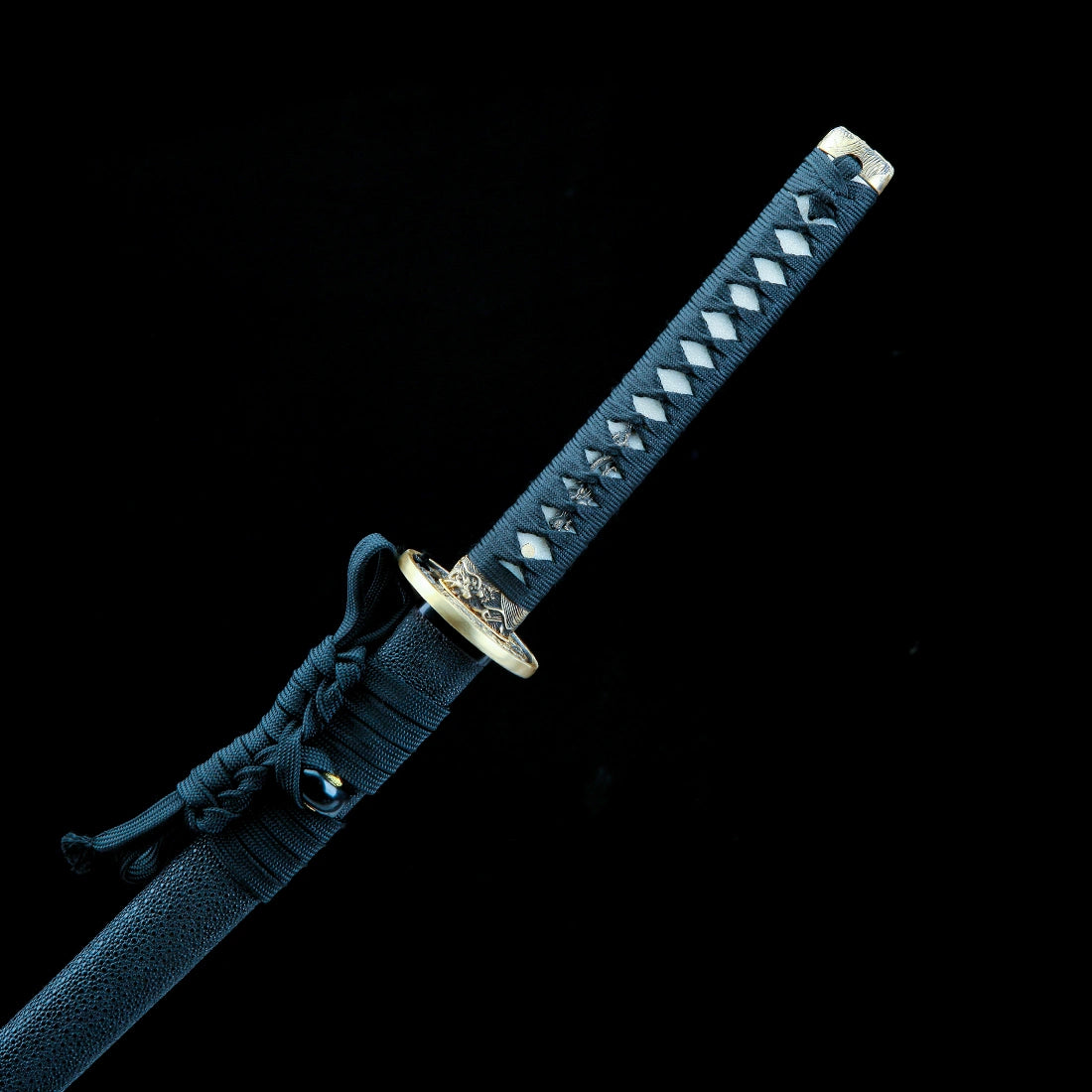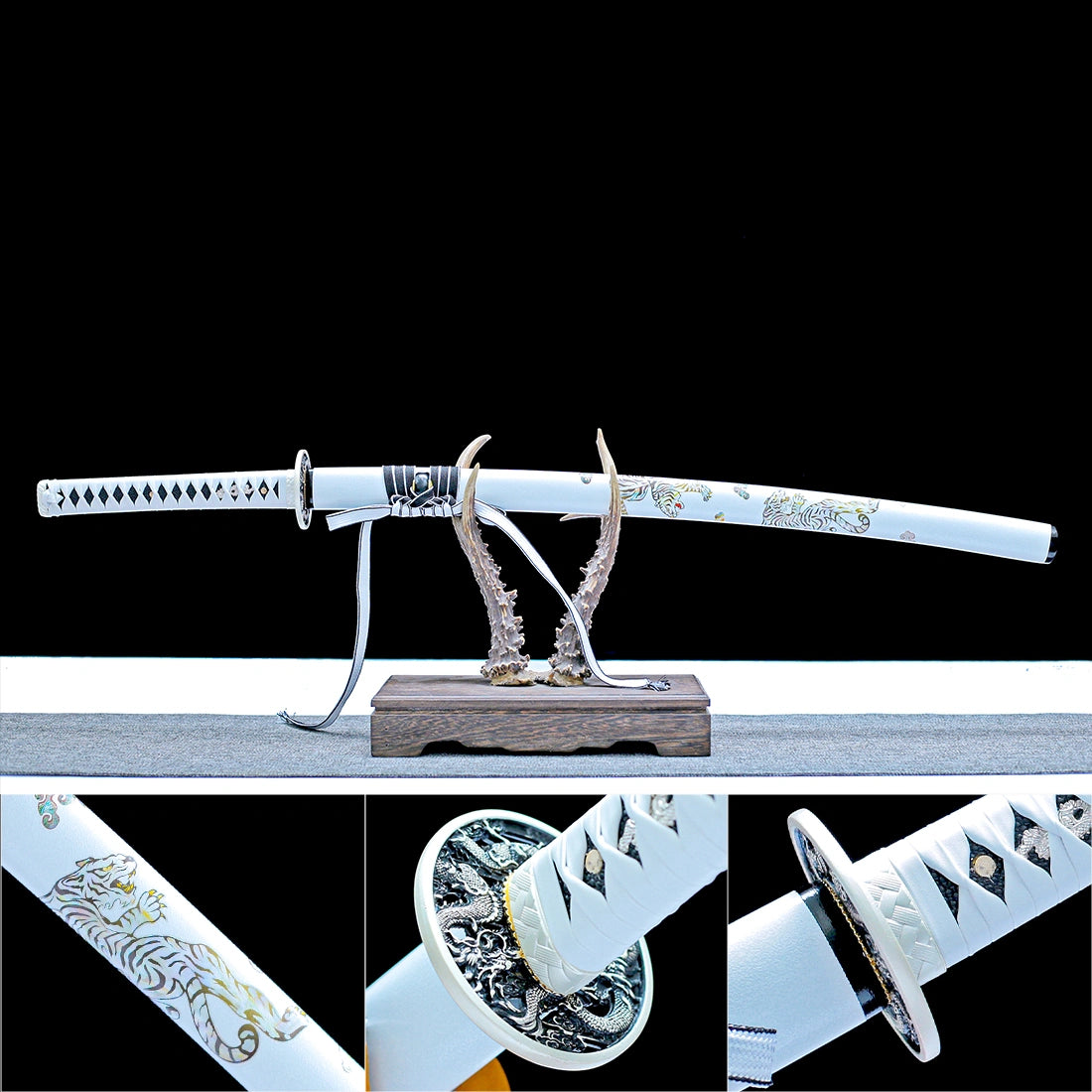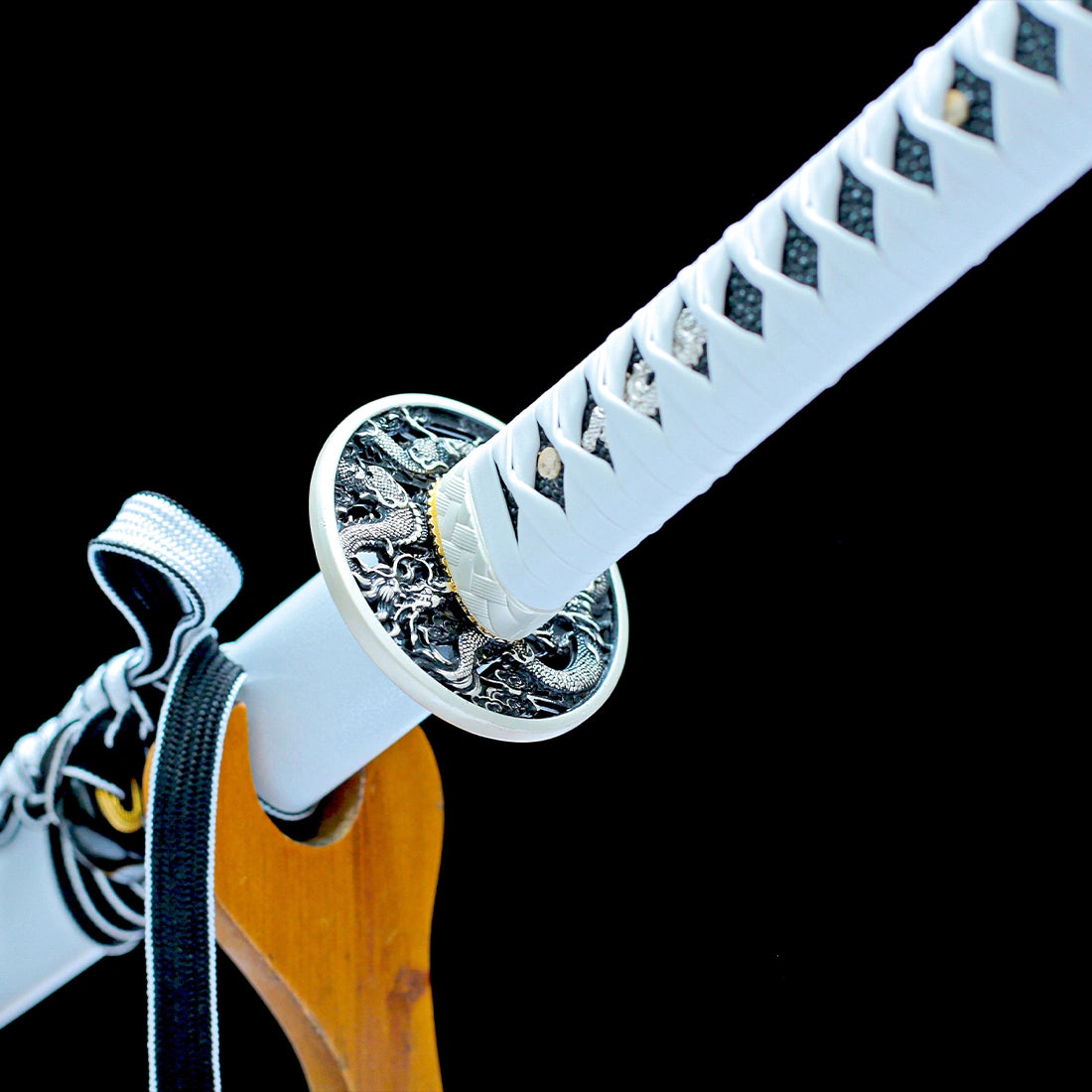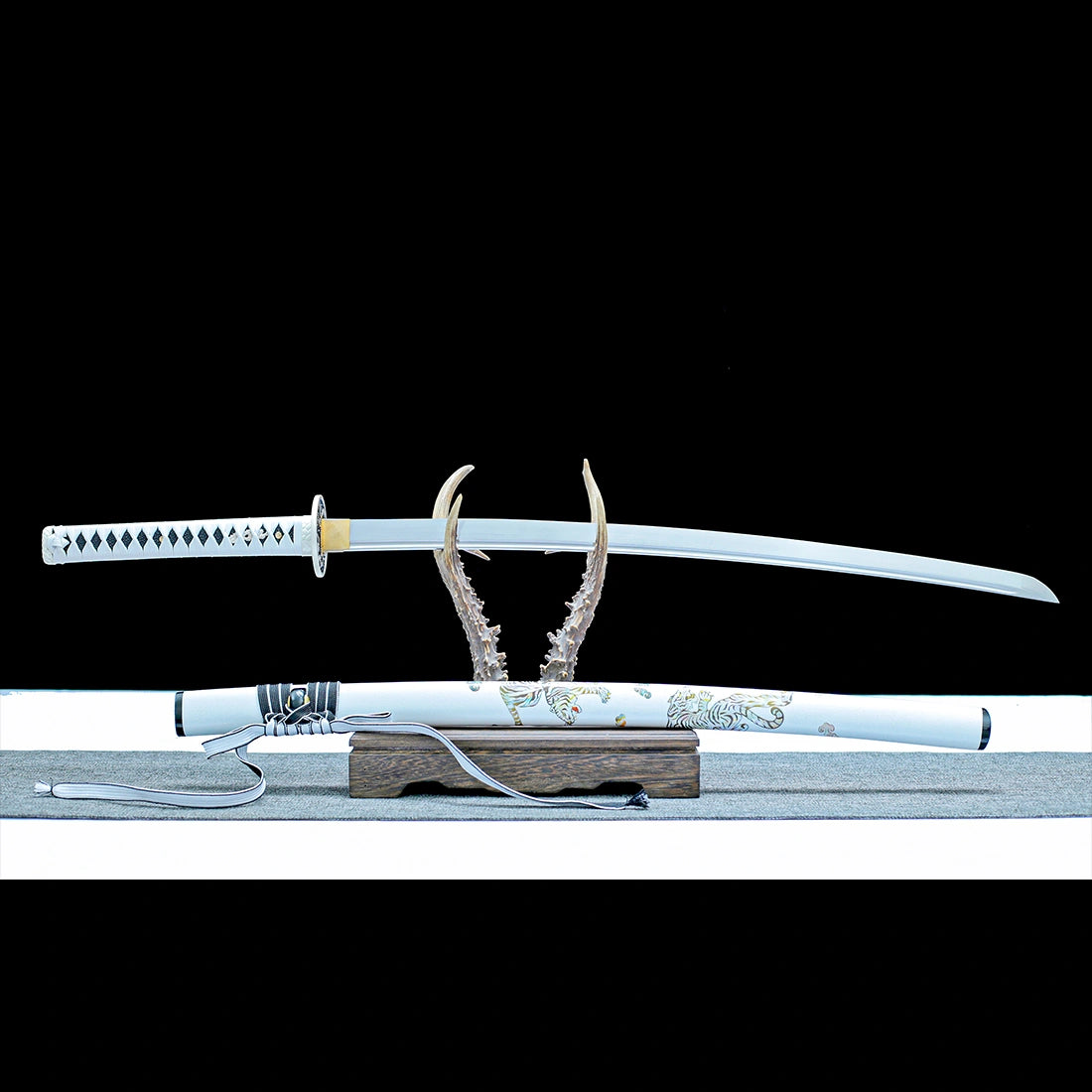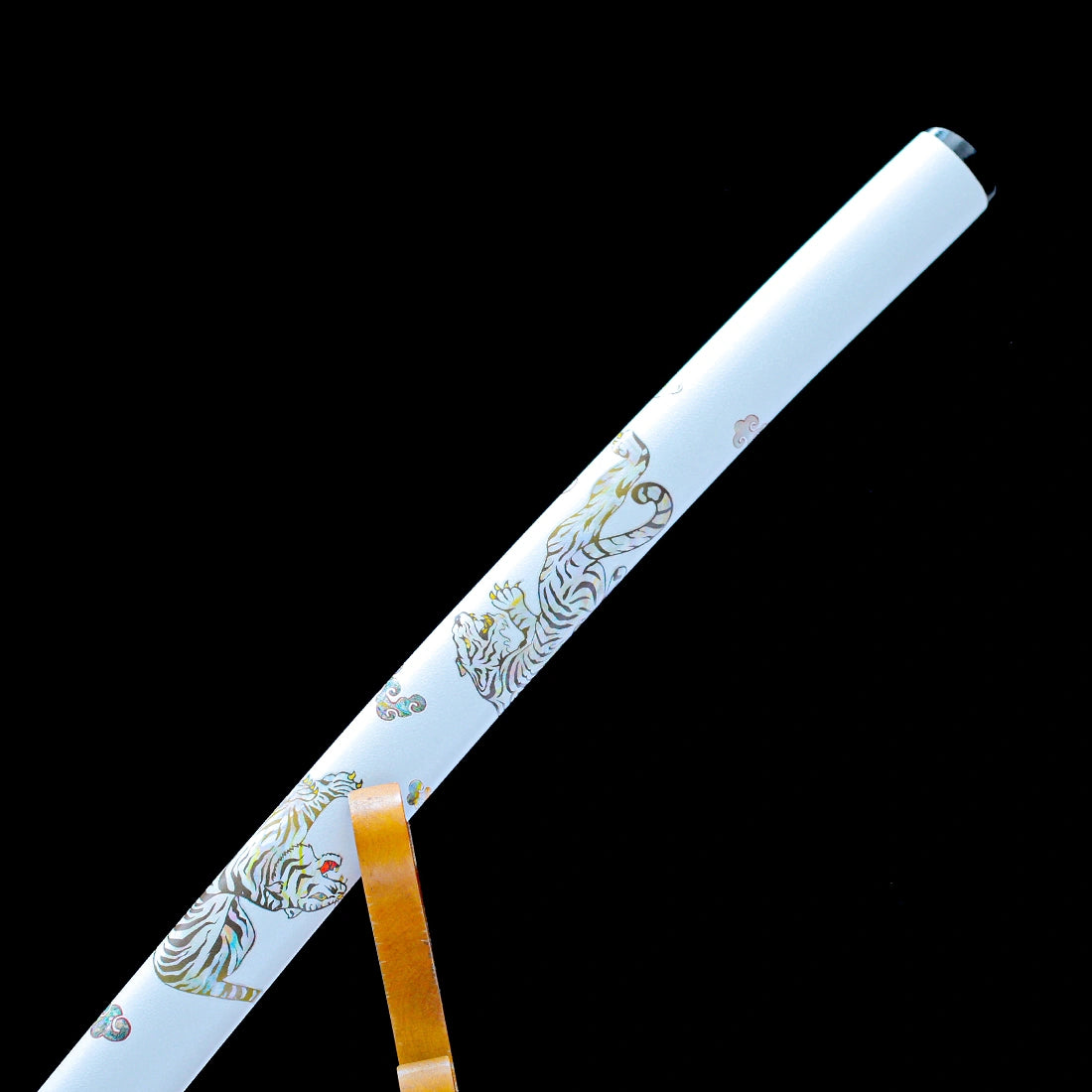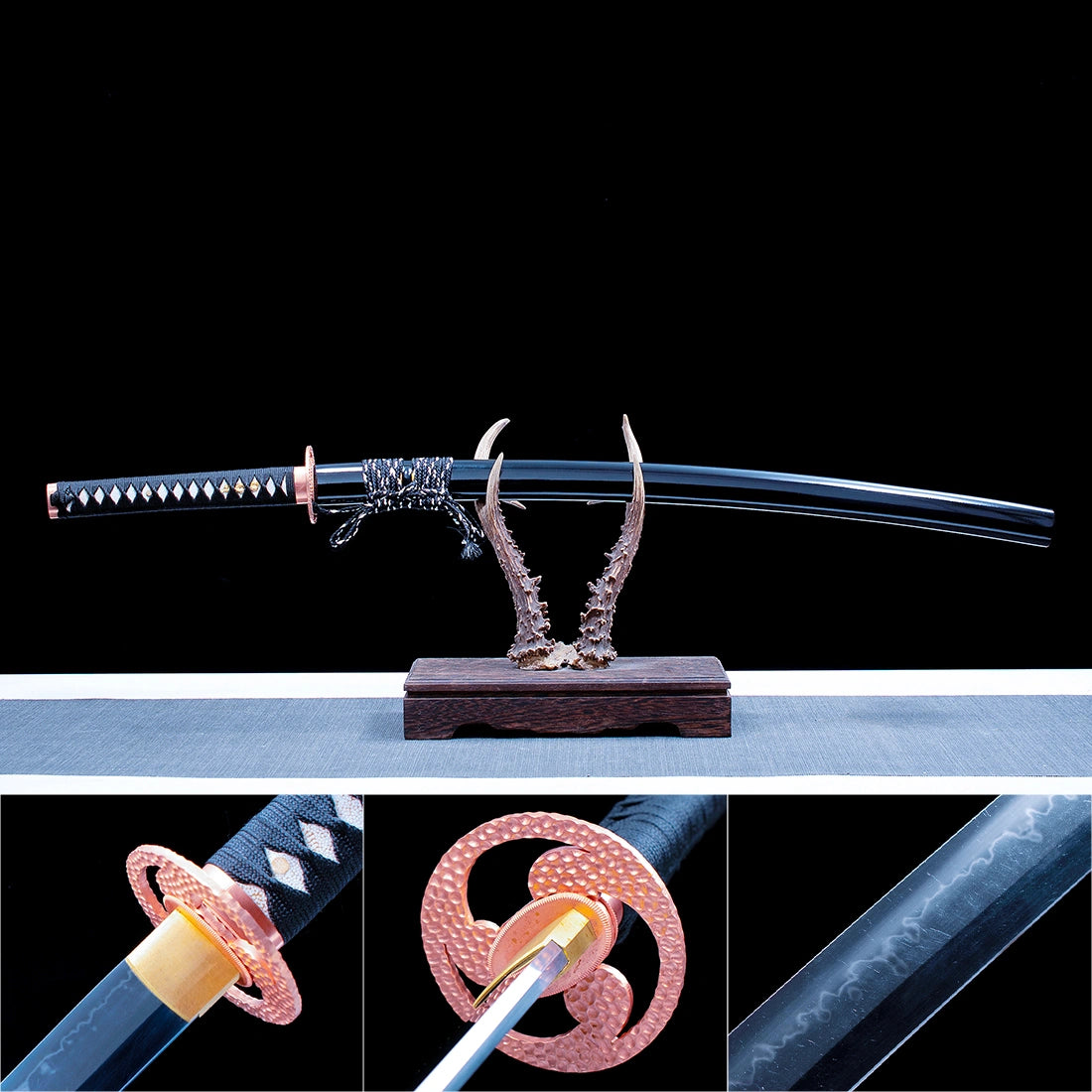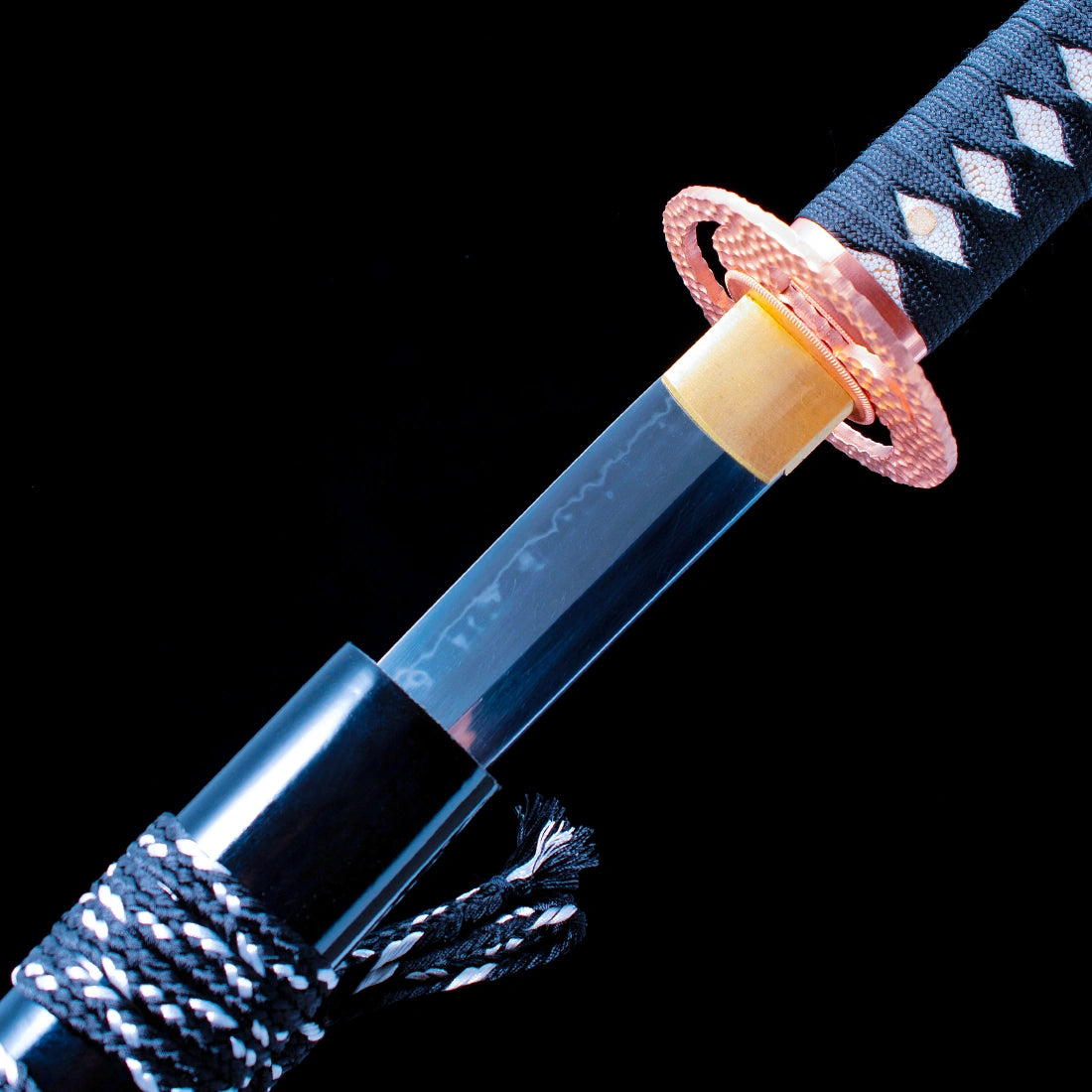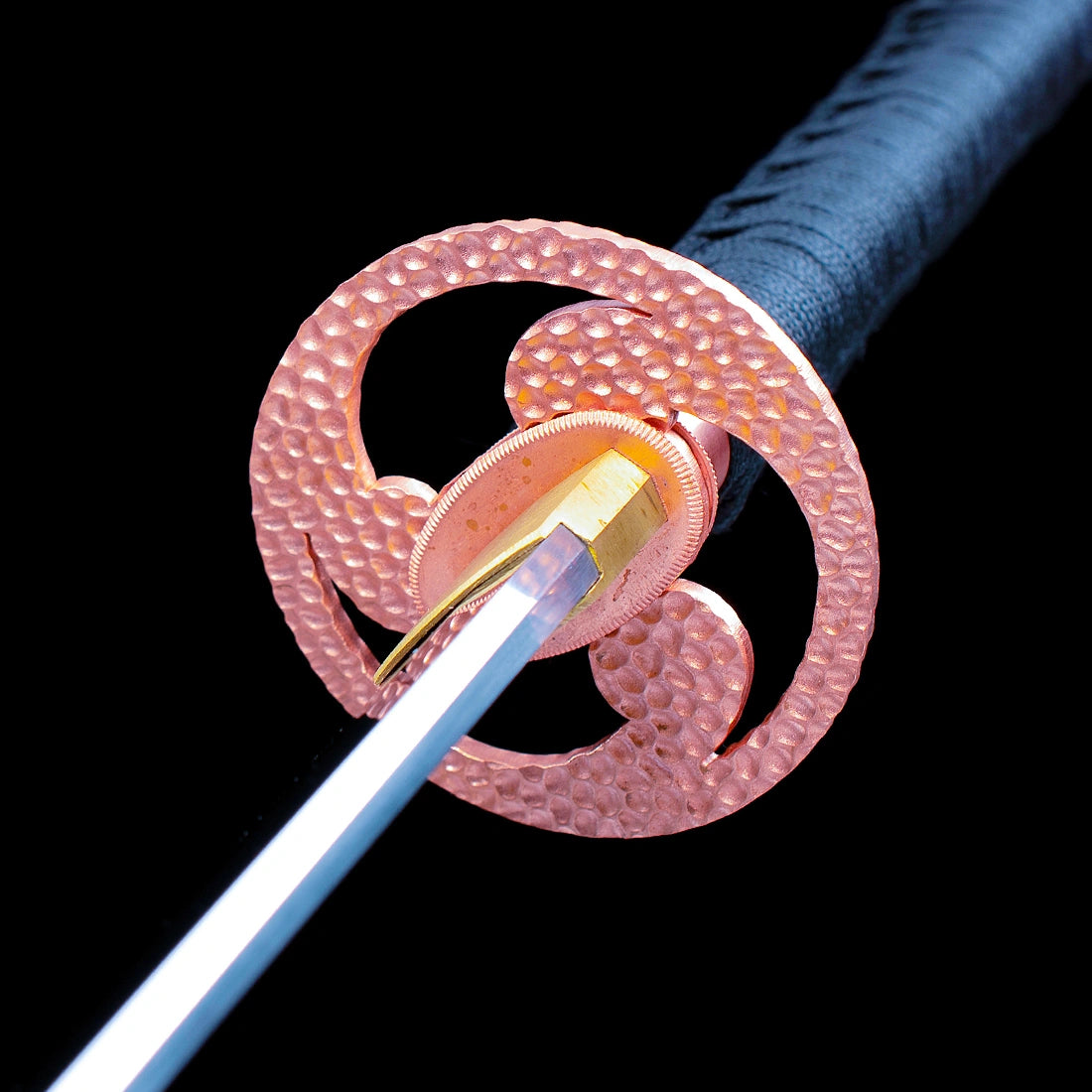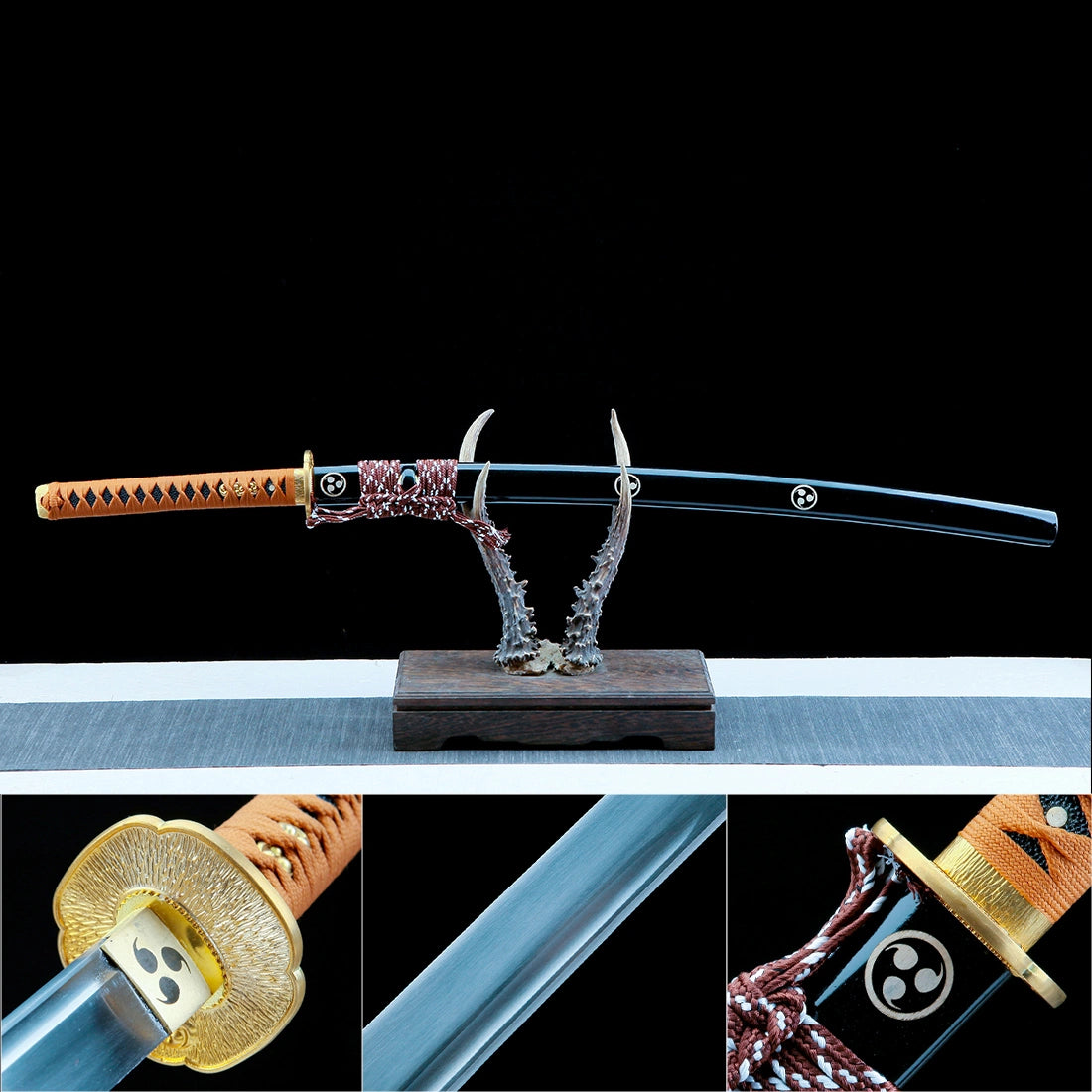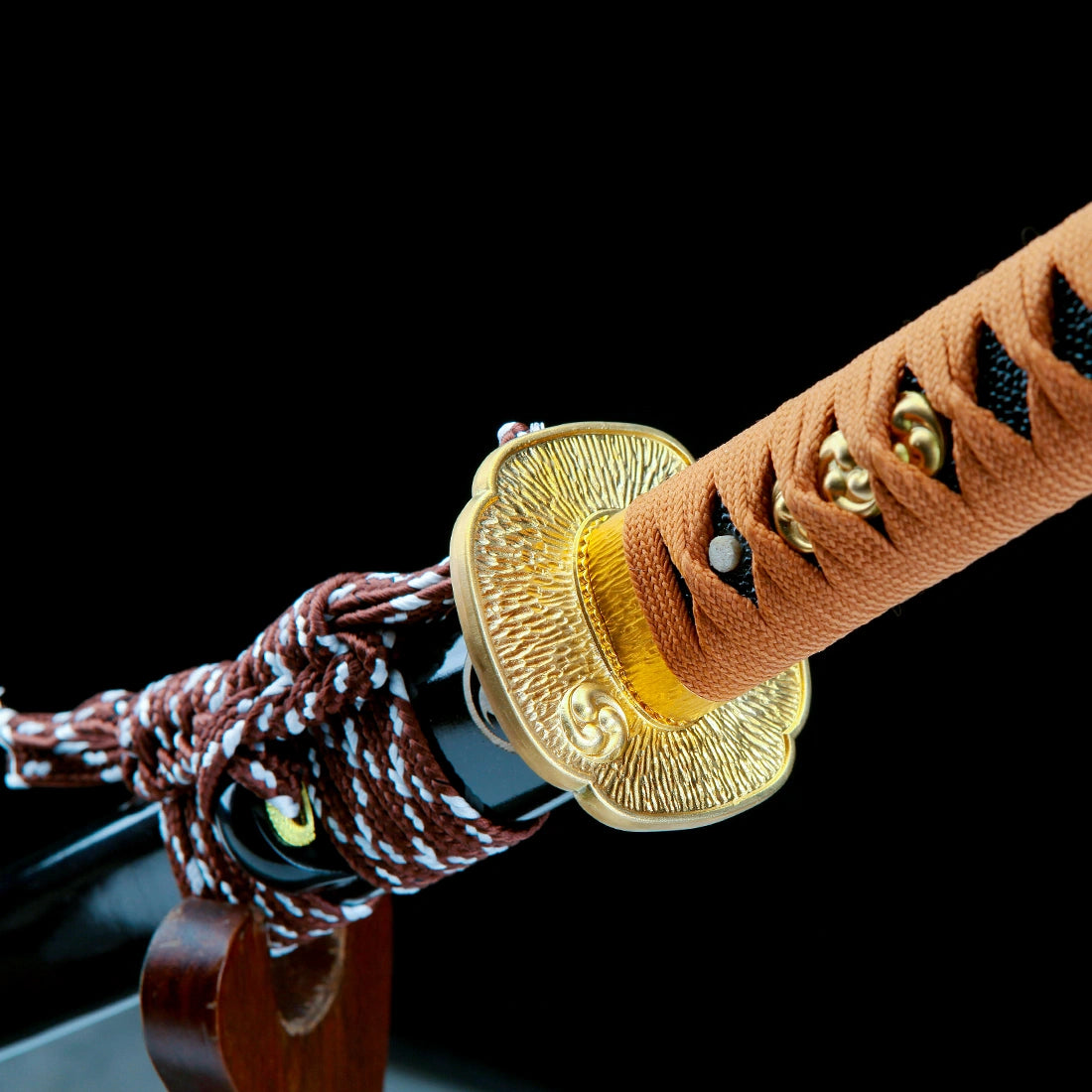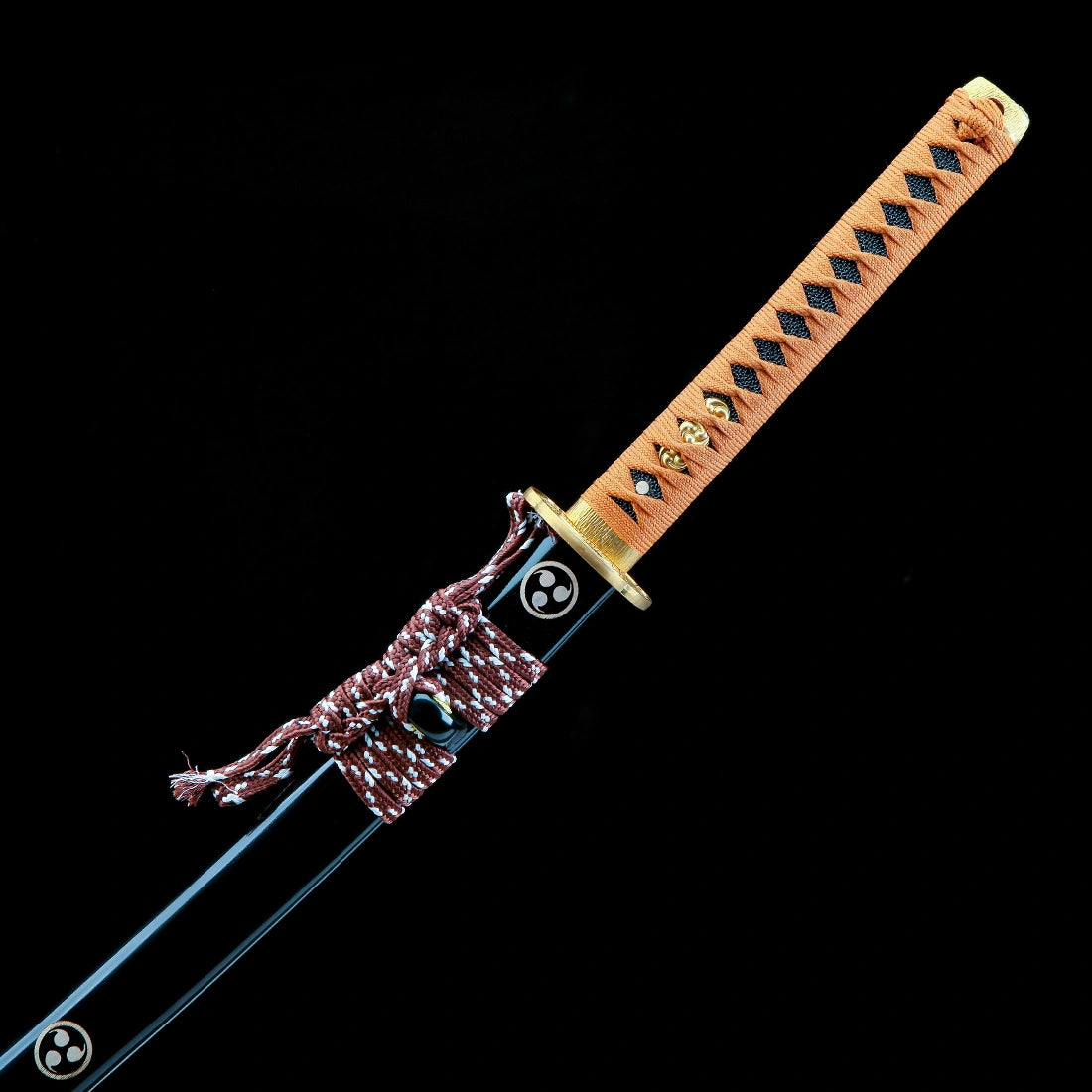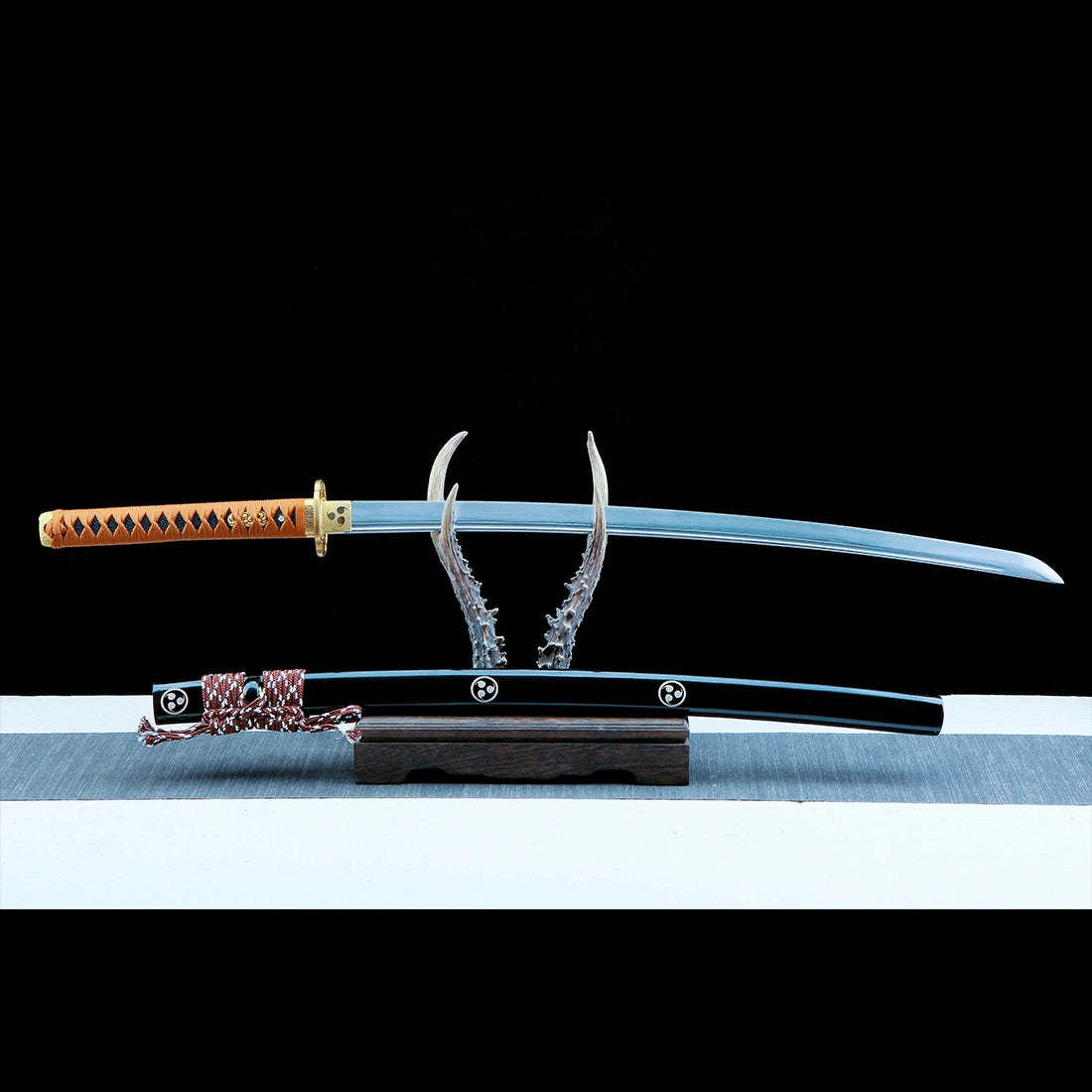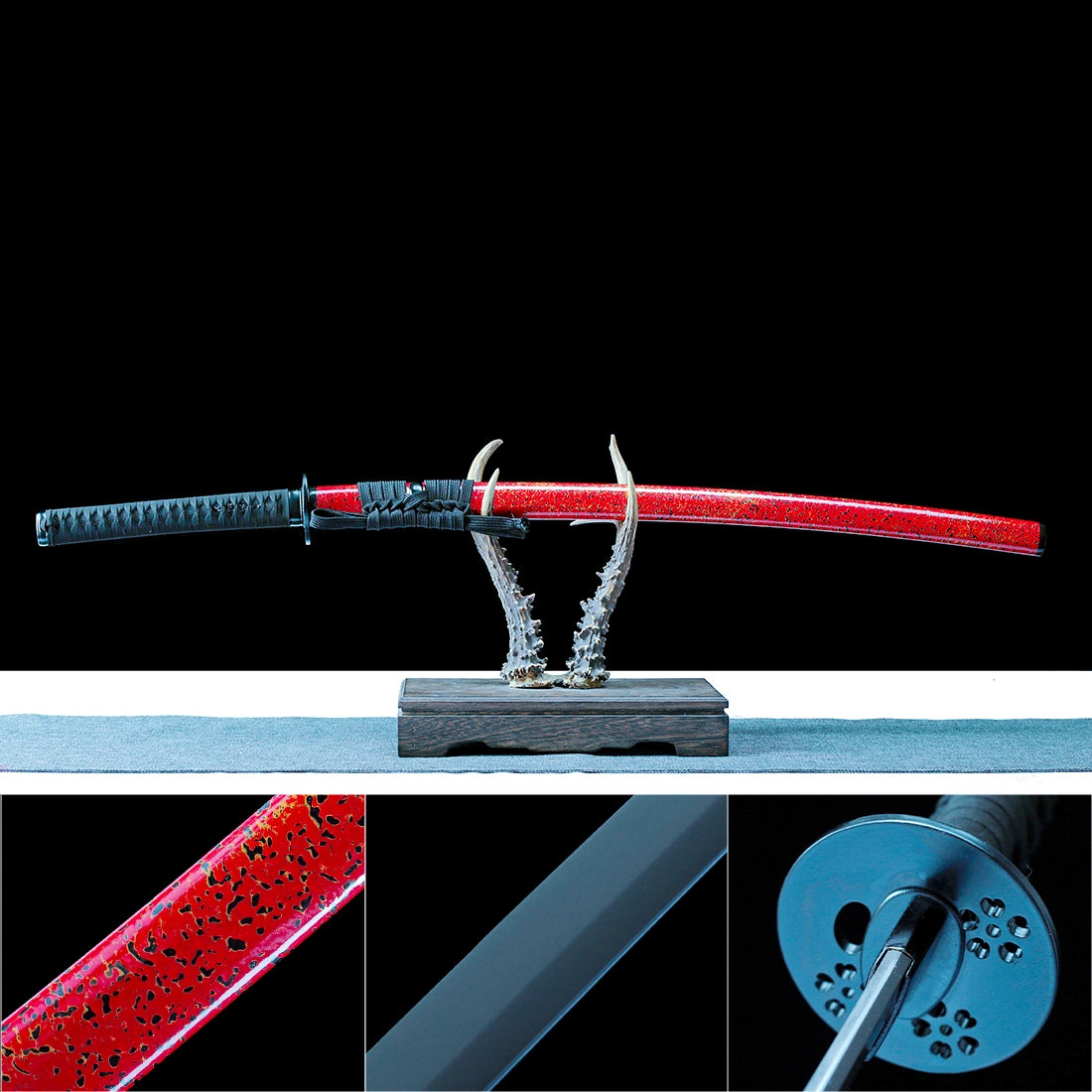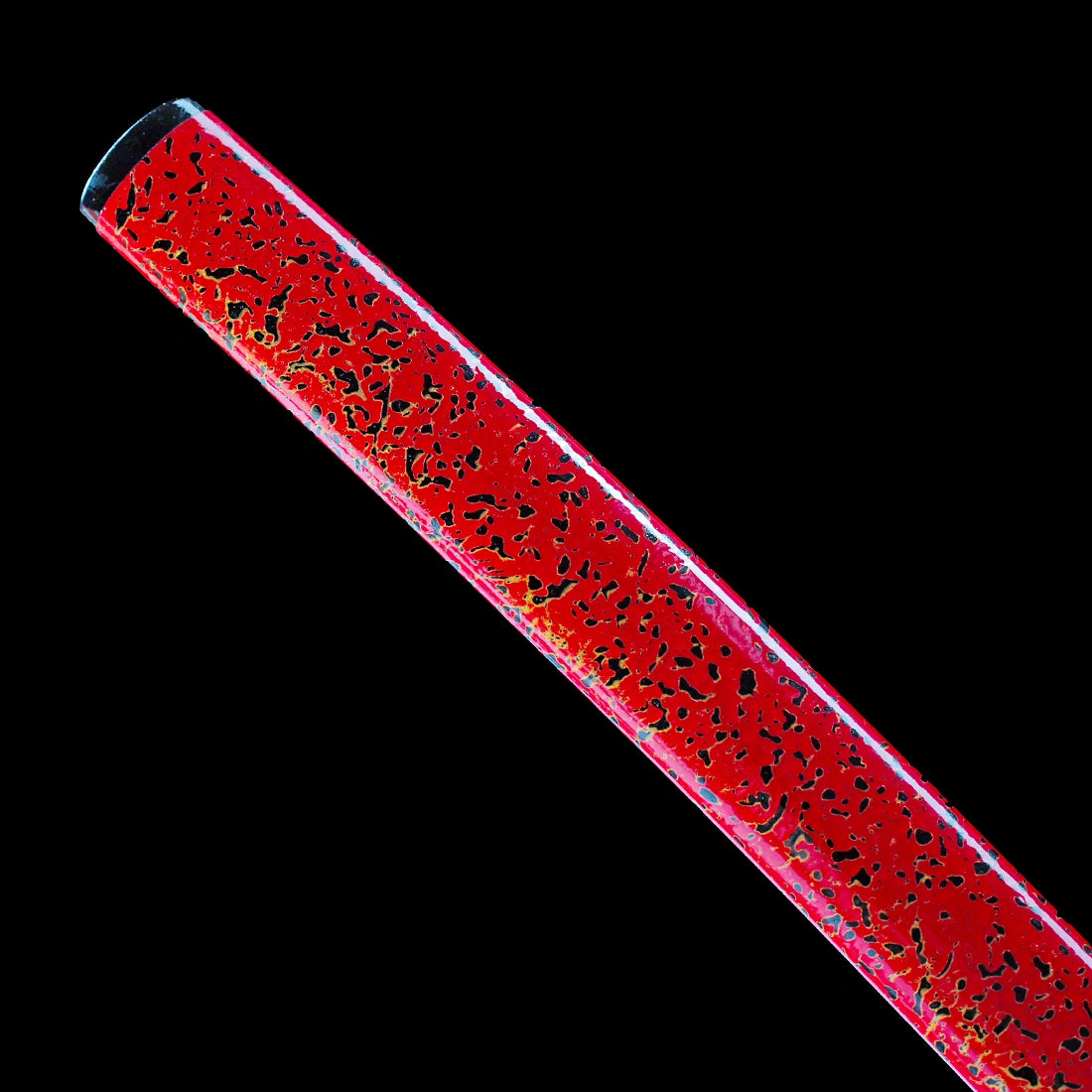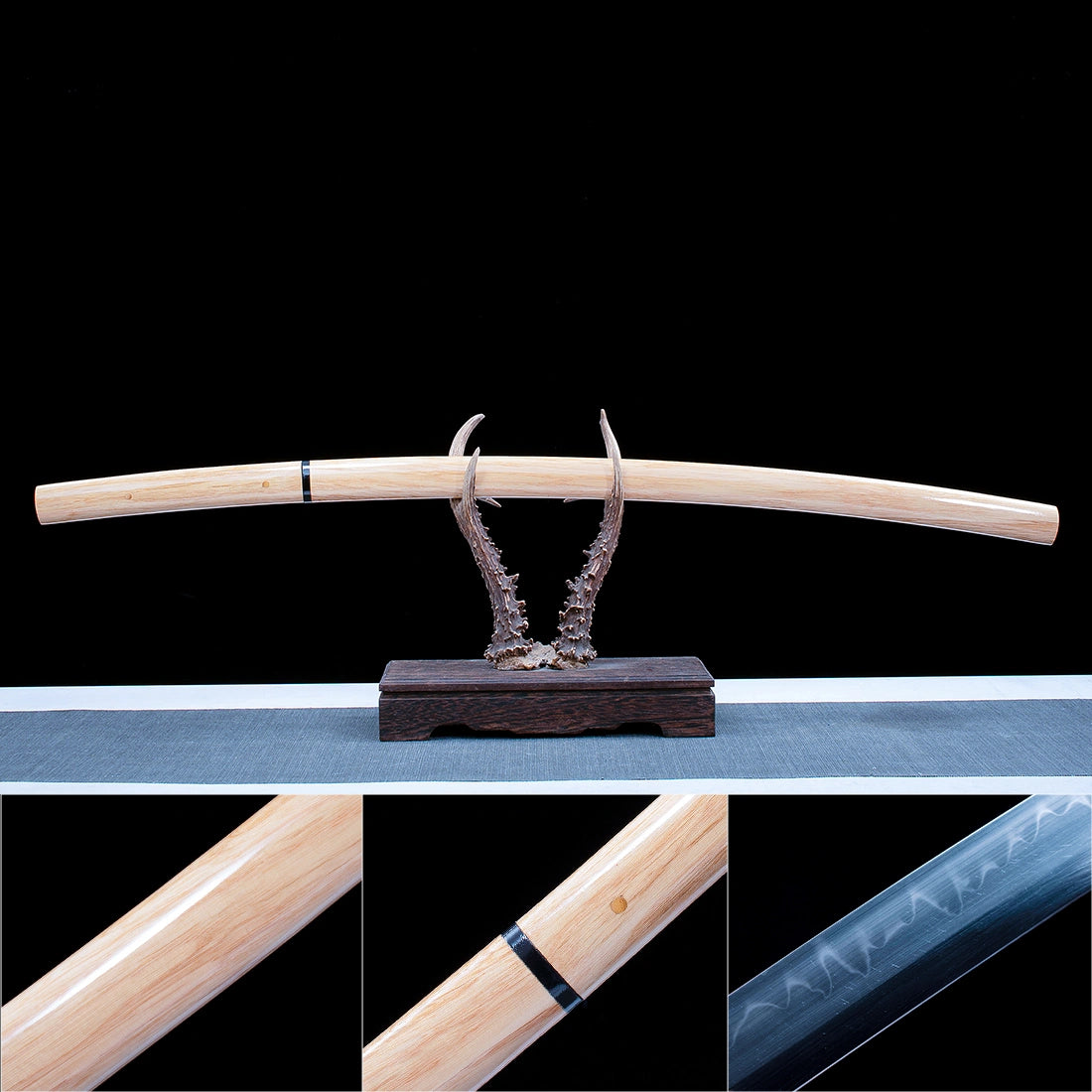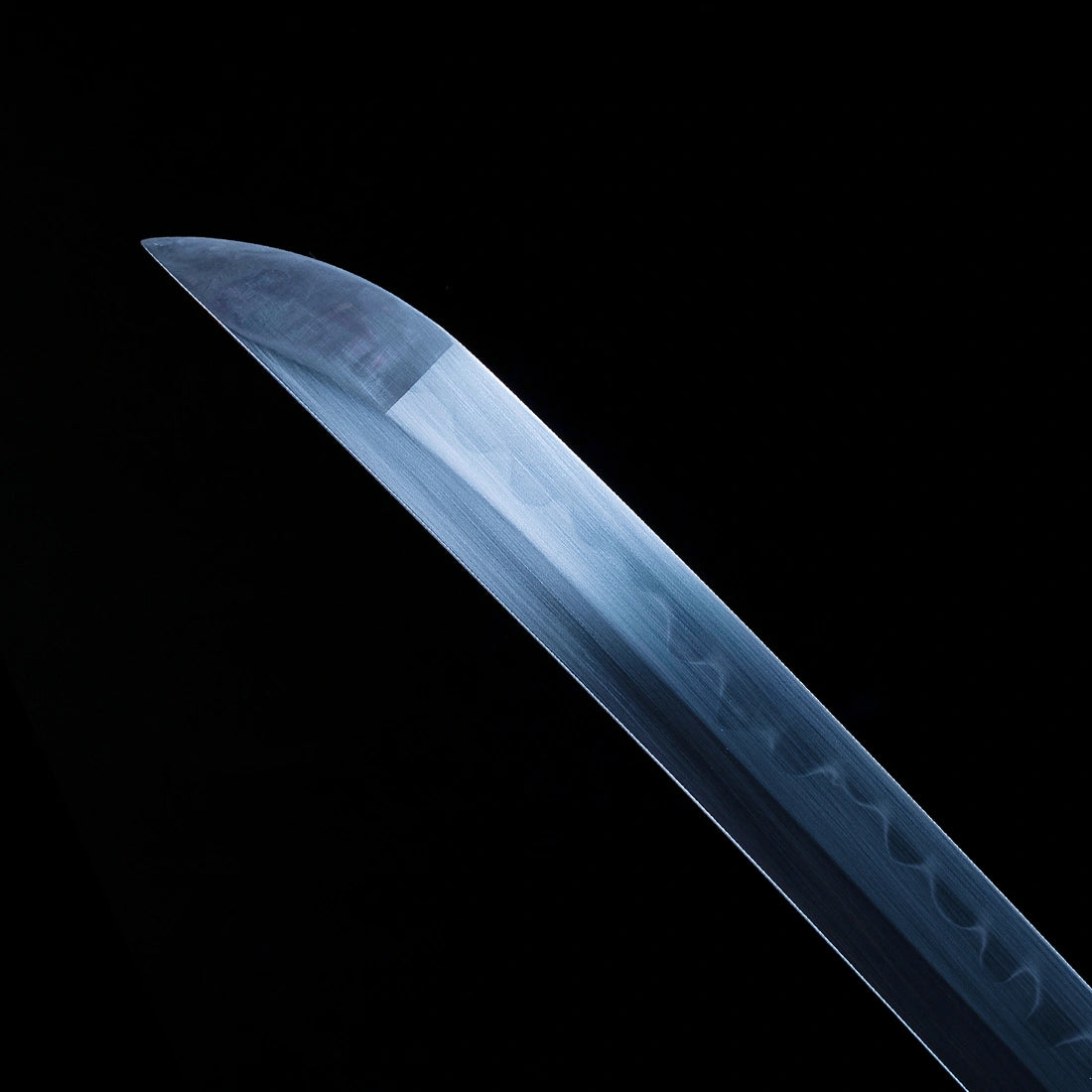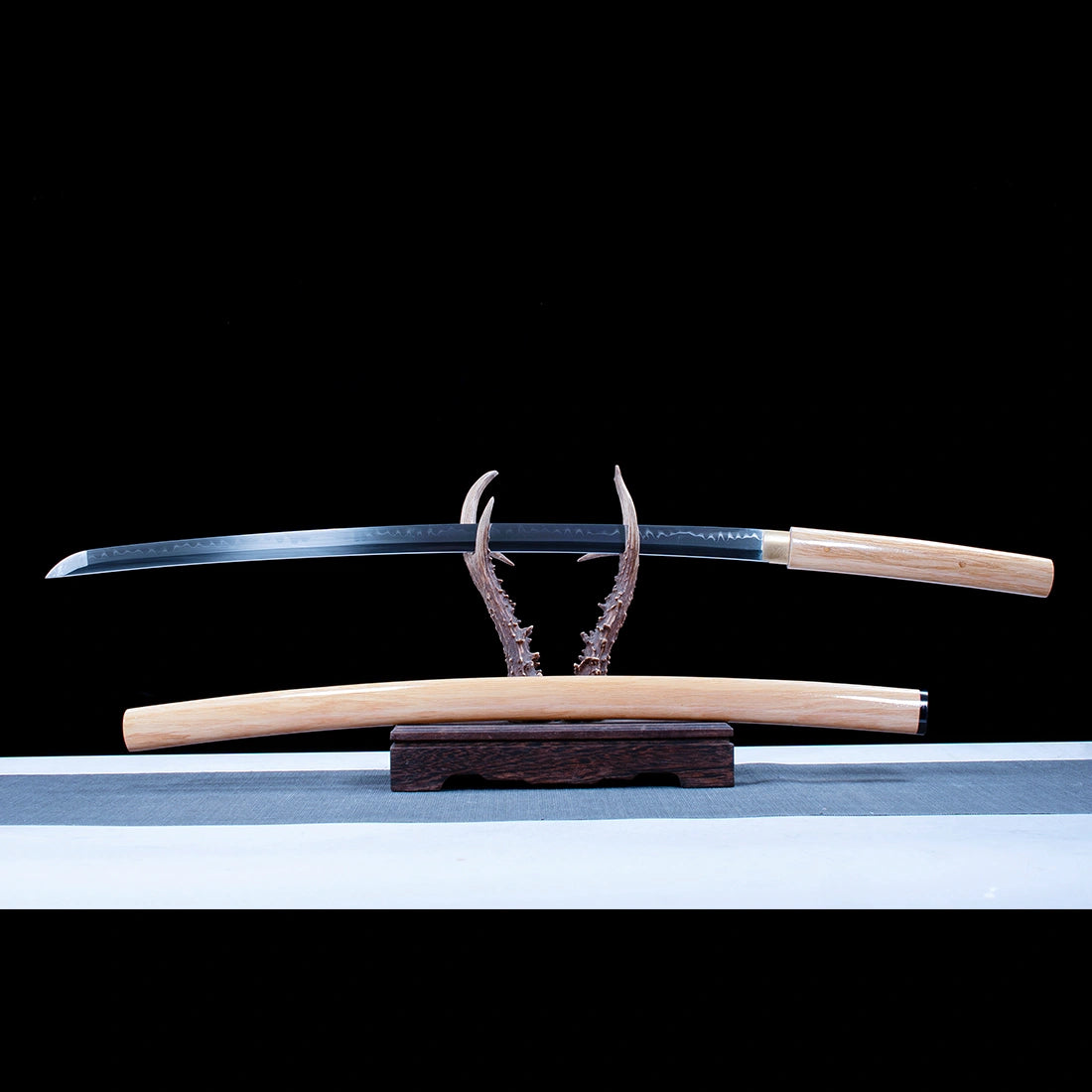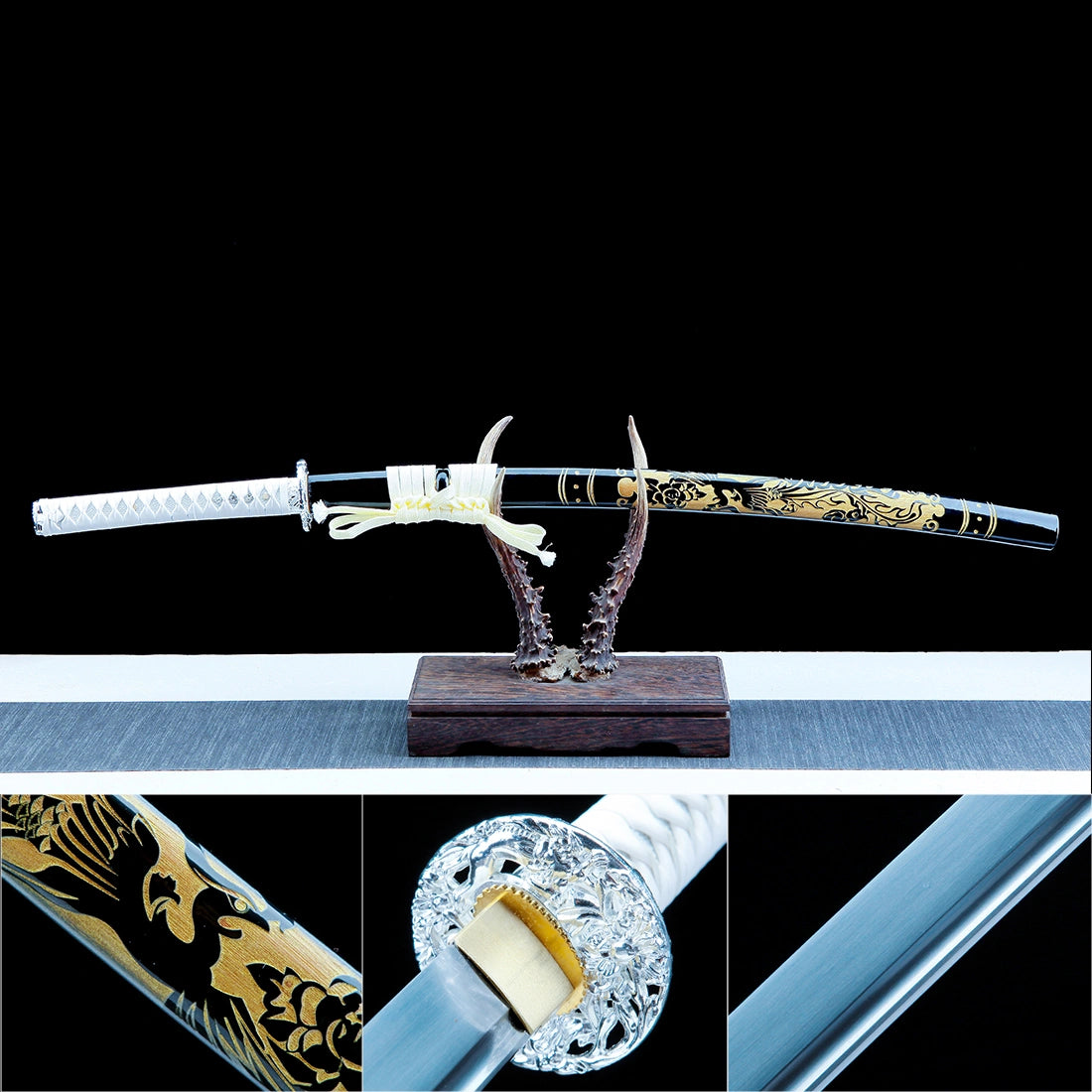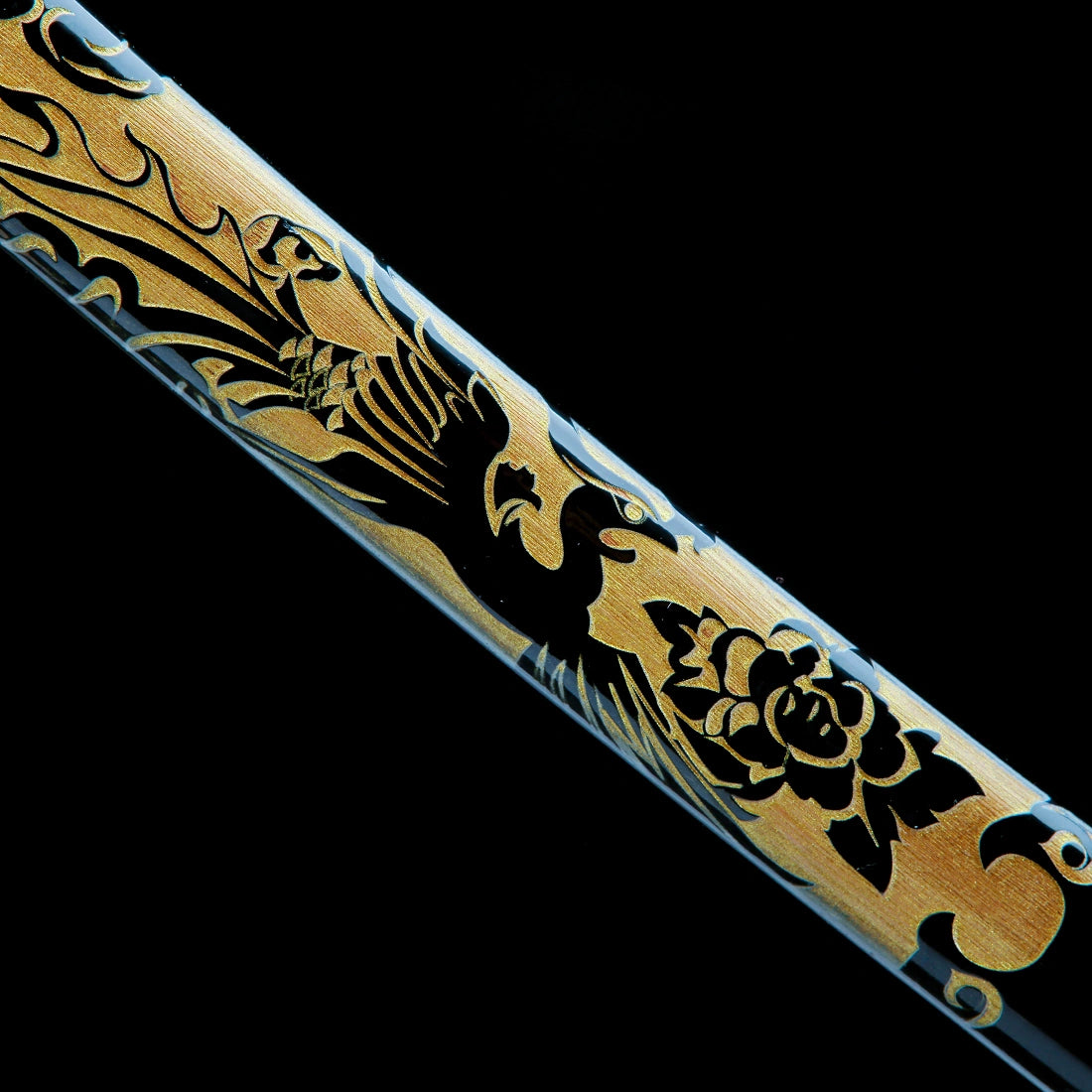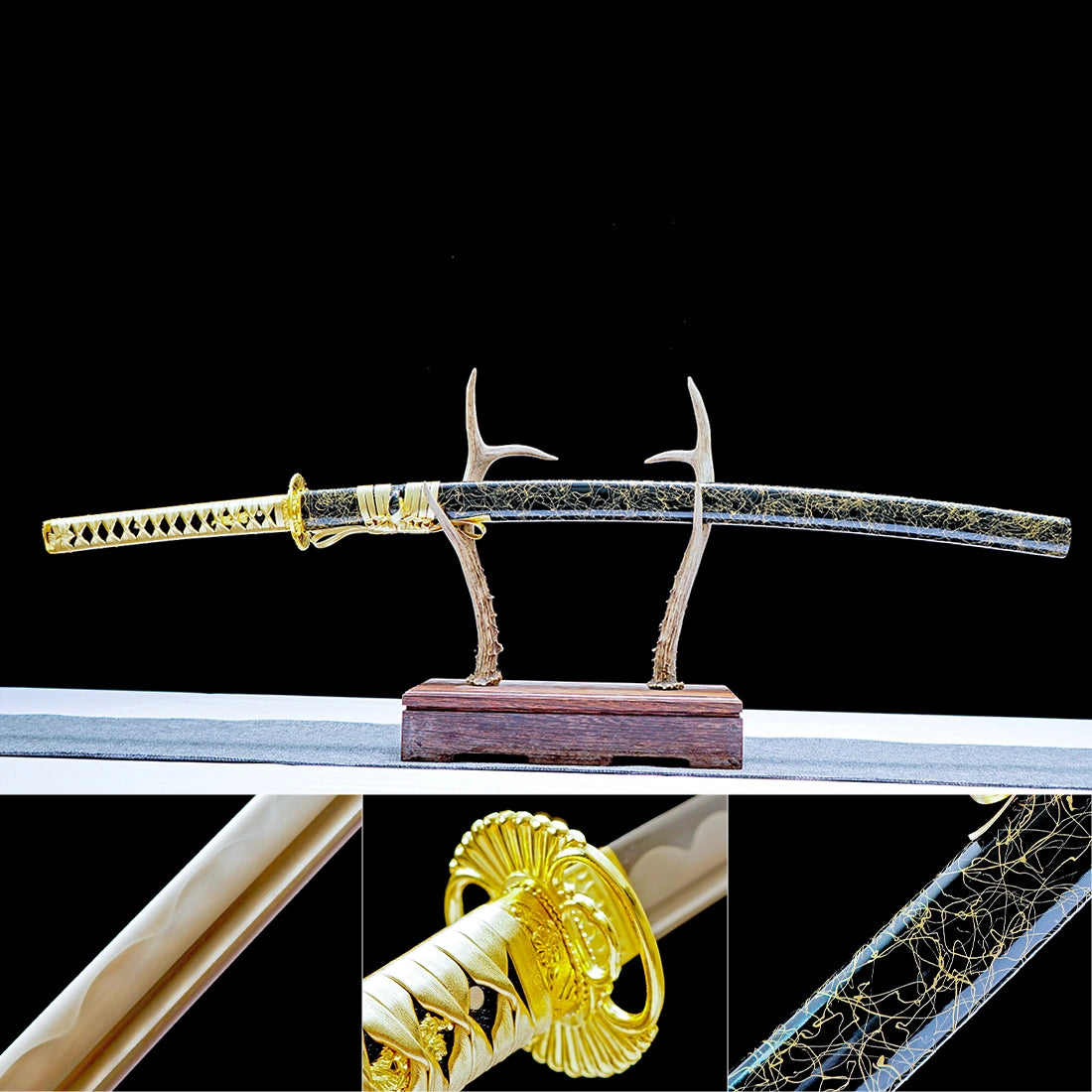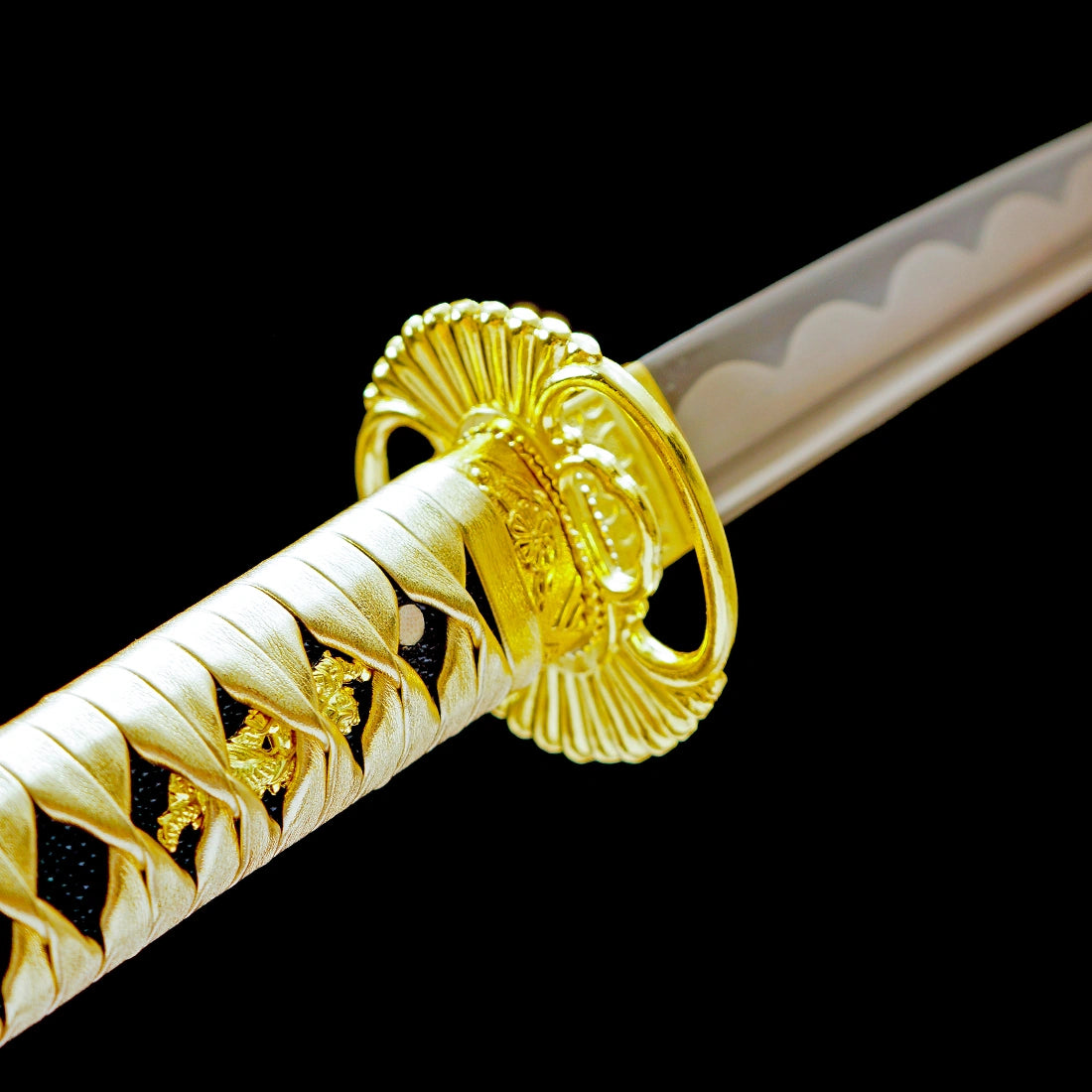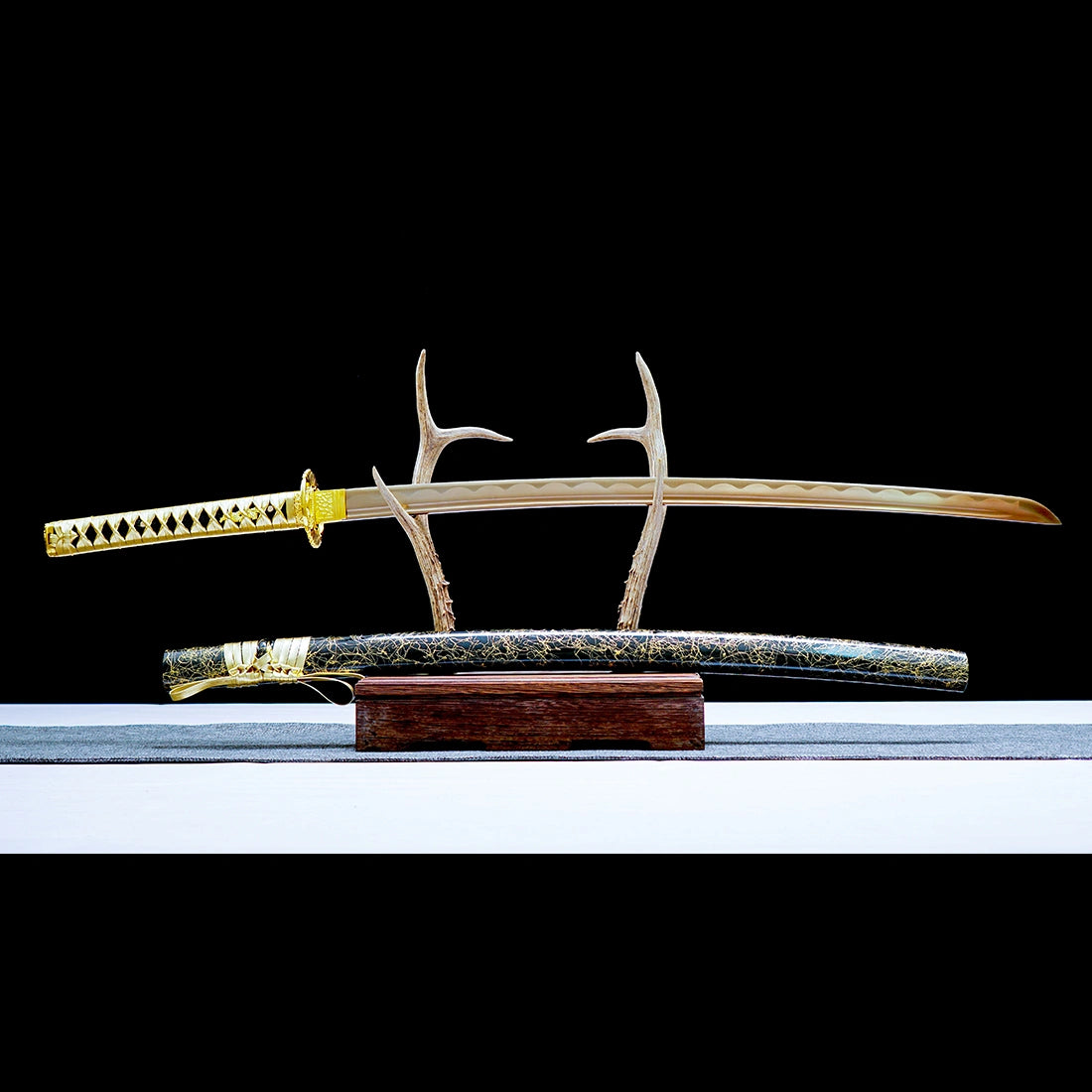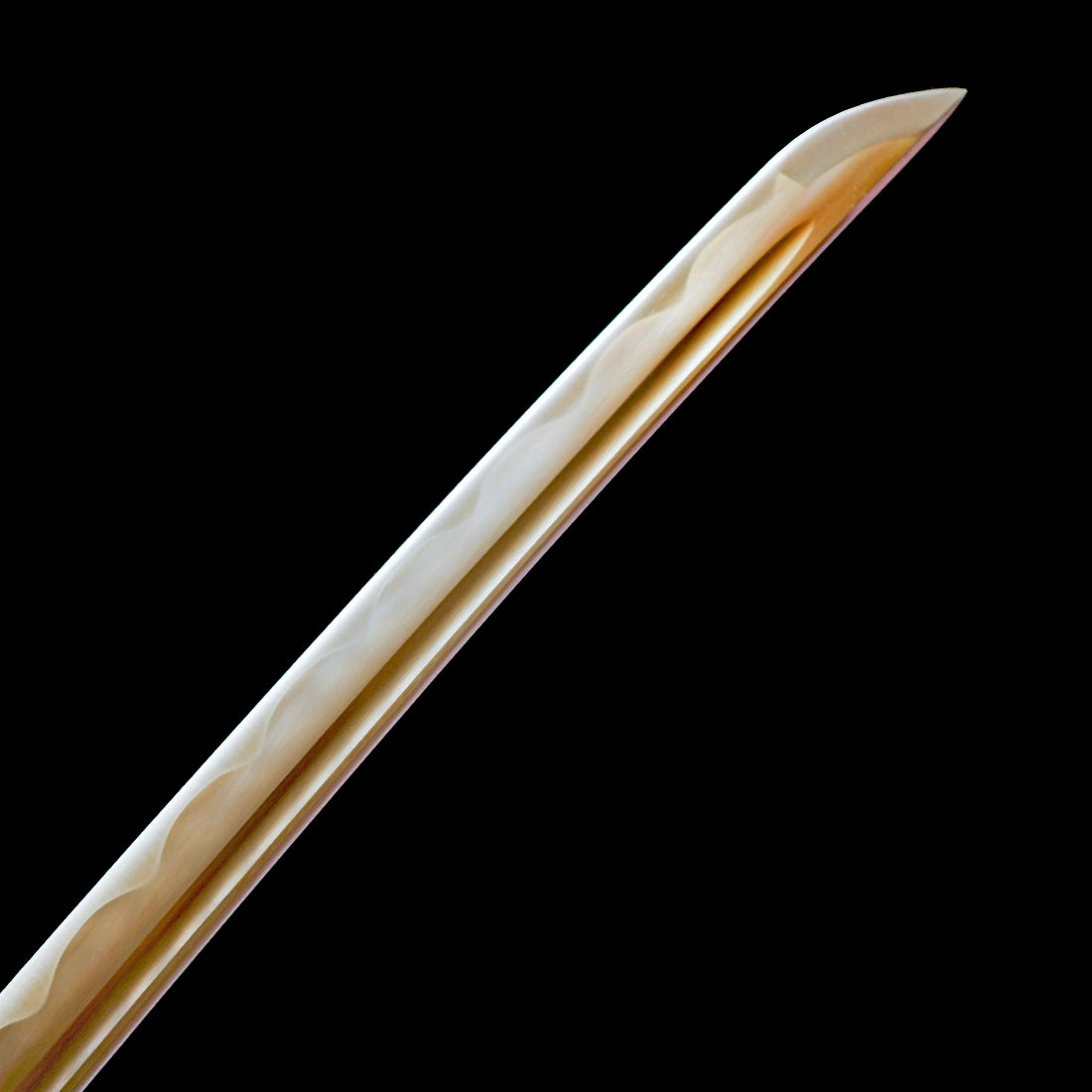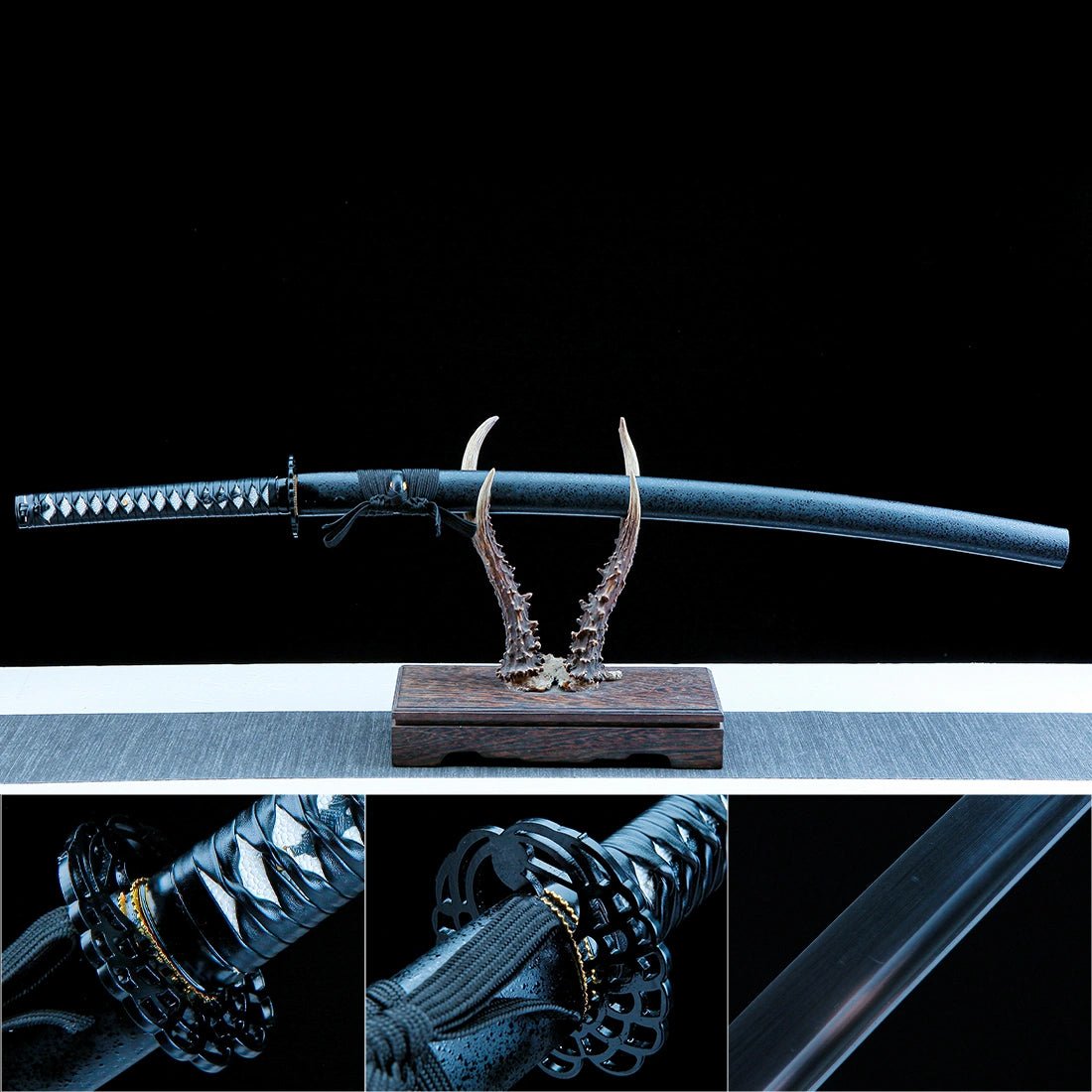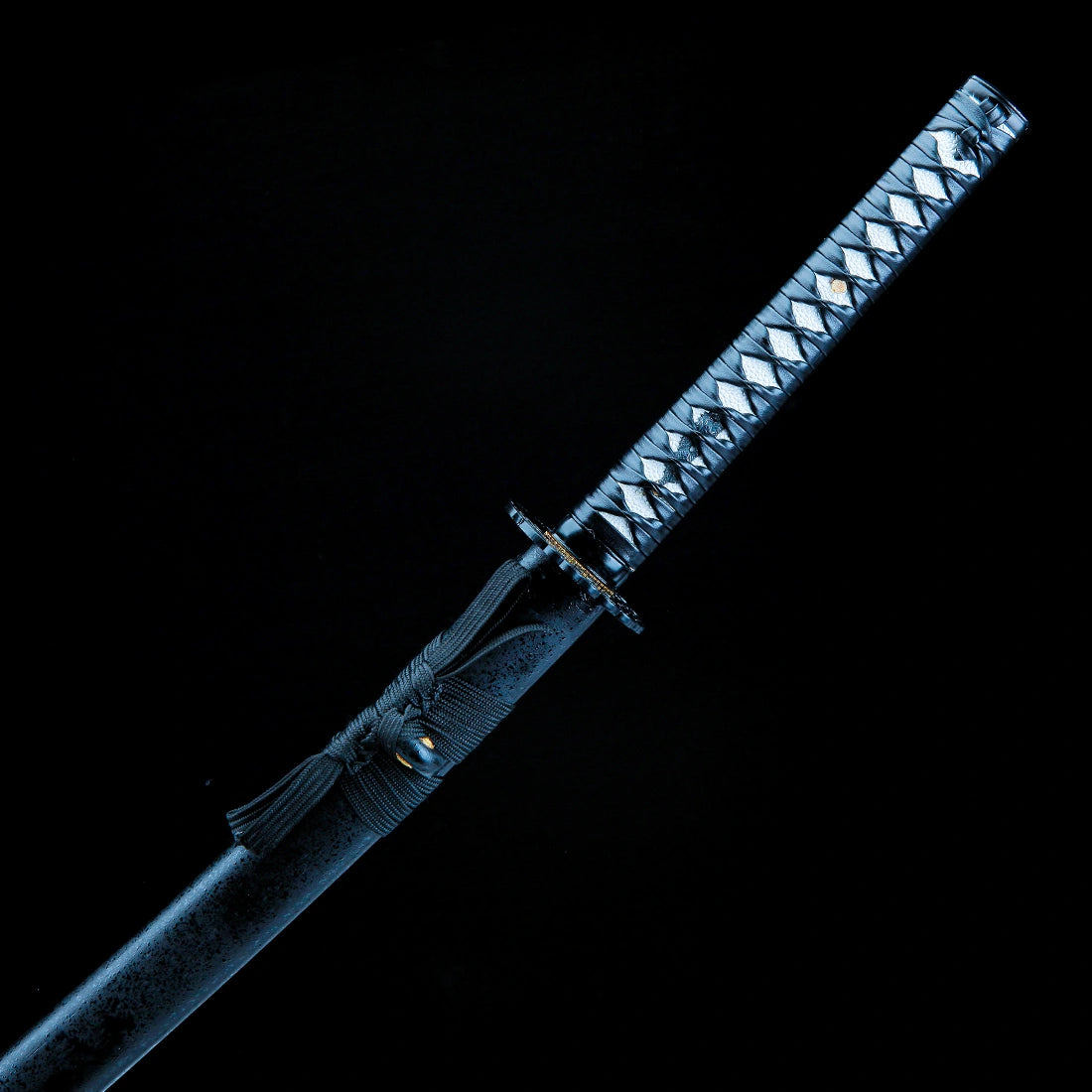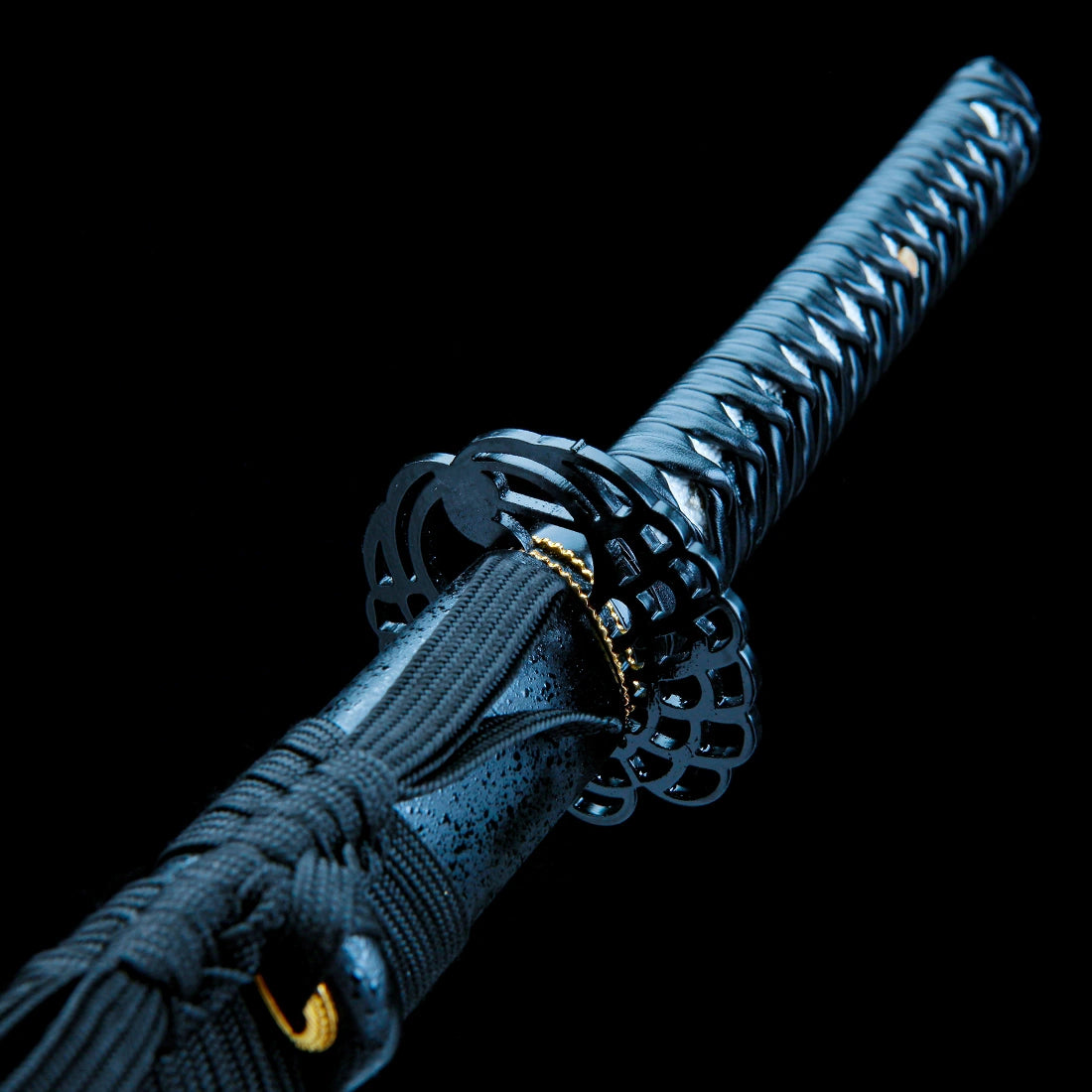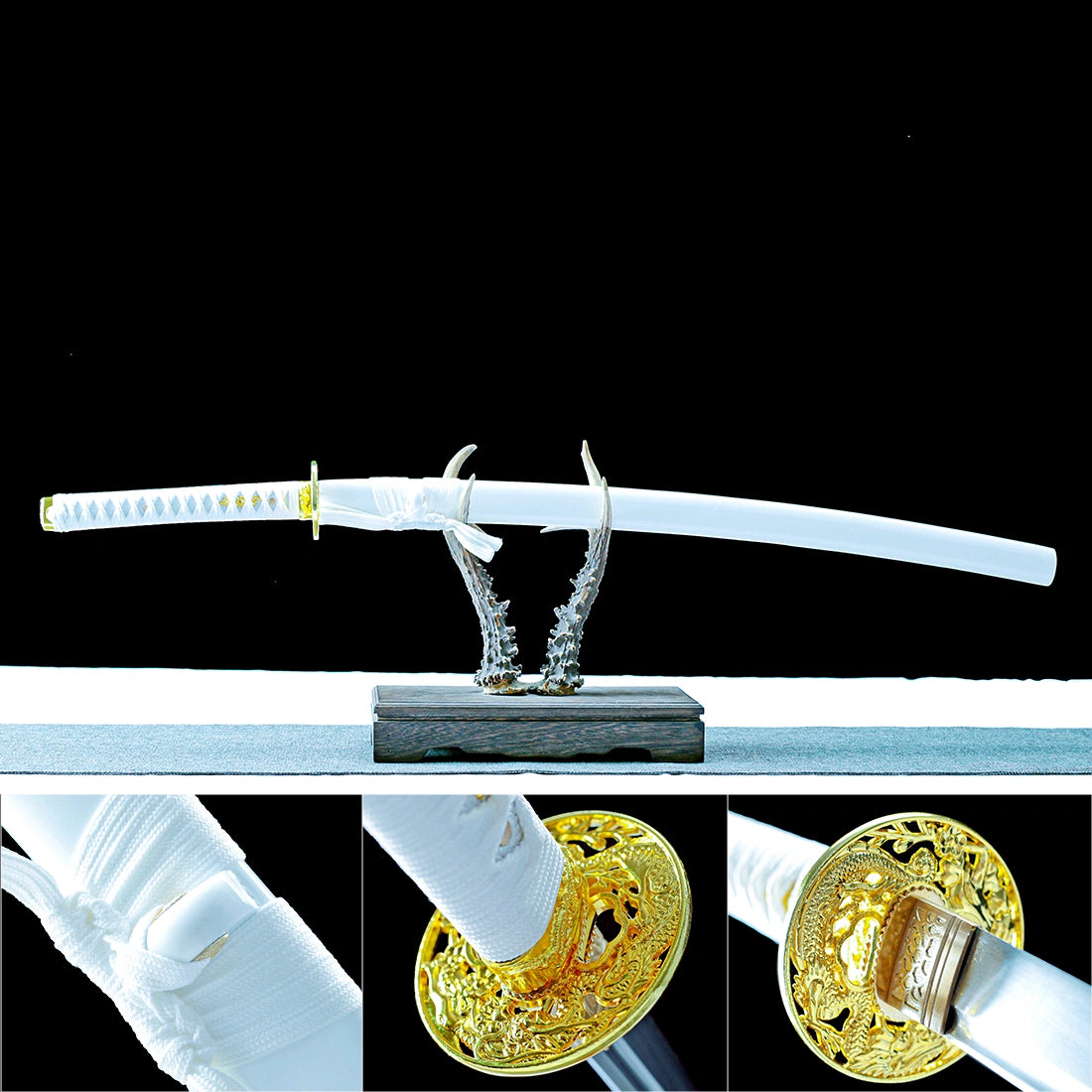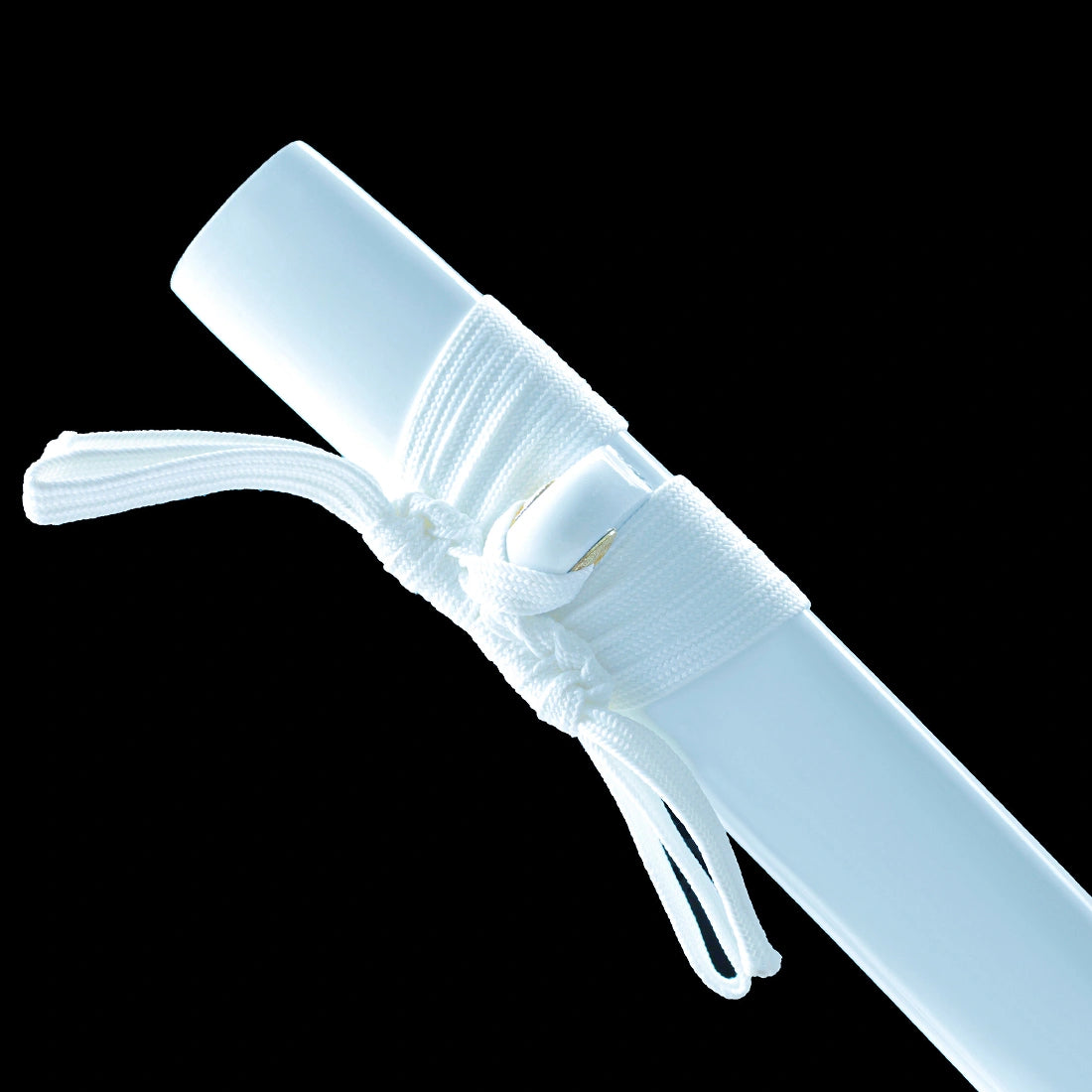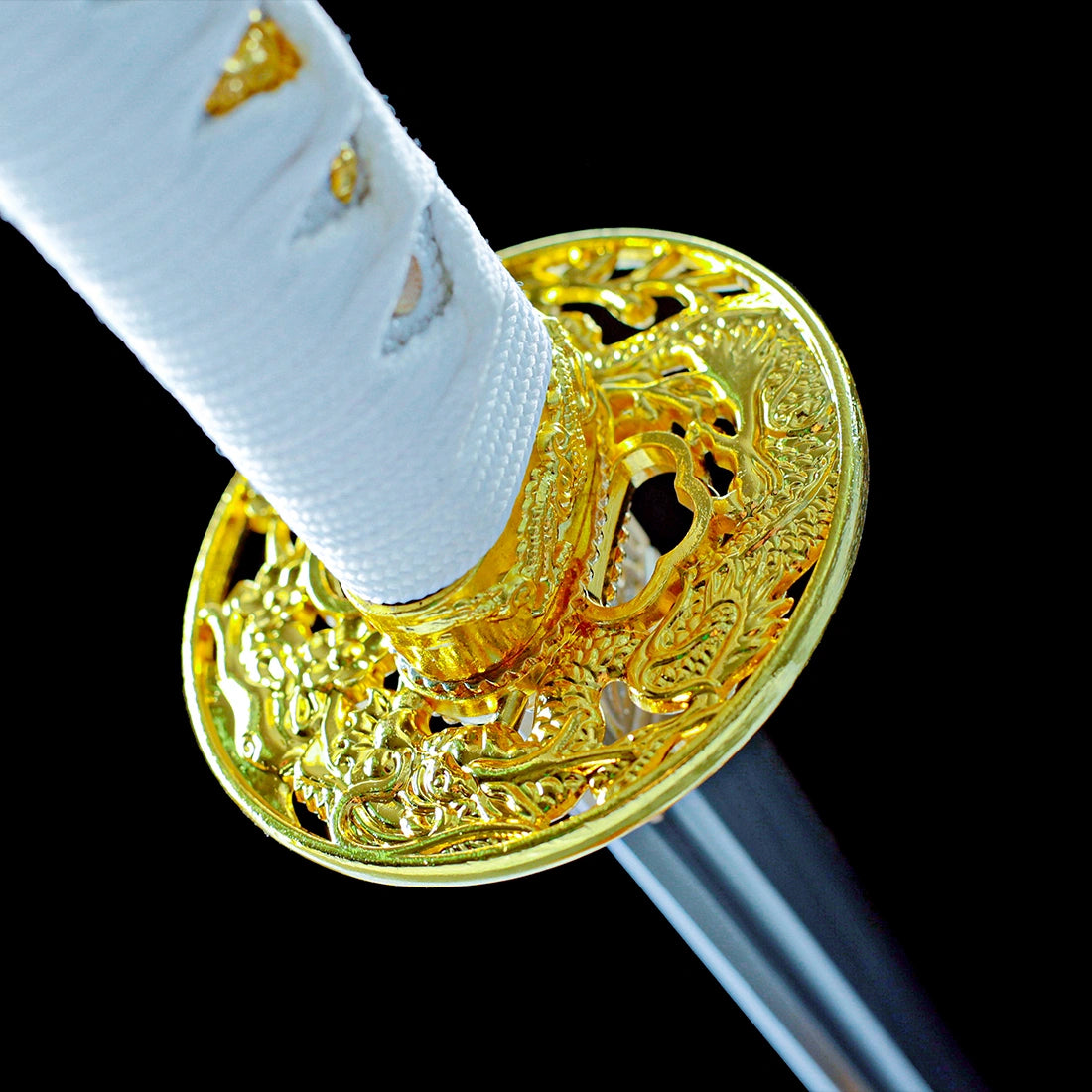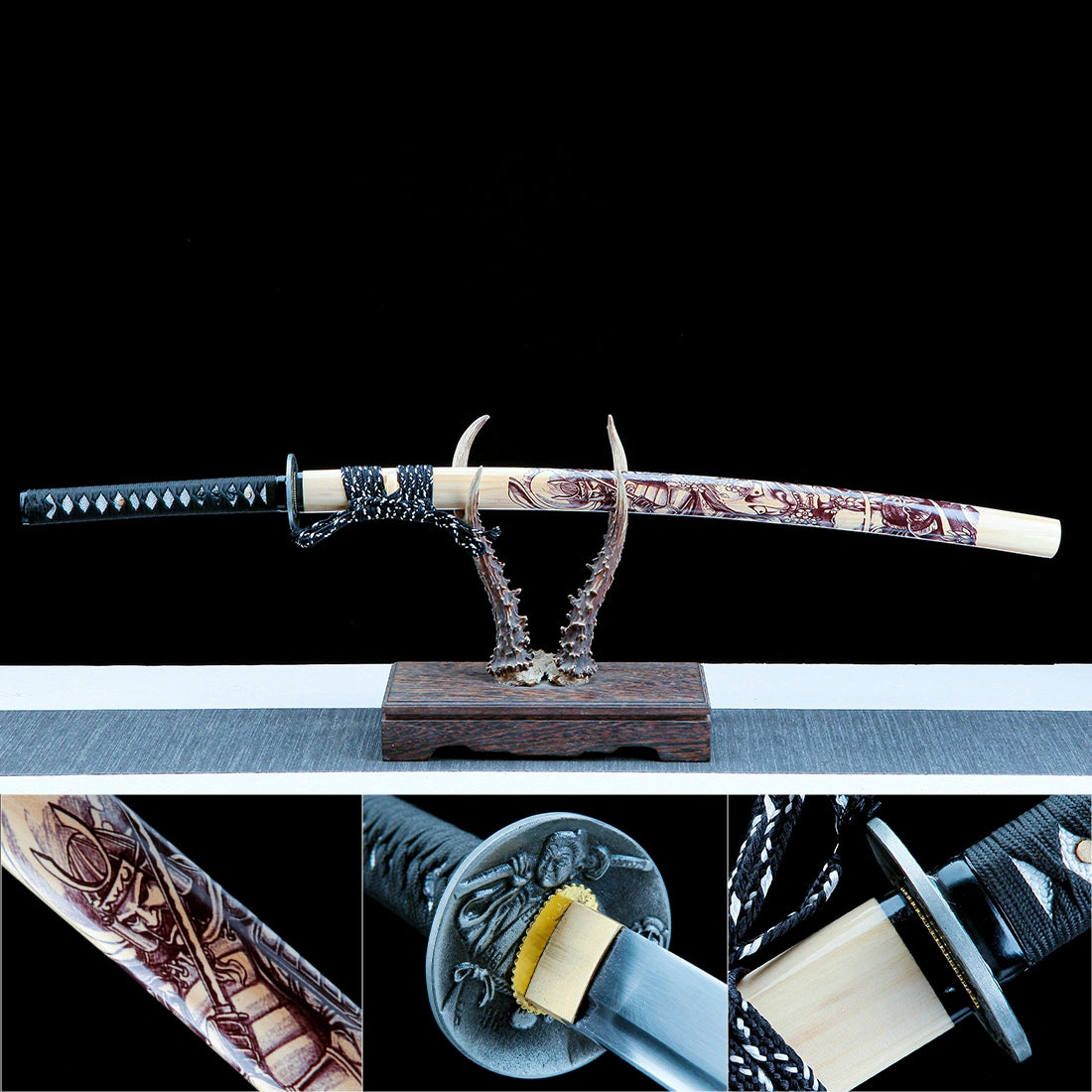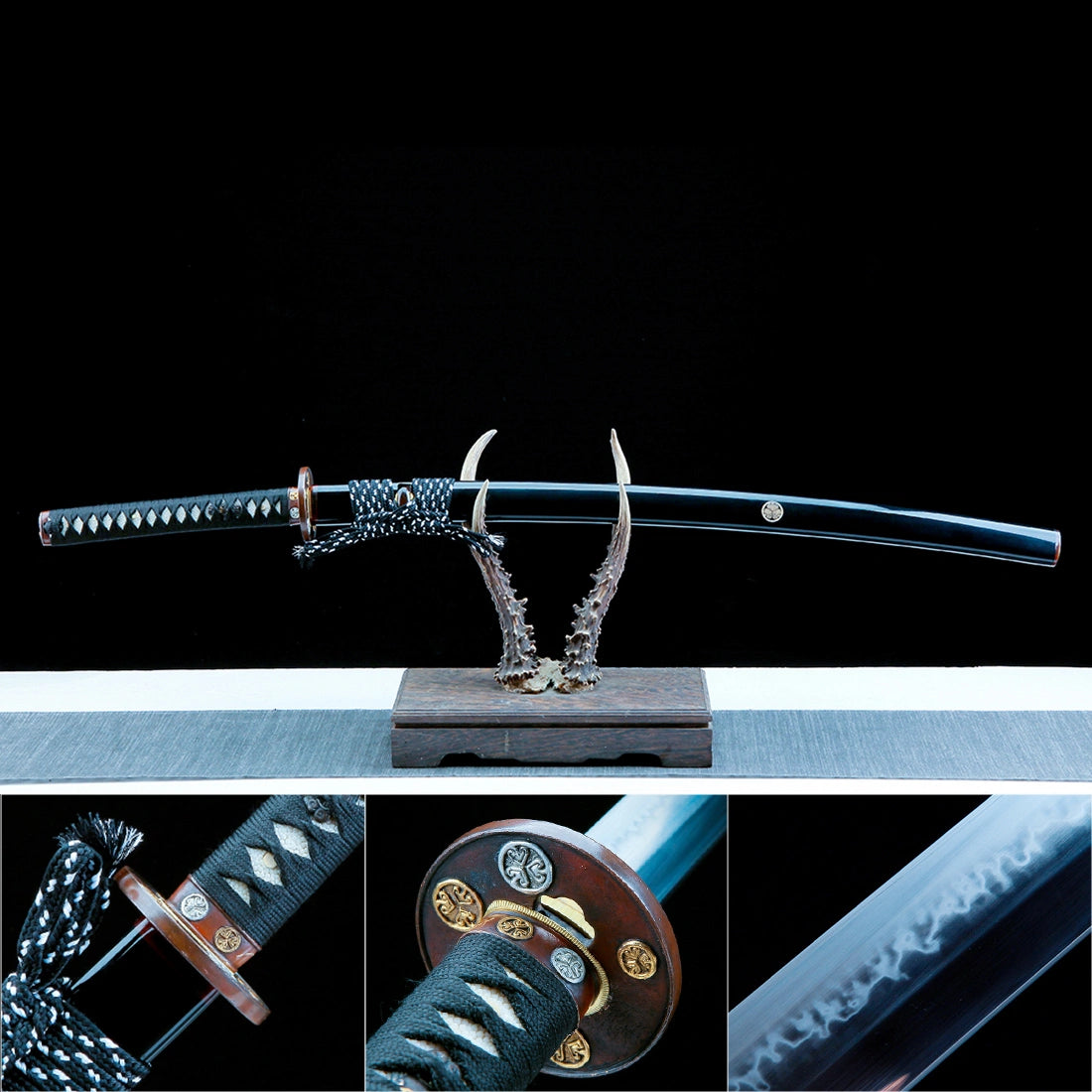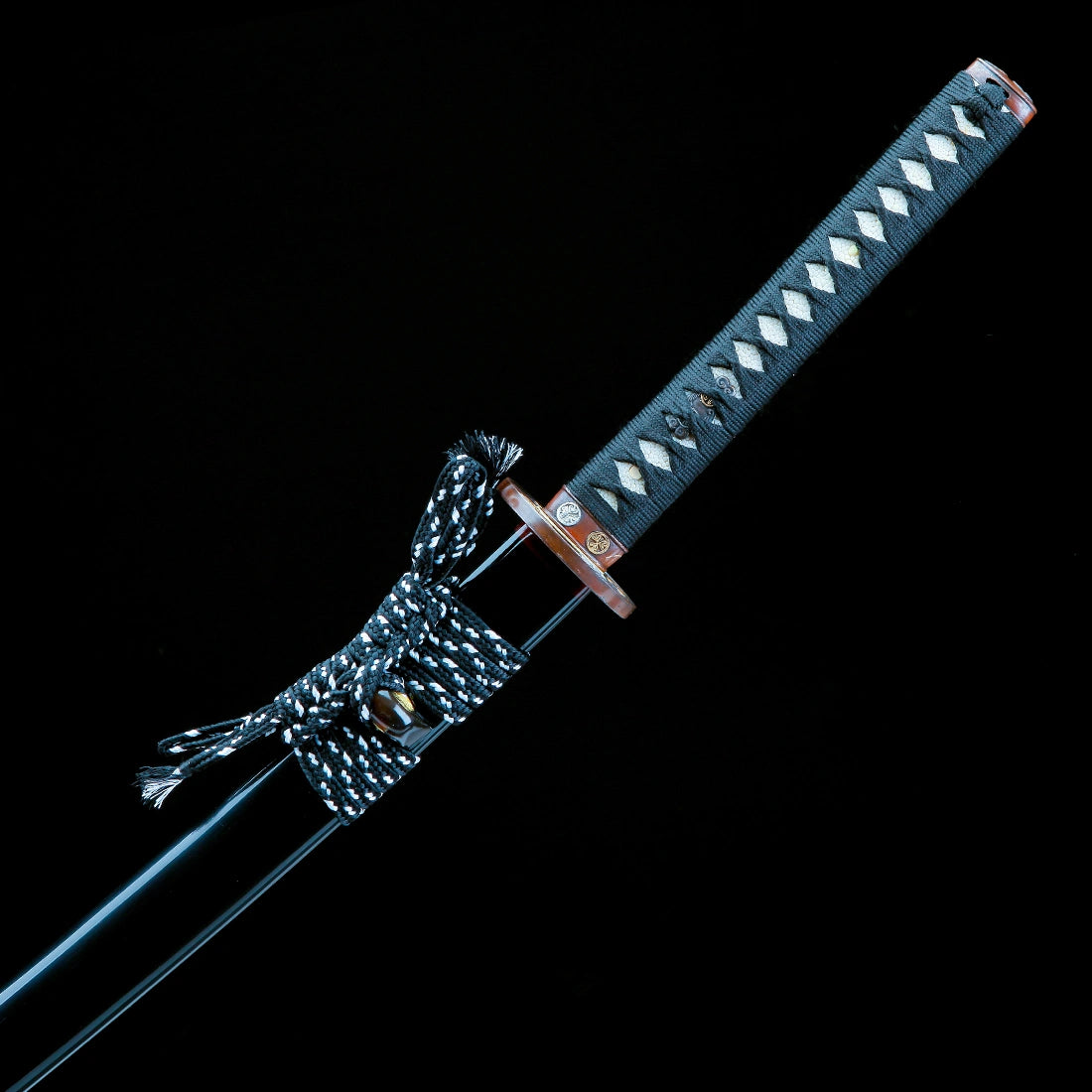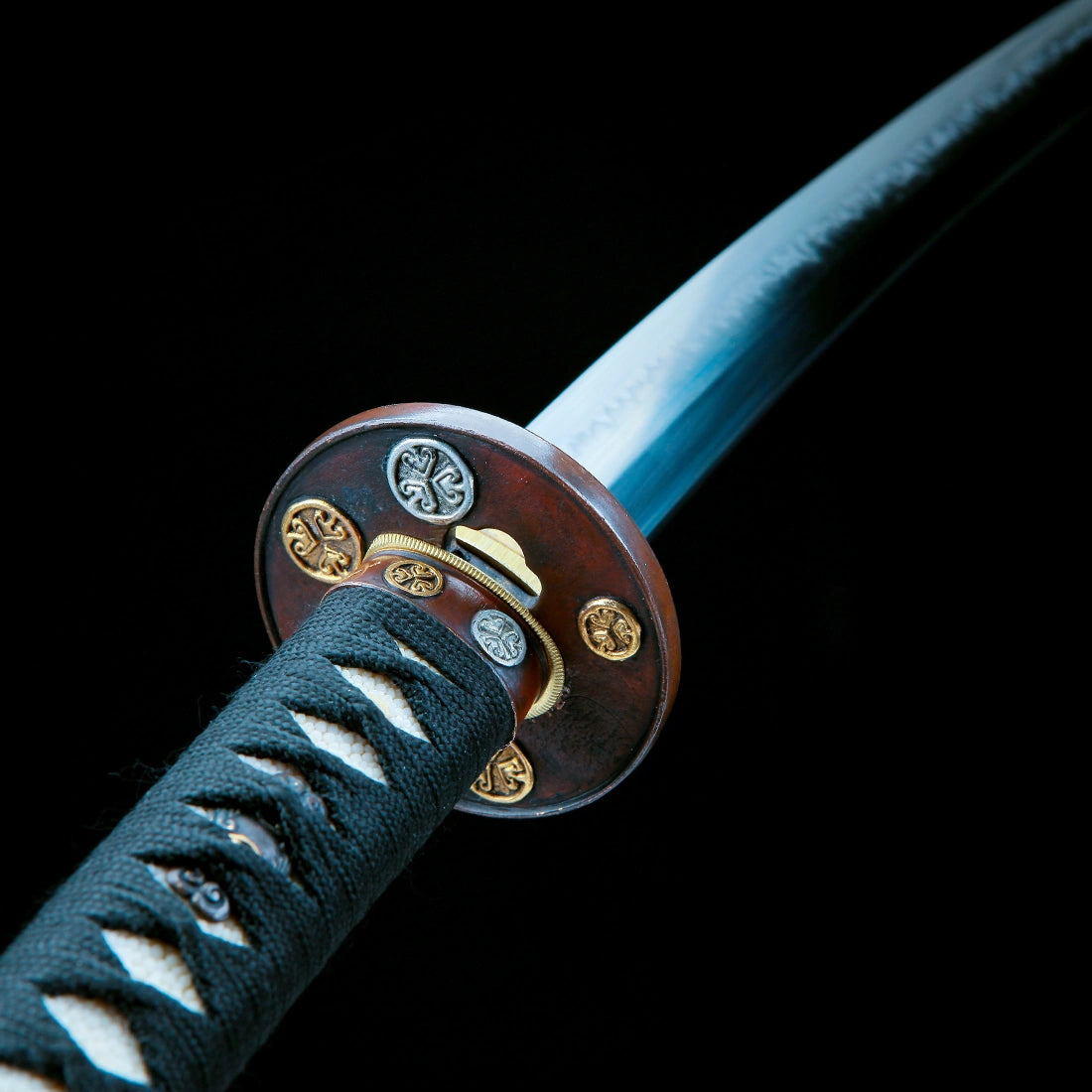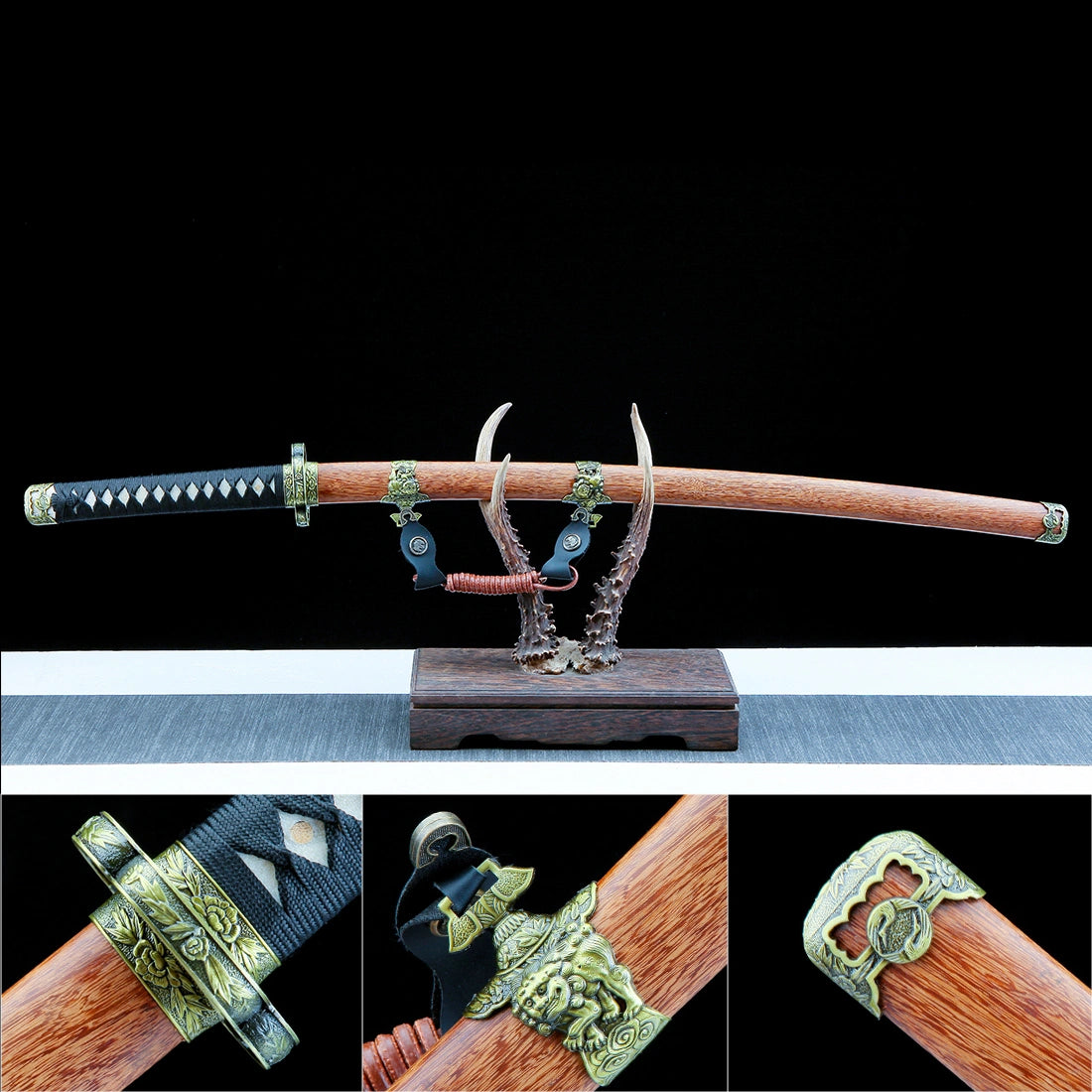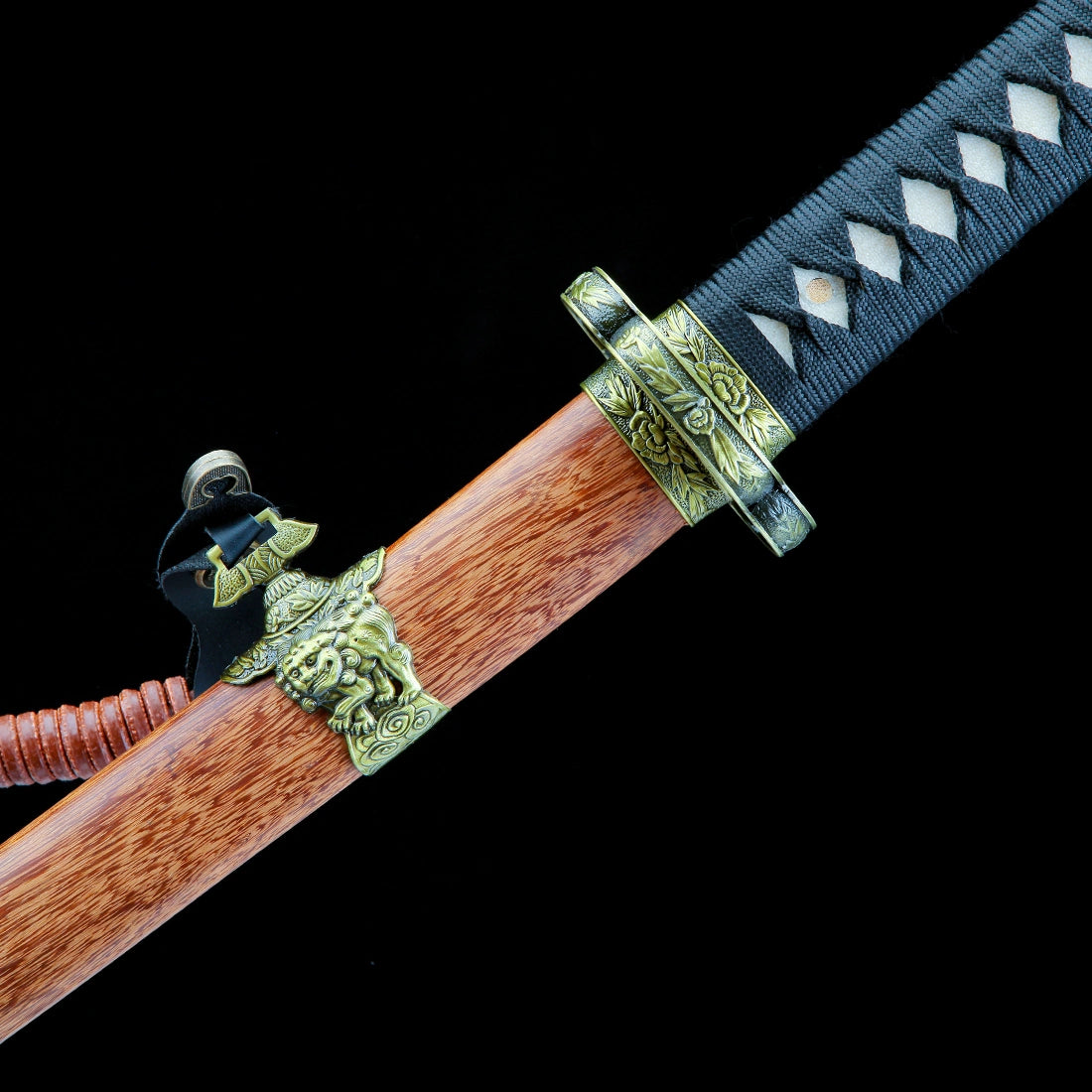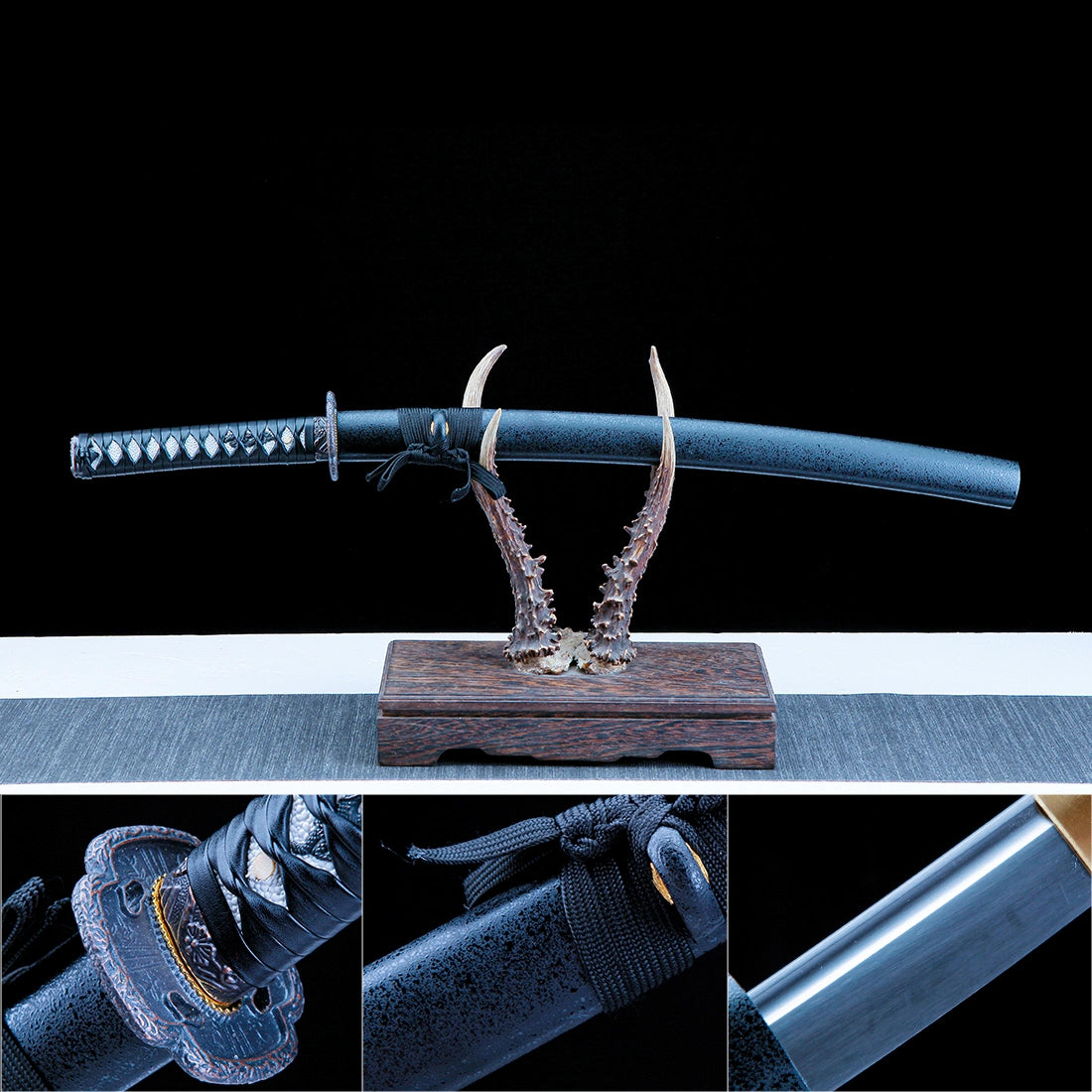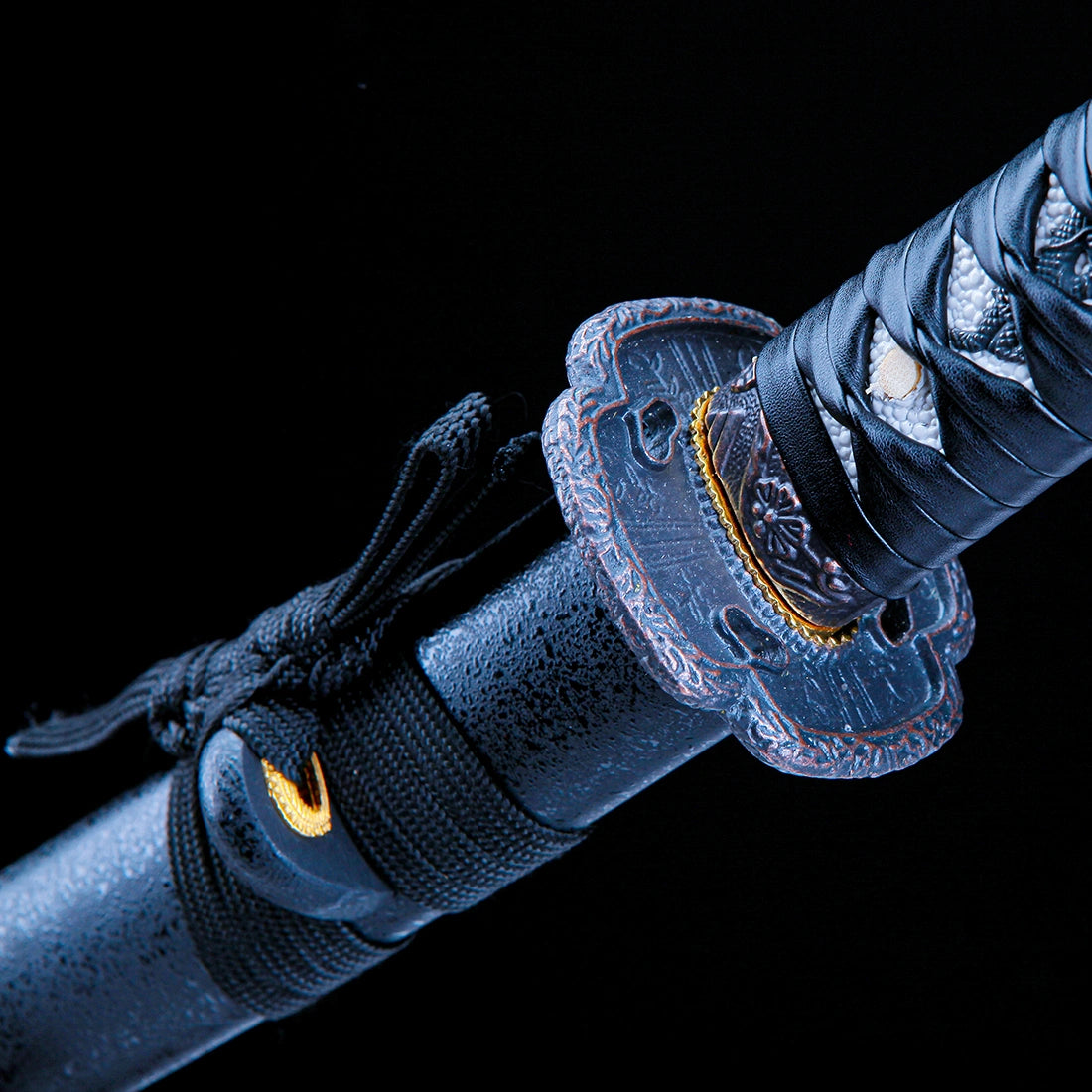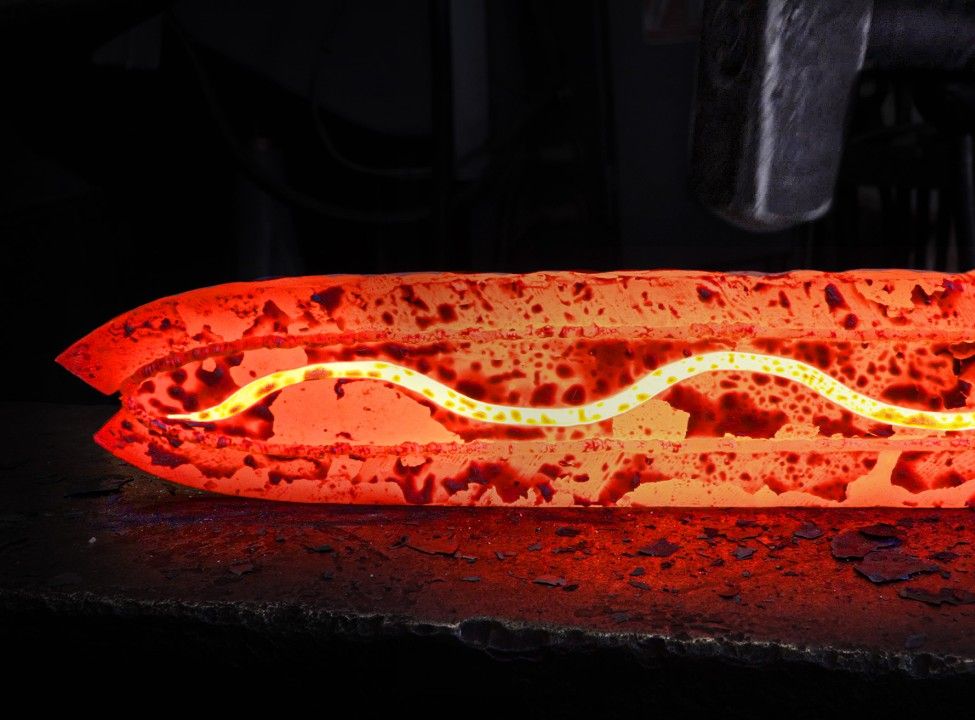Samurai Soul Forged in Steel
Explore Our Japanese Sword
Bestsellers
Pioneer Katana (Tactical Katana™ – Titanium-coated version)
AS SEEN IN
New Arrival
Most Popular Designs
Why Choose Authentic katana.com?
As a family-run swordsmith, we stay true to the tradition of hand-forging, ensuring that every katana we craft is built for real, battle-ready performance.
In today’s world, katanas are more often seen as works of art than weapons. That’s why we place great emphasis on aesthetics—refining every detail, from the grain of the blade to the intricate carvings on the tsuba—to create a visually stunning piece.
We believe you’ll truly feel the beauty and power embodied in every katana we make.
FAQs
Are katanas illegal in the USA?
In the United States, owning a katana is not illegal. However, laws can vary by state and region—some areas have specific regulations on owning, carrying, or displaying swords. For example, in certain states, openly carrying a sword in public may violate local weapon laws. Federal law generally does not prohibit the ownership of Japanese swords. So far, none of our U.S. customers have reported any legal issues related to purchasing a katana.
What is a katana?
The katana is widely known as the iconic samurai sword of Japan. It's famous for its elegant curve, long single-edged blade, and incredible sharpness. The word "katana" first appeared in the Nihon Shoki, a Japanese historical record from 720 AD. The name comes from "kata" (meaning "one-sided" or "single edge") and "na" (blade), which makes it different from the older double-edged sword called the tsurugi.
Can I use my katana sword for cutting?
Yes, the katana swords crafted by AuthenticKatana.com are designed specifically for cutting. With their razor-sharp edges and well-balanced weight, they are ideal for delivering precise and powerful strikes. However, please handle them with care, as the blades are extremely sharp and can be dangerous if used improperly.
What was unique about the katana compared to other swords?
The uniqueness of the katana lies in its curved, single-edged blade and the elegant design rooted in Eastern cultural traditions. Known for its sharpness and durability, the katana features a full tang construction that ensures strength. Its perfect balance and craftsmanship make it ideal for close combat. Beyond its functionality, the katana also holds deep cultural significance in Japan, symbolizing the honor and discipline of the samurai.
Why do you offer both sharp and dull blade options?
This is primarily for safety reasons. We've found that many customers purchase katanas mainly for display purposes—whether as a decorative piece in the living room, office, or personal collection. Some are understandably concerned about the safety risks of a sharpened blade. That’s why we offer a blunt-edge option. It’s important to note that this doesn't compromise the katana’s quality in any way; the blade simply hasn’t been sharpened.
How should I clean and maintain my katana sword?
To keep your katana looking great for years to come, proper care is key. Make sure to oil the blade regularly to prevent rust, and always clean it thoroughly after each use. With a little routine maintenance, your katana sword will stay sharp and beautiful for generations.
What is a katana
The Katana: Japan’s Iconic Longsword
The katana, Japan’s most renowned longsword, is instantly recognizable by its elegantly curved, single-edged blade and distinctive circular or squared guard. Designed for a two-handed grip, it offers exceptional control and precision. Originally the weapon of the samurai—Japan’s feudal warrior elite—the katana has transcended its martial origins to become a symbol of craftsmanship, discipline, and artistry.
Masterful Craftsmanship
At the heart of the katana’s legendary sharpness and durability lies its meticulous forging process. Crafted from Tamahagane steel, the blade undergoes an intricate, ritualistic production involving folding, hammering, and differential tempering. This painstaking method, often taking weeks or even months, results in a blade that balances razor-sharp hardness with remarkable flexibility.
Combat Efficiency & Design
The katana’s curvature enhances its slashing capability, making it devastatingly effective in swift, precise strikes. Its design harmonizes lethality with versatility, allowing both powerful cuts and controlled thrusts—a reflection of the samurai’s strategic mastery.
Cultural & Spiritual Legacy
More than just a weapon, the katana embodies the bushido values of honor, loyalty, and self-discipline. Today, it remains central to martial arts like Kendo, Iaido, and Kenjutsu, while also being revered by collectors and enthusiasts worldwide.
Etymology & Symbolism
The word "katana" derives from Japanese: "kata" (side) and "na" (name), referencing its traditional wearing style—blade-up at the waist. Beyond its name, the katana symbolizes precision, adaptability, and the samurai spirit, making it an enduring icon of Japanese heritage.
Physical Characteristics
- Blade Length: 60–80 cm (23.6–31.5 in)
- Blade Type: Single-edged, curved
- Material: Tamahagane steel (folded & differentially tempered)
- Modern Uses: Martial arts, collecting, ceremonial display, and media
From feudal battlefields to contemporary dojos, the katana’s legacy endures—not just as a weapon, but as a testament to Japan’s rich martial and cultural history.
Katana Sword history
The Evolution of the Japanese Katana: Key Historical Periods
The katana’s development spans over a millennium, shaped by shifting combat needs, artistic refinement, and technological progress. Below are the defining eras in Japanese sword history, each contributing to the katana’s legendary status.
1. Jōkotō Period (Pre-900 AD) – The Foundation
The Jōkotō ("ancient swords") era marks the earliest phase of Japanese sword-making, laying the groundwork for future innovations. These straight or slightly curved blades, though less refined than later katanas, established core principles of balance, sharpness, and metallurgy.
While often overshadowed by later periods, Jōkotō swords are priceless artifacts—offering insights into Japan’s early martial culture and forging traditions. Historians and collectors value them not just as weapons but as cultural milestones.
2. Kotō Period (900–1596 AD) – The Golden Age
The Kotō ("old swords") period represents the zenith of classical katana craftsmanship. Swordsmiths perfected techniques like differential tempering (yakiba) and steel folding, creating blades of unmatched sharpness and resilience.
Key features of Kotō katanas:
✔ Optimized curvature for swift drawing and cutting (iai-jutsu).
✔ Distinct hamon (temper line) patterns, unique to each smith.
✔ Artistic engravings (horimono) blending beauty and function.
These swords became the symbol of the samurai, influencing combat styles and remaining the most coveted by collectors today.
3. Shintō Period (1596–1780 AD) – The Artistic Renaissance
The Shintō ("new swords") era refined the katana into a masterpiece of form and function. With peace under the Tokugawa shogunate, swordsmiths focused on aesthetic elegance without sacrificing lethality.
Notable advancements:
✔ Refined hamon with intricate patterns (e.g., suguha, gunome).
✔ Luxurious fittings (koshirae) using precious metals and lacquer.
✔ Improved steel quality for lighter, more agile blades.
Shintō katanas bridged art and warfare, setting standards for modern sword appreciation.
4. Shinshintō Period (1781–1876 AD) – The Practical Revolution
Amid political turmoil, the Shinshintō ("new-new swords") period prioritized mass production and battlefield efficiency. Swordsmiths adapted to demand, creating durable, lethal, and cost-effective blades.
Key traits:
✔ Simplified forging for faster production.
✔ Stronger, more uniform steel to withstand prolonged combat.
✔ Hybrid designs blending older aesthetics with utilitarian needs.
Though less ornate, Shinshintō katanas were highly functional, reflecting the era’s turbulent demands.
5. Gendaitō Period (1876–Present) – Modern Mastery
The Gendaitō ("modern swords") era merges tradition with technology. Post-Meiji Restoration, katanas transitioned from weapons to cultural icons, crafted using both ancient methods and modern tools.
Today’s katanas feature:
✔ Advanced metallurgy (e.g., high-carbon steels like T10 or 1095).
✔ CNC-assisted precision for consistency.
✔ Diverse roles—martial arts (Kendo, Iaido), collectibles, and film props.
While no longer battlefield tools, Gendaitō katanas uphold the samurai legacy through craftsmanship and symbolism.
Conclusion: A Living Legacy
From Jōkotō’s primal blades to Gendaitō’s precision-forged works, the katana’s evolution mirrors Japan’s history. Each era contributed to its unrivaled sharpness, beauty, and cultural significance, ensuring its place as a timeless icon of martial and artistic excellence.
Katana types
Katana Blade Types: Key Variations and Combat Specializations
The katana’s design evolved to suit different combat needs, resulting in three primary blade types: Shinogi-Zukuri, Shobu-Zukuri, and Kissaki-Moroha-Zukuri. Each offers distinct advantages in battle, reflecting the samurai’s adaptability and craftsmanship.
1. Shinogi-Zukuri – The Classic Samurai Blade
✔ Most common and versatile katana design.
✔ Features a defined ridge line (shinogi) for structural strength.
✔ Balanced for slashing, cutting, and defensive maneuvers.
✔ The standard choice for samurai, combining durability and flexibility.
Why it stands out:
The Shinogi-Zukuri’s optimized geometry made it the go-to battlefield weapon, excelling in both single strikes and prolonged duels.
2. Shobu-Zukuri – The Streamlined Slasher
✔ Sleek, continuous curve with no yokote (transition line at the tip).
✔ Designed for fluid, rapid slashing attacks.
✔ Lighter and faster than Shinogi-Zukuri but less versatile in thrusting.
Best for:
Iaido practitioners and quick-draw techniques, where smooth, uninterrupted cuts are crucial.
3. Kissaki-Moroha-Zukuri – The Double-Edged Specialist
✔ Rarest of the three, featuring a partially double-edged blade.
✔ Sharper, elongated tip (kissaki) enhances thrusting capability.
✔ Retains cutting power while excelling in penetrating strikes.
Combat role:
Ideal for armor-piercing or precise, piercing attacks, though less common in general warfare.
Conclusion: Form Follows Function
From the all-purpose Shinogi-Zukuri to the specialized Kissaki-Moroha-Zukuri, each katana type reflects a deliberate balance of artistry and lethality. Understanding these designs offers deeper insight into samurai combat philosophy and the katana’s enduring legacy.
What are katanas made of
Katana Steel Types: From Ancient Forge to Modern Blade
The choice of steel determines a katana's soul - its cutting ability, resilience, and historical authenticity. Let's examine the key materials that have shaped Japanese swordmaking through the centuries.
Tamahagane: The Sacred Steel of Samurai
Forged in the mystical fires of traditional tatara furnaces, Tamahagane represents the pinnacle of ancient Japanese metallurgy. Craftsmen smelt iron sand for three days and nights, creating a steel with natural carbon variations (0.5%-1.5%) that give each blade its unique character. The labor-intensive folding process not only removes impurities but creates the distinctive grain patterns (hada) prized by collectors. While only about two dozen licensed smiths still work with authentic Tamahagane today, these blades remain the gold standard for Nihonto purists.
1060 High Carbon Steel: The Modern Warrior's Choice
Balancing performance and affordability, 1060 steel has become the workhorse of contemporary katana production. With its 0.60% carbon content, it achieves an ideal harmony of edge retention (HRC 56-58) and flexibility - perfect for martial artists who need a reliable cutter that won't break the bank. Though it requires more maintenance than stainless variants, many consider its authentic feel worth the extra care.
Specialized Steel Variants
Beyond these standards, several specialized steels cater to specific needs:
- 5160 Spring Steel brings exceptional toughness to the table, making it the go-to choice for heavy cutting tests and battle-ready replicas. Its chromium content adds durability while maintaining good flexibility.
- T10 Tool Steel stands at the opposite end with its ultra-high 1.0% carbon content, achieving remarkable hardness (HRC 60+) for display pieces and collector's items. However, this comes at the cost of reduced shock absorption.
- 1095 High Carbon offers razor-like sharpness preferred by professional cutters, while High Manganese alloys provide superior impact resistance for those seeking maximum durability.
Choosing Your Blade's Soul
Traditionalists will always favor Tamahagane for its historical authenticity and unique mechanical properties. Practical martial artists typically prefer 1060 or 1095 carbon steel for everyday use. For those prioritizing durability, 5160 spring steel offers the best balance, while T10 satisfies collectors wanting exhibition-grade pieces.
Remember that the steel type tells only part of the story - proper heat treatment (yaki-ire) and craftsmanship ultimately determine about 70% of a blade's performance. Modern smiths continue to innovate by blending traditional techniques with contemporary metallurgy, creating "neo-traditional" blades that honor the past while embracing new possibilities.
How are katanas made
The Art of the Katana: A Master Craftsman's Journey
From raw steel to samurai soul, the creation of a katana represents one of mankind's most exquisite unions of form and function. This sacred process, refined over centuries, transforms base metal into living art through twelve distinct stages of craftsmanship.
1. Steel Selection: Choosing the Sword's Soul
The journey begins with selecting the blade's essence - Tamahagane for traditionalists seeking authentic Nihonto, or high-carbon steels like 1060 for practical modern applications. This critical decision influences every subsequent step, determining the sword's spirit and capabilities.
2. The Sacred Smelting Ritual
In traditional forging, the tatara furnace burns for 72 continuous hours, its belly filled with iron sand and charcoal. Master smiths carefully monitor temperatures reaching 2,500°F (1,370°C), producing the distinctive layered steel that gives Japanese blades their legendary flexibility and strength.
3. The Dance of Folding
The smith begins the mesmerizing orikaeshi tanren process - folding the steel upon itself up to sixteen times. Each fold:
- Expels impurities
- Creates up to 65,000 microscopic layers
- Establishes the foundation for the blade's distinctive grain pattern
4. Forging the Soul
With precise hammer strikes, the smith shapes the sunobe (blank form). This requires an intimate understanding of metal's memory - knowing exactly how each blow affects the steel's internal structure and future performance.
5. Clay Tempering: The Blade's Baptism
The smith paints a special refractory clay mixture along the blade's spine before quenching. This differential hardening creates:
- The razor-sharp hamon (temper line)
- A hard edge (HRC 60-65)
- A flexible spine (HRC 40-45)
6. The Revelation
After quenching in water, the blade emerges with its true character revealed - the hamon pattern serving as the smith's signature and the steel's genetic code.
7. The Polisher's Prayer
A togishi (polisher) spends 100-200 hours revealing the blade's soul through seven grades of waterstones. This process:
- Brings out the hada (grain pattern)
- Perfects the geometry
- Creates the mirror-like finish
8. The Final Assembly
Master craftsmen add the koshirae (fittings):
- Tsuka (handle) wrapped in samegawa (ray skin) and tsuka-ito (silk cord)
- Tsuba (guard) often featuring intricate designs
- Saya (scabbard) lacquered for protection
The Living Blade
A true katana is never "finished" - it continues to evolve through use and care. The oil applied by its owner becomes part of its story, the patina of age recording its journey through time.
This sacred process, requiring 6-12 months for traditional blades, represents more than manufacturing - it's a spiritual journey where steel, fire, water, and human will unite to create something transcendent. The modern world may have changed the tools, but the soul of the katana remains eternal in the hands of true masters.
Famous Japanese Sword Swordsmiths
The Legendary Artisans Behind the Katana
The katana's fame extends far beyond its blade—it is also a testament to the master swordsmiths who forge these extraordinary weapons. Renowned for their meticulous attention to detail, peerless craftsmanship, and the profound historical significance embedded in every sword, these artisans have become legends in their own right.
Masamune and Muramasa: A Tale of Contrasts
Among the most celebrated Japanese swordsmiths, two names stand out: Masamune and Muramasa.
- Masamune is revered as the pinnacle of virtue and technical mastery. His blades, admired for their beauty and flawless functionality, represent the gold standard of Japanese swordsmithing. Even today, his work continues to inspire generations of sword-makers.
- Muramasa, by contrast, carries a darker legacy. Though equally skilled, his katanas are shrouded in myth—most infamously, the belief that they are "cursed." Legends claim Muramasa's blades thirst for blood, even driving their wielders to madness. Yet, their razor-sharp precision remains undeniable, securing their place in history.
Together, their stories embody the duality of the sword: a weapon capable of both justice and destruction.
Modern Masters: Carving a New Legacy
While traditional swordsmiths like Masamune remain immortalized in history, contemporary artisans are forging their own path. Today's masters not only uphold ancient techniques but also navigate the modern world as skilled entrepreneurs, bringing the art of the katana to a global audience.
Katana Parts:
Anatomy of the Katana: A Masterpiece of Precision Engineering
The katana is far more than a simple blade—it is an intricate assembly of specialized components, each meticulously crafted to serve a distinct purpose. From the razor-sharp steel to the ornamental fittings, every element reflects centuries of functional and artistic refinement.
The Blade & Its Structural Components
- Habaki – A wedge-shaped metal collar that secures the blade within the scabbard (saya), ensuring a snug fit.
- Seppa – Thin metal washers placed on either side of the tsuba (handguard) to stabilize the fittings.
The Handle (Tsuka)
- Tsuka-ito – The tightly woven silk or cotton wrap providing grip and aesthetic elegance.
- Mekugi – A bamboo peg anchoring the blade firmly to the handle.
- Fuchi – A metal sleeve reinforcing the base of the handle.
- Kashira – The pommel cap, completing the handle’s structure.
- Menuki – Decorative ornaments beneath the tsuka-ito, enhancing grip and symbolism.
- Samegawa – The textured ray skin (same-hada) beneath the wrap for added traction.
The Scabbard (Saya) & Its Details
- Saya – The lacquered wooden sheath protecting the blade.
- Koiguchi – The reinforced mouth of the scabbard.
- Kurigata – A knob for attaching the sageo (cord).
- Kojiri – The end cap shielding the scabbard’s tip.
Accessories & Decorative Elements
- Tsuba – The handguard, balancing the sword and deflecting attacks.
- Kozuka – A small utility knife housed in the saya.
- Kōgai – An ornamental hairpin/skewer stored alongside the blade.
- Mekugi-ana – The holes drilled for the mekugi peg.
- Shitodome – Metal eyelets reinforcing the sageo’s attachment point.
- Kaeshizuno – A hook-like fitting to secure the sageo when tied.
Katana Cleaning and Storage
Proper Katana Storage & Maintenance: Preserving the Blade’s Legacy
To ensure your katana remains in pristine condition for generations, proper storage and regular care are essential. Follow these time-tested techniques to protect its edge, finish, and structural integrity.
1. Correct Storage Methods
- Horizontal Placement – Store the katana on a stable rack or stand, with the cutting edge facing upward. This prevents blade warping and minimizes accidental contact with the sheath.
- Use the Saya (Scabbard) – The wooden scabbard shields the blade from dust, humidity, and physical damage. Ensure the interior is clean and dry before sheathing.
- Avoid Moisture & Direct Sunlight – Store in a climate-controlled environment (low humidity, moderate temperature) to prevent rust and wood deterioration.
2. Essential Cleaning & Maintenance
A disciplined cleaning routine is critical to prevent rust and maintain the blade’s sharpness.
- Specialized Cleaning Kit – Use a traditional katana maintenance kit containing:
- Step-by-Step Care
Pro Tip: Inspect the blade monthly for early signs of rust or tarnish.
Katana store
AuthenticKatana.com – Your Trusted Source for Martial Arts Weapons & Traditional Katanas
At Katana Store, we are dedicated to providing the finest selection of authentic katanas and martial arts weapons, including bokken, bo, jo, iaito, wakizashi, Chinese swords, tonfa, sai, shuriken, kunai, and more. We also offer high-quality accessories and equipment to enhance your martial arts practice.
The Legendary Katana – A Masterpiece of Craftsmanship
No sword embodies the spirit of Japan quite like the katana. Revered for its razor-sharp edge, perfect balance, and timeless elegance, this iconic blade is a symbol of discipline and artistry. If you seek a functional, hand-forged katana crafted with precision, Authentic Katana.com is your ultimate destination.
Unmatched Quality, Forged by Tradition
Every katana in our collection is meticulously handcrafted in Asia by skilled swordsmiths who uphold centuries-old techniques. We use only the finest materials to ensure that our swords are not just stunning display pieces but fully functional weapons suitable for martial artists, collectors, and enthusiasts alike.
Why Choose Authentic Katana.com?
✔ Authentic Hand-Forged Blades – Each Japanese sword is tested for durability, sharpness, and balance.
✔ Premium Accessories – Complete your collection with sword stands, maintenance kits, and carrying cases.
✔ Diverse Selection – From wakizashi and tanto to Chinese swords, we cater to all martial arts needs.
✔ Affordable Excellence – Whether you're a beginner or a seasoned collector, we offer katanas at various price points to fit your budget.
More Than a Store – A Community
At Katana Store, we’re passionate about preserving the legacy of the samurai. Our team is here to guide you in finding the perfect katana—whether for training, display, or collection.
Explore the art of the samurai today at Authentic Katana.com, where tradition meets exceptional craftsmanship.
Real katana
The Timeless Art of the Katana – A Legacy of Steel and Spirit
For centuries, the katana has stood as more than just a weapon—it is a masterpiece of Japanese history, culture, and craftsmanship. Each authentic blade is painstakingly hand-forged by master artisans using centuries-old techniques, transforming raw steel into a symbol of discipline, artistry, and tradition.
At Authentic Katana.com, we honor this legacy by offering authentic, hand-forged katanas crafted with the same meticulous methods passed down through generations of Japanese swordsmiths. Every blade is forged from premium steel, shaped with precision, and tested for durability, sharpness, and balance—ensuring a sword that meets the highest standards of quality and authenticity.
Why Our Katanas Stand Apart
✔ True Artisan Craftsmanship – No mass production. Every katana is a unique work of art, reflecting Japan’s rich sword-making heritage.
✔ Functional & Aesthetic Excellence – Whether you seek a display piece for your home or a battle-ready blade for martial arts, we have the perfect sword for you.
✔ Historical & Cultural Significance – We respect the katana’s revered place in history, offering blades that embody its spiritual and martial essence.
✔ From Damascus to Traditional Steel – Our collection includes hand-forged Damascus katanas and classic folded steel blades, each a testament to unmatched craftsmanship.
A Sword for Every Purpose
- Collectors & Enthusiasts – Own a piece of history with museum-grade katanas.
- Martial Artists – Train with fully functional, battle-ready swords.
- Connoisseurs of Art – Admire the elegant hamon (temper line) and intricate fittings that define true Japanese swords.
At Authentic Katana.com, we don’t just sell katanas—we preserve a tradition. Explore our collection and own a blade worthy of the samurai legacy.







